
Admin
-
Posts
7,469 -
Joined
-
Last visited
Content Type
Profiles
Forums
Events
Store
Gallery
Community Map
Posts posted by Admin
-
-
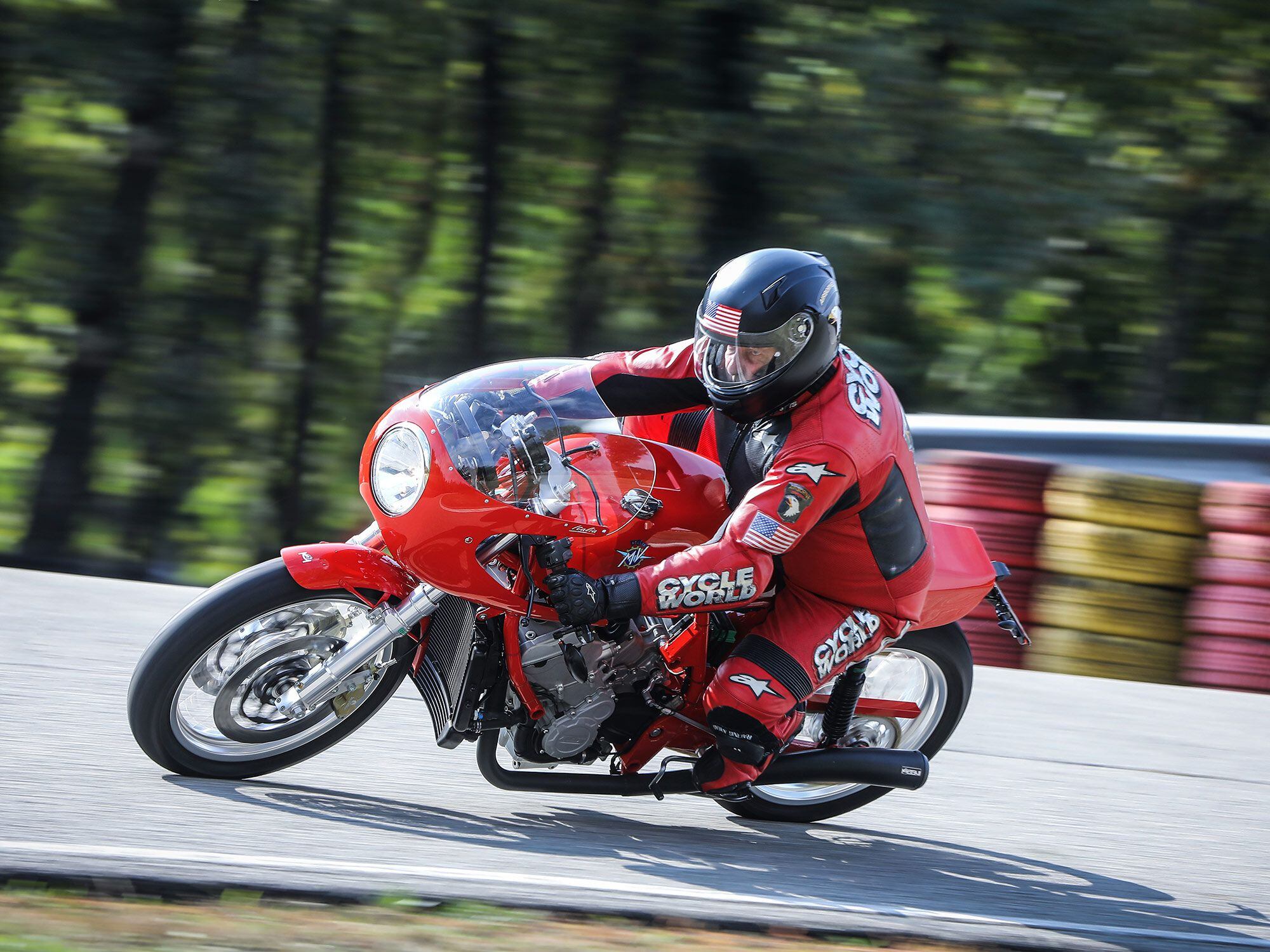
The Magni Italia is powered by MV Agusta’s 800cc triple. (MV Agusta/)After Arturo Magni’s retirement from MV Agusta Racing, the legendary team manager formed Magni Atelier to keep the ultra-refined technical DNA of the latest MV Agusta racing bikes alive. In association with his sons, Giovanni and Carlo, Magni gave life to a sequel of models that thoroughly duplicated MV Agusta’s classic double cradle frame structure and their extraordinarily balanced geometrical characteristics. Also, the styling, graphics, and elegant execution were impeccable down to the last detail.
At the time, MV Agusta was totally out of business. Consequently, Magni and sons had to adapt their classic design to engines that, in some cases, shared nothing with the neat design of the MV Agusta three- and four-cylinder GP units. That was the case with the Moto Guzzi 1,100cc 90-degree V-twin, and yet the replicas the Magnis created re-created both the visual and the dynamic feeling of an actual classic MV Agusta. They also put the mighty Suzuki GSX 1,158cc engine to very good use, adapting it to power the Sport 1200 S, a replica of the breathtaking MV Agusta 750 Sport.
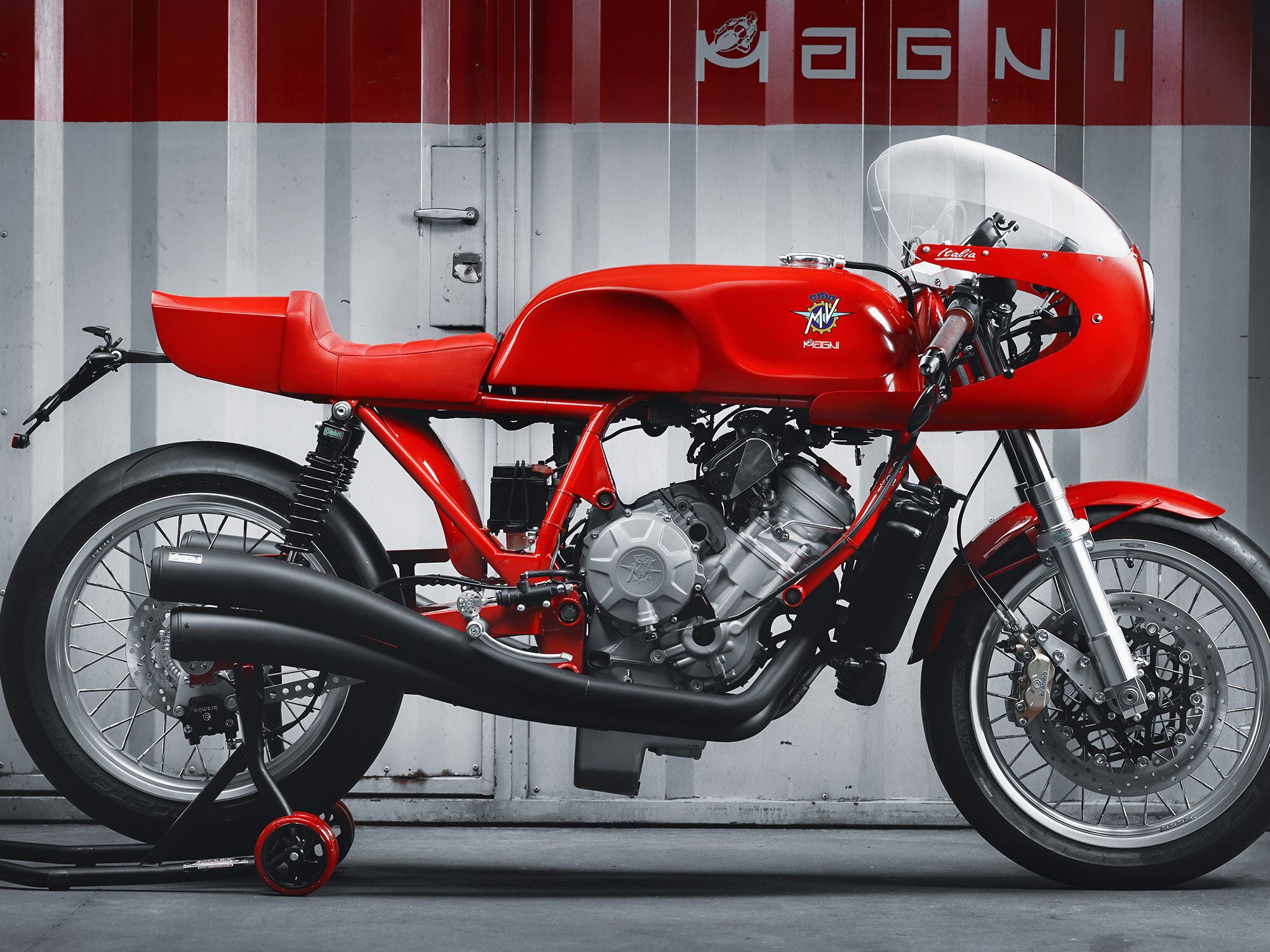
Magni’s Italia takes from the RiloRosso and Tributo 750 S. (MV Agusta/)Creative versatility and supreme technical competence made every new Magni model a superb sportbike and a great homage to the MV Agusta tradition. After the MV Agusta brand was resurrected by the Castiglioni brothers in 2013, Magni Atelier built a few special editions of the Brutale 1090. Named Storia, it was dressed in a red-white-and-blue color scheme also inspired by the MV Agusta 750 Sport. It was a great-looking special, but the Magnis had focused their attention on the MV Agusta 800cc three-cylinder unit, which was compact and light with adequate power.
The following year, at EICMA 2014, Magni Atelier unveiled the striking FiloRosso. This new creation by Giovanni Magni came at a hard time for the family; at the show, Giovanni told me that Arturo Magni was not feeling well. Arturo’s passing a few weeks later was a tremendous loss for Giovanni and Carlo; Arturo was a great father and an even greater manager.
Cycle World tested the FiloRosso in July 2015. It was a highly emotional ride aboard a bike patterned on Giacomo Agostini’s GP bikes of the 1970s, complete with a full racing fairing and three separate exhaust megaphones. The sound alone was terrific. With the FiloRosso, Magni Atelier turned the page, using the bike as the platform on which it would develop a line of highly exclusive models.
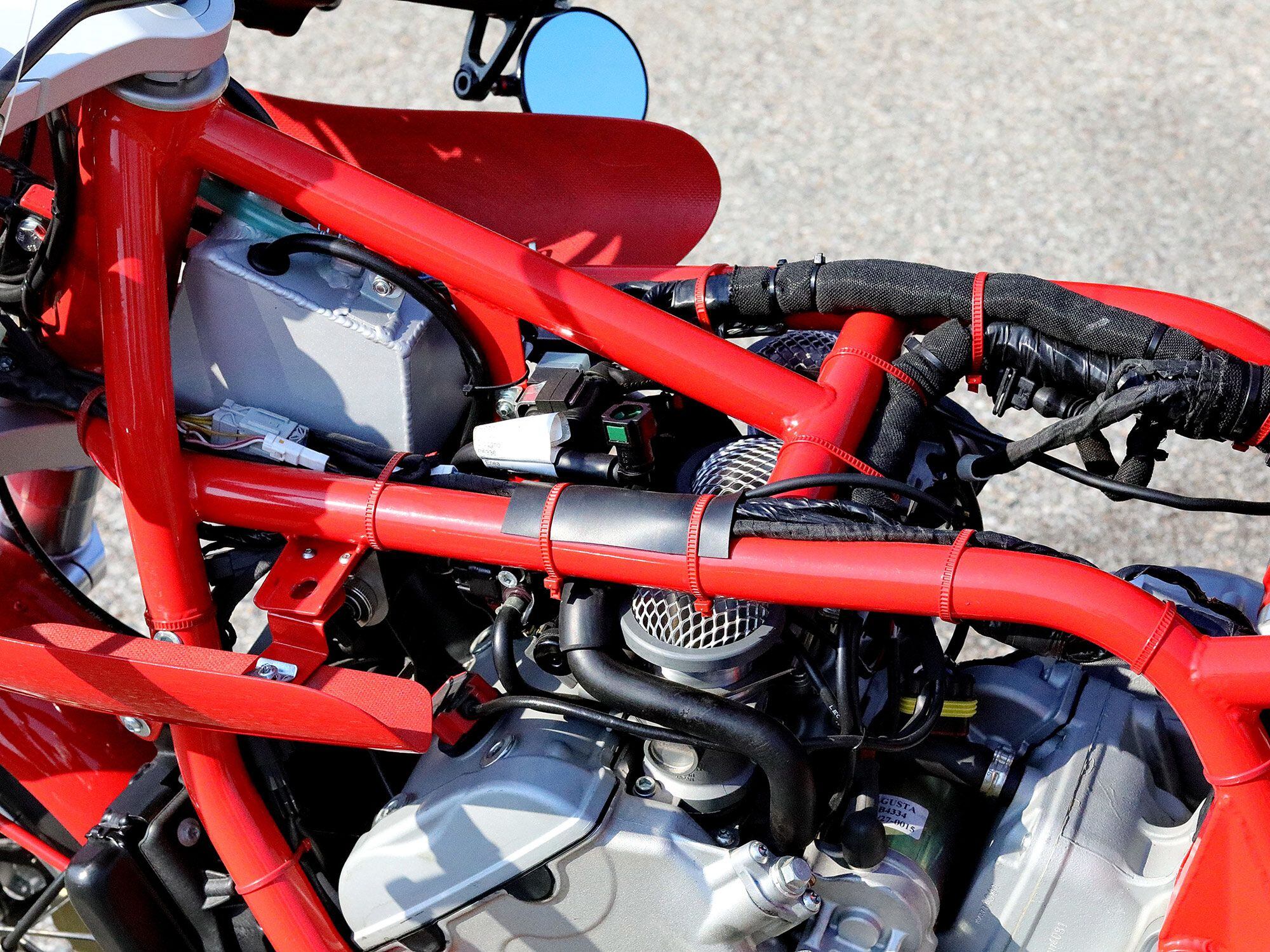
Beneath the Italia’s steel tube frame sits an MV Agusta 800cc triple fed through classically shaped velocity stacks. (Bruno dePrato/)The 750S Tributo, another wonderful replica of the MV Agusta 750 Sport, was tested by Cycle World in early 2019. This bike was a big surprise as, while it was based on the FiloRosso chassis, it proved much more versatile thanks to the subtle modifications designed to make rider ergonomics more rational and comfortable. Yet the 750S Tributo is an absolutely pure sportbike in the classical sense.
With the experience earned from making FiloRosso and the 750S Tributo, Giovanni created the Magni Italia. At first glance, this motorcycle looks like a naked FiloRosso with a top fairing, but the influence of the 750S Tributo is evident in its chassis geometry and riding position. On the Magni Italia, Giovanni adopted the 2-inch-longer swingarm from the 750S Tributo to obtain the same 56-inch wheelbase. Giovanni says he will adopt this chassis modification for the next batch of FiloRossos. The longer swingarm was a positive change for the dynamic qualities of the chassis, granting all models a very mild front end geometry: 25 degrees of steering axis rake, 60mm-offset triple clamps, and 85mm of trail. As with the FiloRosso and 750S Tributo, the Magni Italia rolls on 110/80-18 Metzeler Racetec RR K1 tires in front and 160/60-18s at the rear.
The Italia shines in terms of styling, execution, and finishing. The quality is superb down to the last detail, and the sinuous design features three exhaust megaphones, which add extra dynamic muscularity to the bike’s lower profile. All body and chassis components that Magni utilizes in its creations are custom made: The forks and rear dual shock absorbers are by local specialist Oram, wire wheels are by JoNich, and the tank is hand-hammered aluminum.
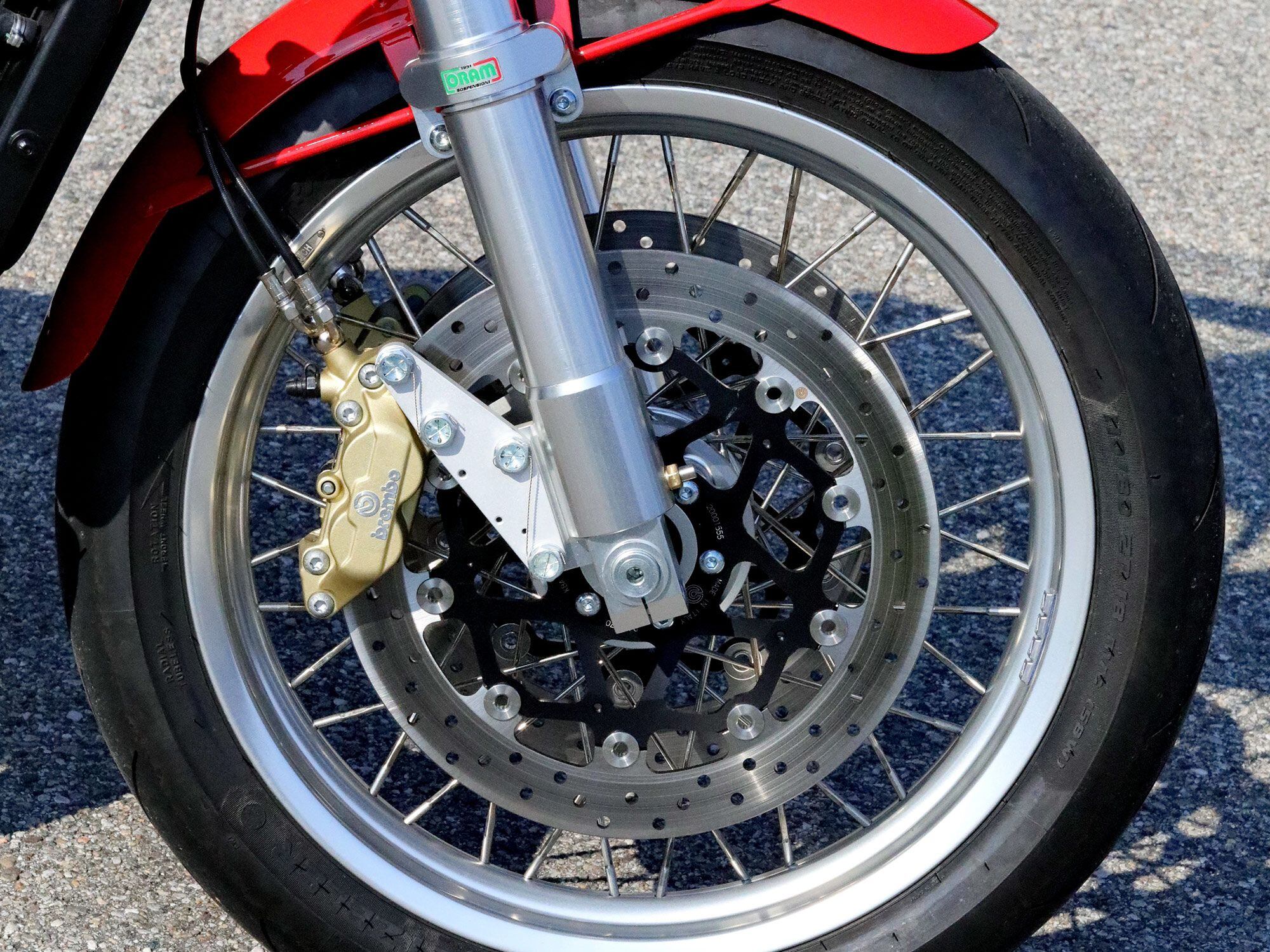
The Oram fork and JoNich wire wheels are custom made just for the Magni Italia. (Bruno dePrato/)The brakes are Brembos, but the calipers are not the latest radially mounted type but more traditional units, as fork specialist Oram still patterns its forks on the classic Ceriani units. The calipers are mounted with the assistance of an additional plate. Only the fork stanchion diameter has gone up, from 35mm to 43mm. The handmade seat got a little extra padding to increase its height from the 30.3 inches of the FiloRosso to 31.5; this improves the man-machine interface, as the rider’s legs are far less compressed than on the FiloRosso.
The tank is the same as on FiloRosso, making for a stretched-arm riding position as the distance between the seat and the clip-ons is a significant 35.5 inches. Installing my 5-foot-10 frame aboard was not a problem, but that stretched-out reach to the clip-ons is not my favorite riding style.
The exhaust note from the three megaphone “silencers” is more raucous than I remembered it from the straight units mounted on the 750S Tributo. But it is simply terrific.
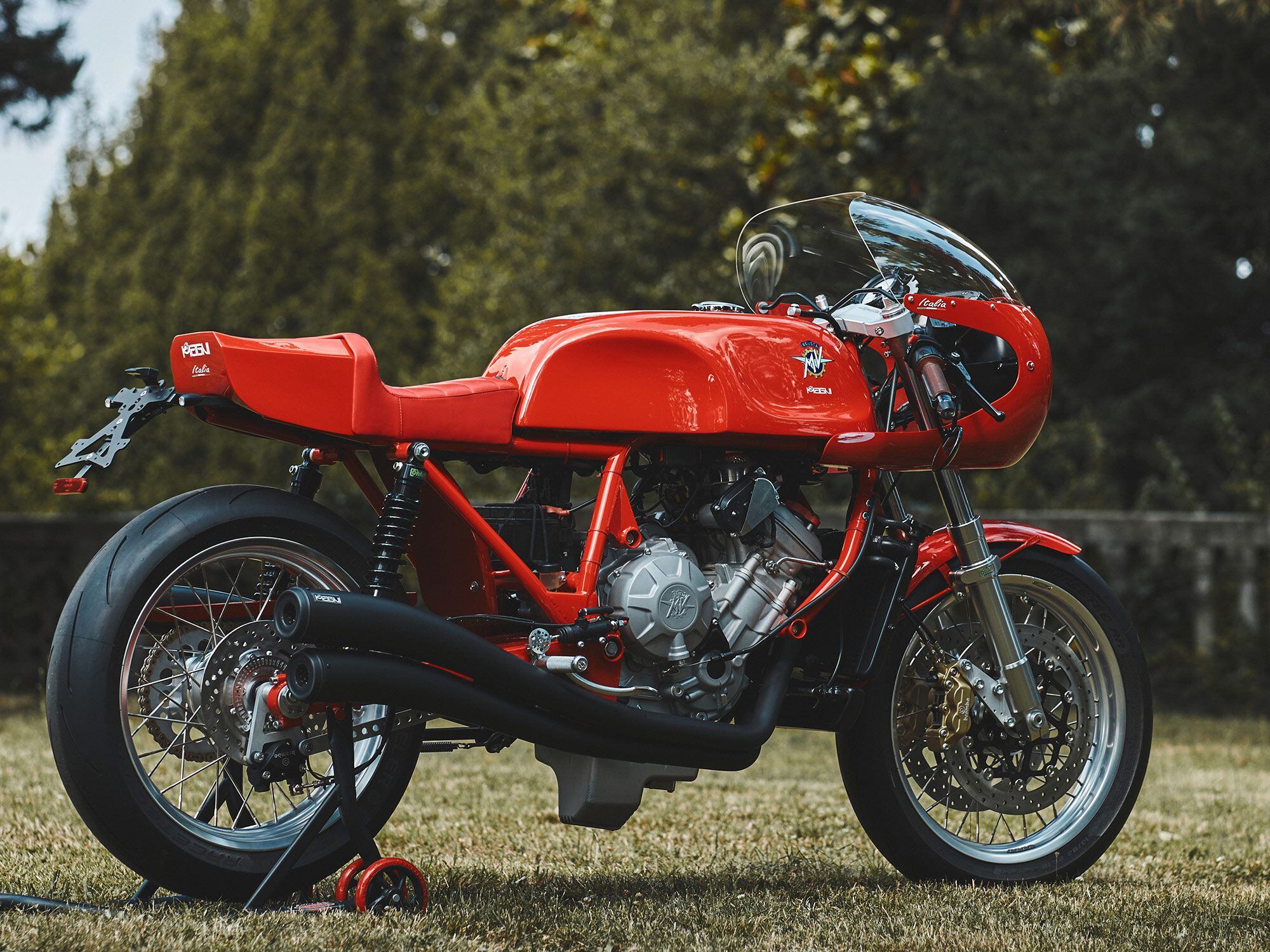
Three megaphones belt out a sonorous tone. (MV Agusta/)The Magni Italia is beautifully light and agile. Despite the stretched-arm riding posture, I felt completely in command of a front end that communicates easily through the clip-ons. The MV Agusta 800cc Triple in its 110 hp configuration is all it takes to make the 342-pound bike shine in terms of acceleration and throttle response during its progression to top speed. The engine in this entry version offers a very pleasant flexibility which combines with the Italia’s light weight to make the ride a genuinely enchanting experience.
I had to take the backroad outside the Pirelli Tires Test Track situated on the banks of the Ticino River at Vizzola Ticino to fully enjoy the test ride. The testing surface was wet from night dew, with the only dry section being a tight corner where it was hard to fully exploit the handling qualities of the Magni Italia’s chassis. That kind of spoiled the photography session, but the ride out on roads in the middle of nowhere was just perfect.

On the backroads, in the middle of nowhere, the Magni Italia is just perfect. (MV Agusta/)The great reception the FiloRosso and its derivatives have been given by enthusiasts around the world vindicate the hard work of Giovanni and Carlo Magni. The brothers dedicated themselves to developing a credible airbox and adapting their three-megaphone-style exhaust system to the MV Agusta Brutale 800′s huge catalytic converter, somehow homologating their bikes in those countries where the basic rough-and-tough models might otherwise not be street legal by a few light-years. Despite the restrictive size of the airbox, only 3 hp was lost. Yet ultimate power is not the real meaning of these Magni works of art.
-
-
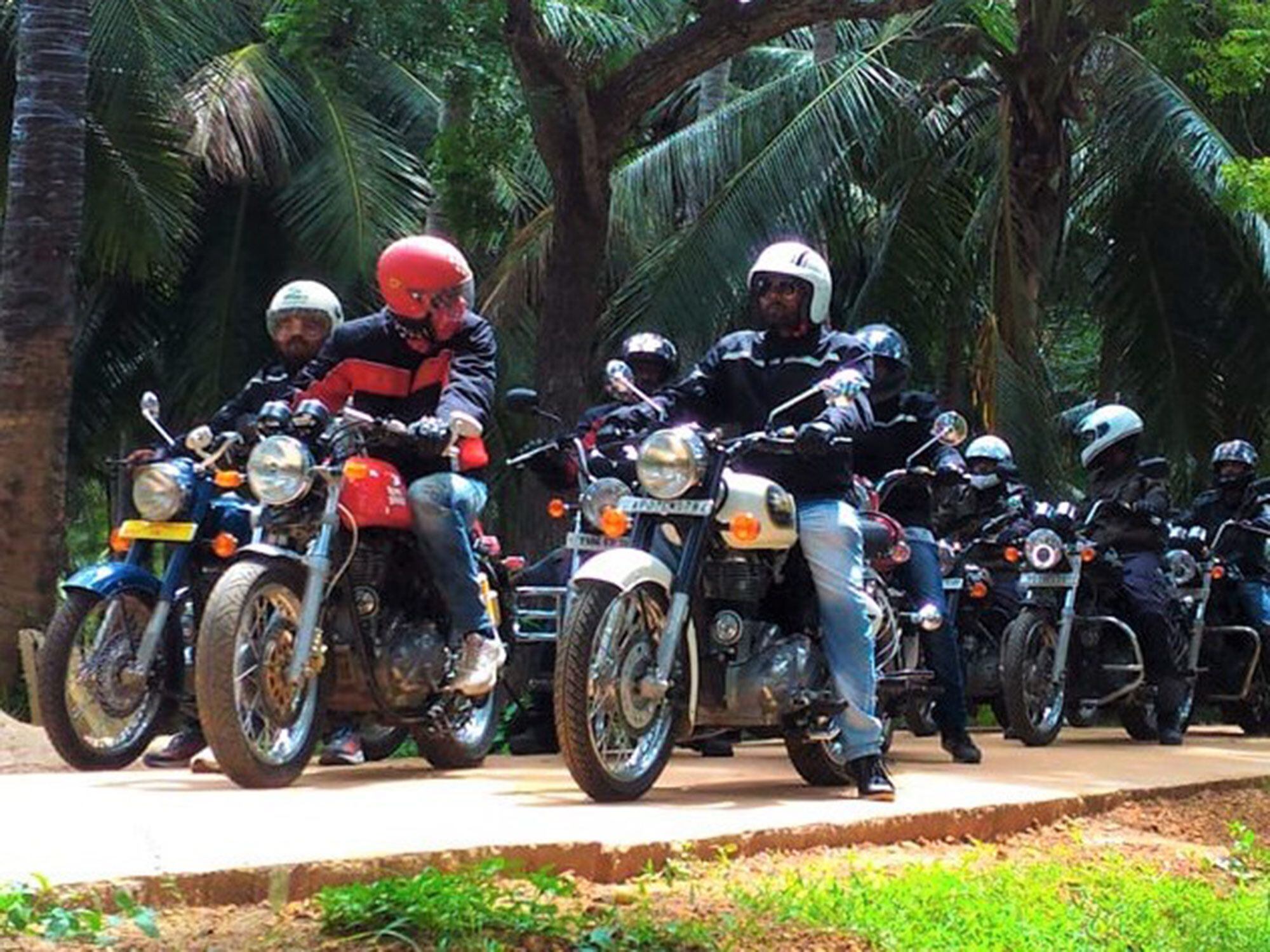
Royal Enfield has been India’s primary classic bike builder, but it’s seeing more competition in the segment of late. (Royal Enfield/)“The more things change, the more they stay the same” is an old chestnut that continues to have relevance in the world of motorcycle design, and in the case of India, especially so. In case you hadn’t noticed, India (and the South Asian market writ large) is gaga for retro rigs. For proof, you need look at just the last three years, when no fewer than seven trademark applications have been filed in support of resurrecting classic badges, and in some cases, leading to collaborations with existing brands. That includes familiar stalwarts like Royal Enfield and Triumph, but lately, classic Brit also-rans like BSA and Norton have entered the fray as well.
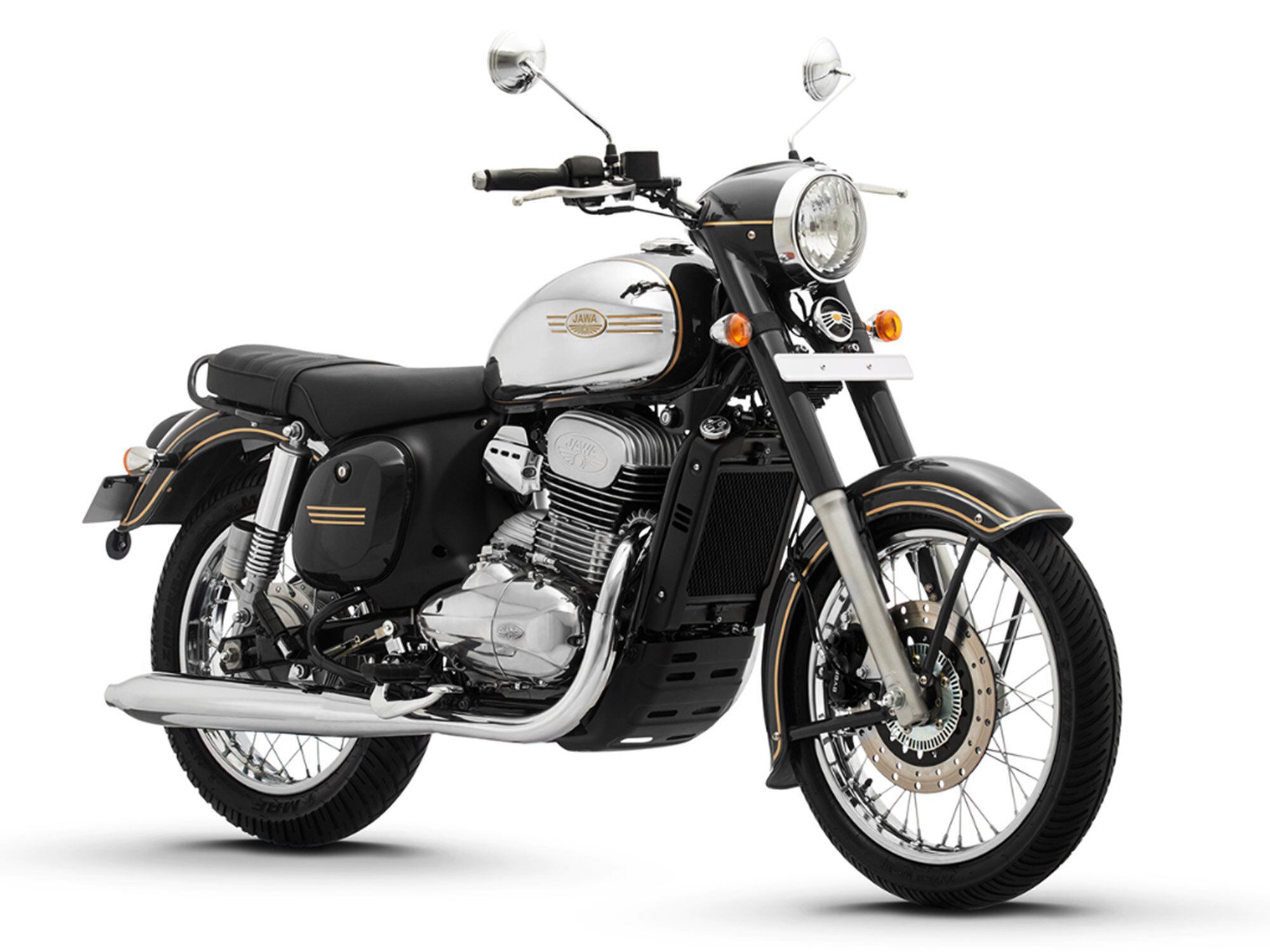
Jawa Motorcycles is one of the classic brands recently resurrected in India and being built there by Indian giant Mahindra. (Jawa Motorcycles/)Of course, there are plenty of other two-wheeled styles to be had on the Indian subcontinent, even if you adjust for the overwhelming crush of sub-100cc motos dominating the landscape. For example, BMW has an agreement with India’s TVS Motor to build its G310 R (the first BMW not to be built in Europe) and G310 GS models there, while the KTM-Bajaj partnership has resulted in the 125, 200, 250, and 390 Duke models being manufactured in India (as well as the RC 390), with all enjoying great popularity in the local markets. Homegrown Hero MotoCorp and Bajaj Auto regularly swap positions as the top sellers in India, with most of their bikes being of the standard or naked variety. But they just don’t bring the same cachet and brand reverence as classic marques from early days, and the Indian thirst for retro-style bikes is clear whether you’re talking about Royal Enfield’s ubiquitous Bullet 350 or the more up-to-date, ’70s-influenced Honda H’ness CB350. The latest moves in the segment show an influx of British retro reboots; TVS bought the remains of Norton earlier this year, and Mahindra is signaling the debut of a new BSA model shortly. All that action is in addition to the new Triumph-Bajaj cruiser set to debut sometime in 2022. There are others nipping at the edges too, including Czech-based Jawa, and of course Harley-Davidson retains a foot in the Indian subcontinent with dealers still selling its bikes.
So why the classic-style popularity? There’s the fact that the once-thriving British bike industry had deep roots in its former colonies (like India, Malaysia, and Thailand) and its retro designs and motorcycling history have infiltrated much of the culture. It’s also pure economics: India is the world’s largest bike market (recently surpassing China), and it’s also home to some of its biggest manufacturers. Economic developments have also led to middle-class growth and an increase in both leisure time and disposable income for the population.
There’s also the sense that retro-style bikes are easier to build and enter into the market for manufacturers, are usually better suited to rough Indian roads, and provide an affordable alternative for new riders. In India, the retro boom is also widely seen as a response to the rapid growth of Royal Enfield, which has seen remarkable sales increases in the last few years.
Currently Active Brands
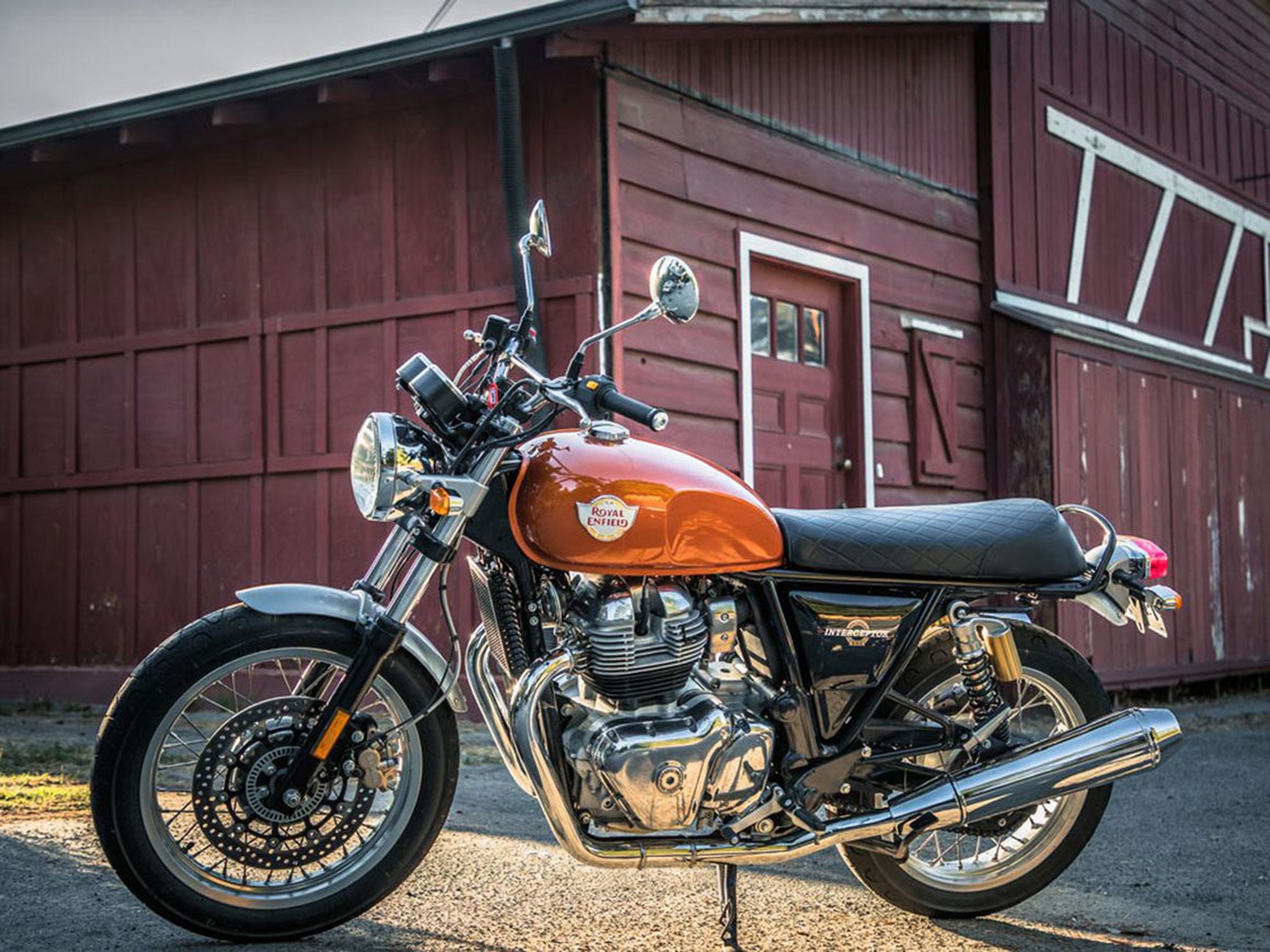
The new 650 twins are best sellers for Enfield both locally and in foreign markets. (Royal Enfield/)Royal Enfield
One of the world’s oldest bike brands has been building machines in India since 1925 and, since its acquisition by India’s Eicher Group some 25 years ago, is close to being Indian bike royalty—even if its actual overall sales are well below those of market leaders Hero and Bajaj. It also means British-bred Royal Enfield has deep pockets and more R&D resources; the brand has scored major successes with its newest in-house designs. The modern Interceptor 650 twin, for example, is the best-selling middleweight motorcycle in the UK in 2020, and is selling briskly in the US as well. The brand’s smaller-displacement 350cc models are huge sellers in the home country.
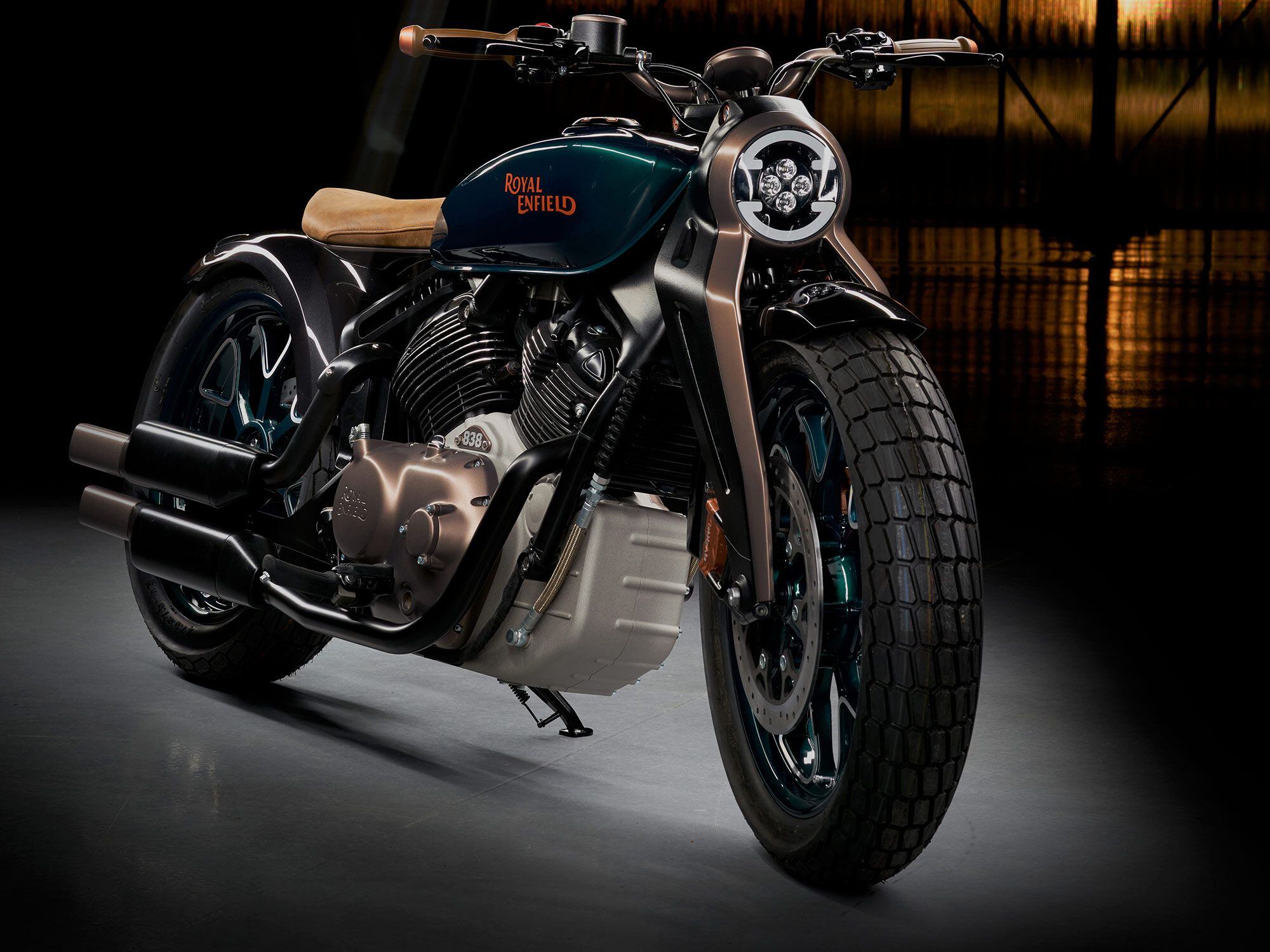
The KX V-twin concept Enfield showed last year had everyone wondering if the company was dipping a toe into the heavyweight segment. (Haniman/Royal Enfield/)Even though it only plays in the middleweight segment (250–750cc class), Enfield’s regional sales have grown 88 percent in the last year, and it’s looking to expand across Asia even more, with recently announced plans to open a new factory in Thailand. “It’s a long game we are playing in the international market,” Siddhartha Lal, managing director and CEO at Eicher Motors Ltd., said recently.
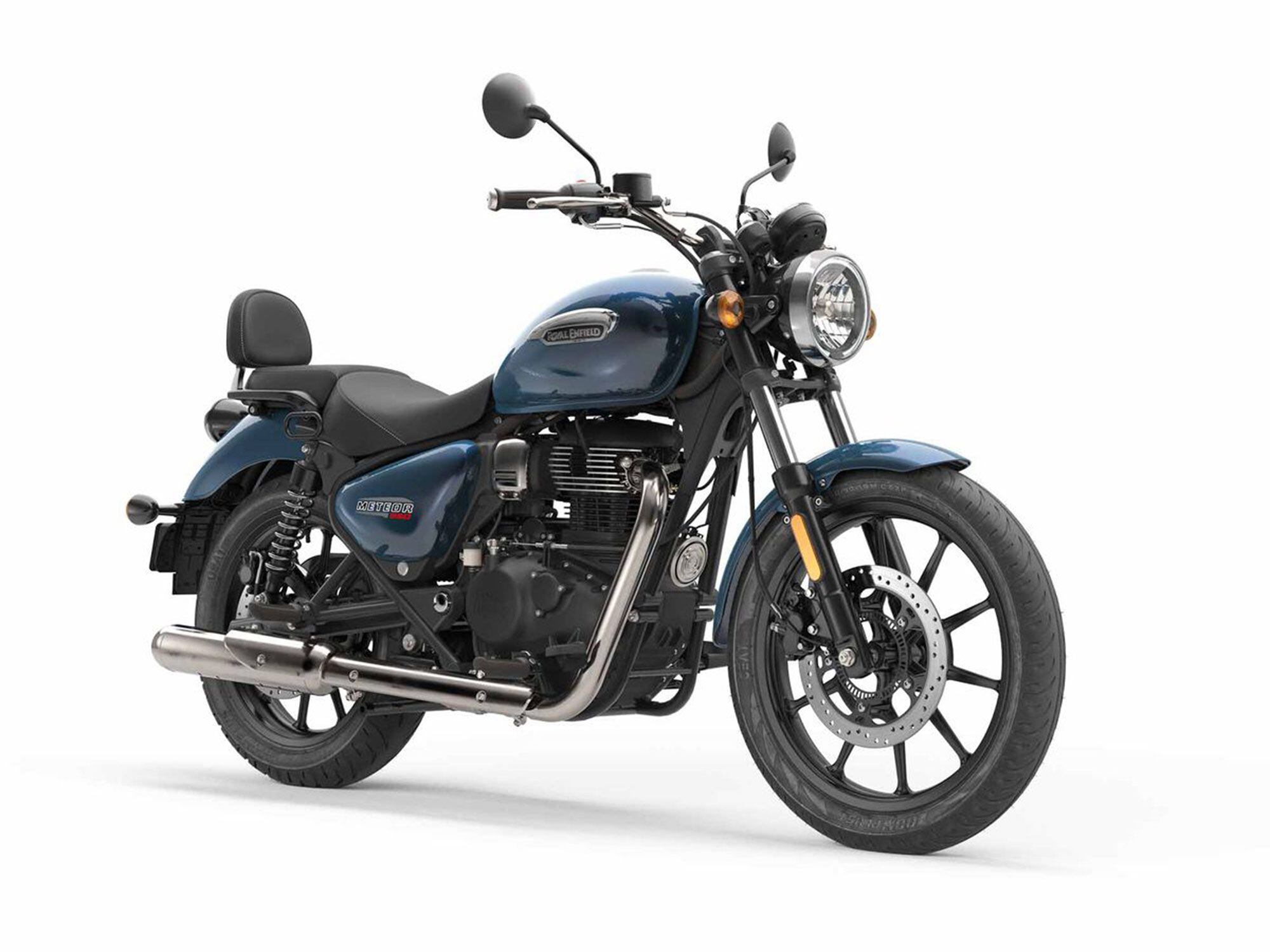
Enfield recently launched the Meteor, an all-new model sporting a fresh engine and chassis. (Royal Enfield/)The brand also just launched the 350cc Meteor model in India (and it’s coming to America), but there’s been some speculation that RE might enter the more premium heavyweight segment as well, fueled by the cherry KX concept shown back in 2018. RE’s Lal has even said that all the hype around Harley when it first entered India gave cruiser biking new appeal; riders would come check out new Harleys but ended up buying more affordable Enfields. The KX might be the heavyweight they’re looking for.
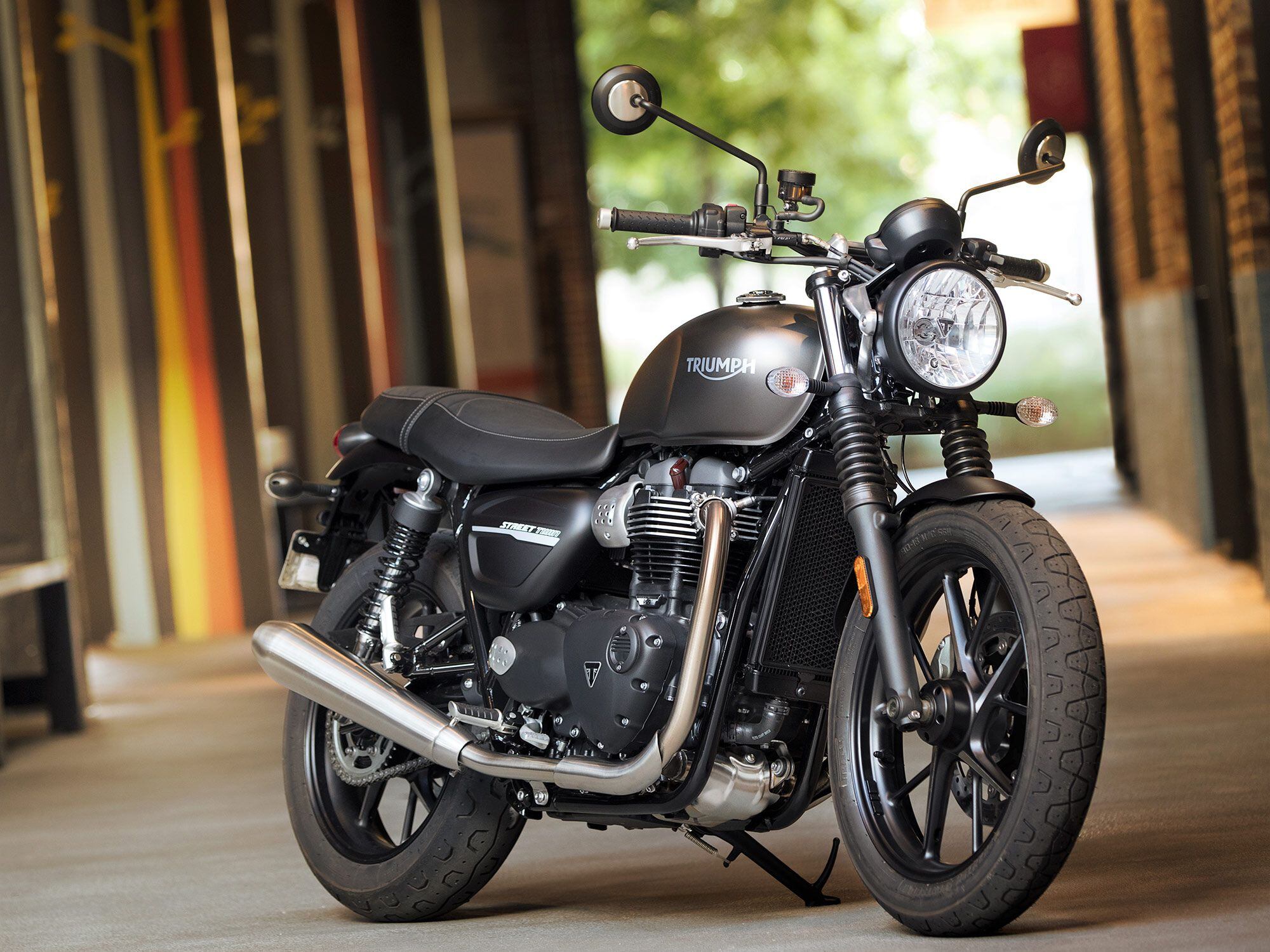
Both the Street Twin and the T120 models are big sellers for Triumph in India. Could a baby Bonnie be next? (Triumph Motorcycles/)Triumph Motorcycles
Triumph Motorcycles and Bajaj Auto formally announced their partnership only last year, but by all accounts are still on track to release the joint venture’s first new model, a cruiser, in 2022, even with supply-chain issues due to COVID-19. Overall, the two companies will be jointly developing a stable of midsize motorcycles to be manufactured in India, ranging in size from 200cc to 750cc, to serve emerging markets. There are no official details on the individual products as yet, but some have speculated that a mini single-cylinder Bonneville with a sub-300cc displacement would make for a solid competitor to the new-generation Royal Enfields. That would make sense, seeing as how the Street Twin is currently Triumph’s best-selling model in India.
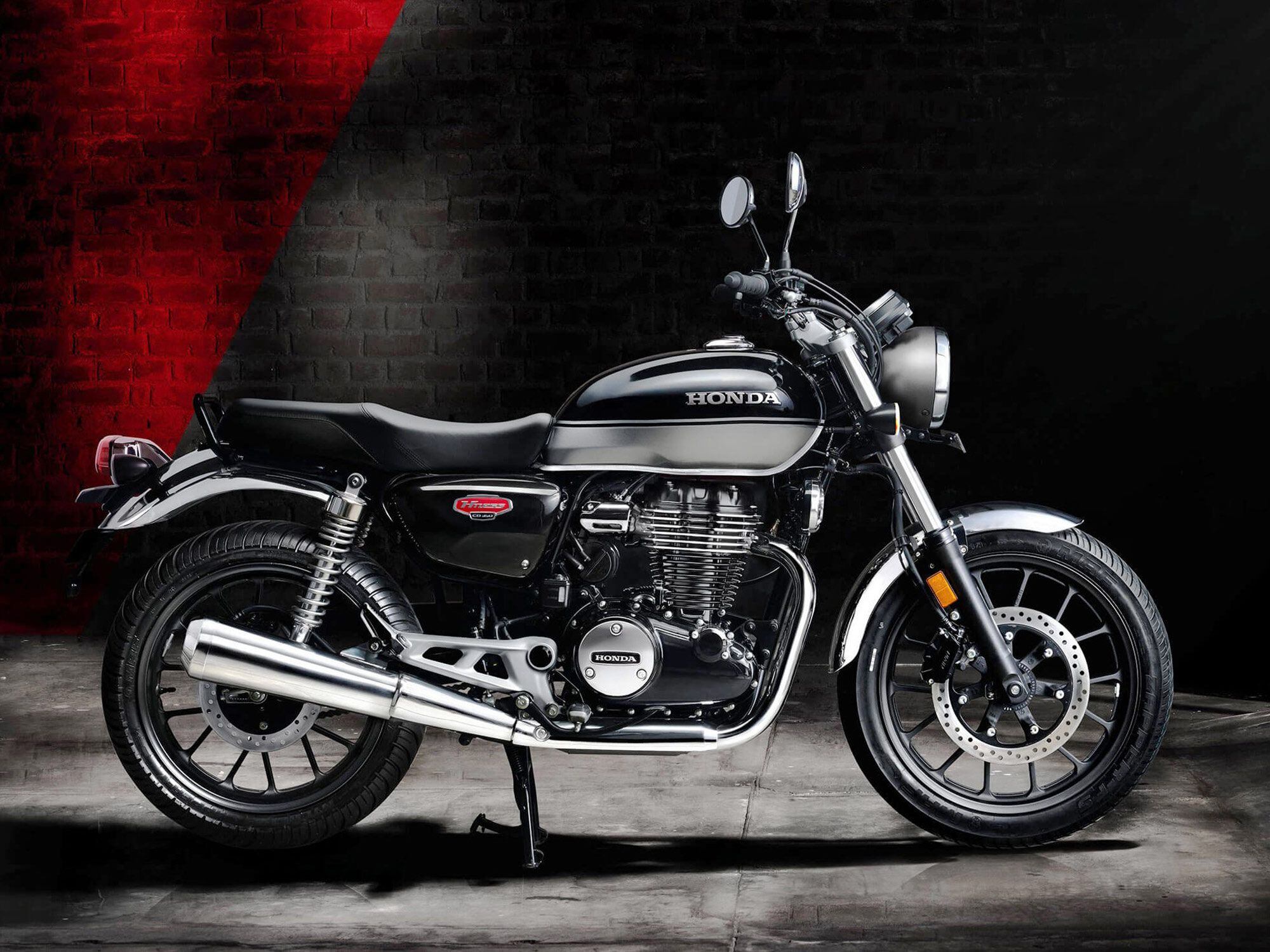
Honda’s ultra-classic CB350 was released in India just a few months back and is already a big hit for the Japanese manufacturer. (Honda Scooter and Motorcycle India/)Honda Motorcycle & Scooter India
Big Red’s got the street cred, so why not join the fray? Honda officially launched its own classically styled bike with the recently unveiled H’ness CB350, which comes in DLX and DLX Pro trims. The model is seen as Japan’s direct response to Royal Enfield’s Classic 350 and follows in the footsteps of Honda’s CB1100 EX and CB750, bearing the same CB silhouette, and even though it did get some tech updates, it still bears that unmistakably retro design. Of course, Honda’s no stranger to the Indian market either, though most of its current catalog in the country consists of scooters and small-displacement commuter bikes.
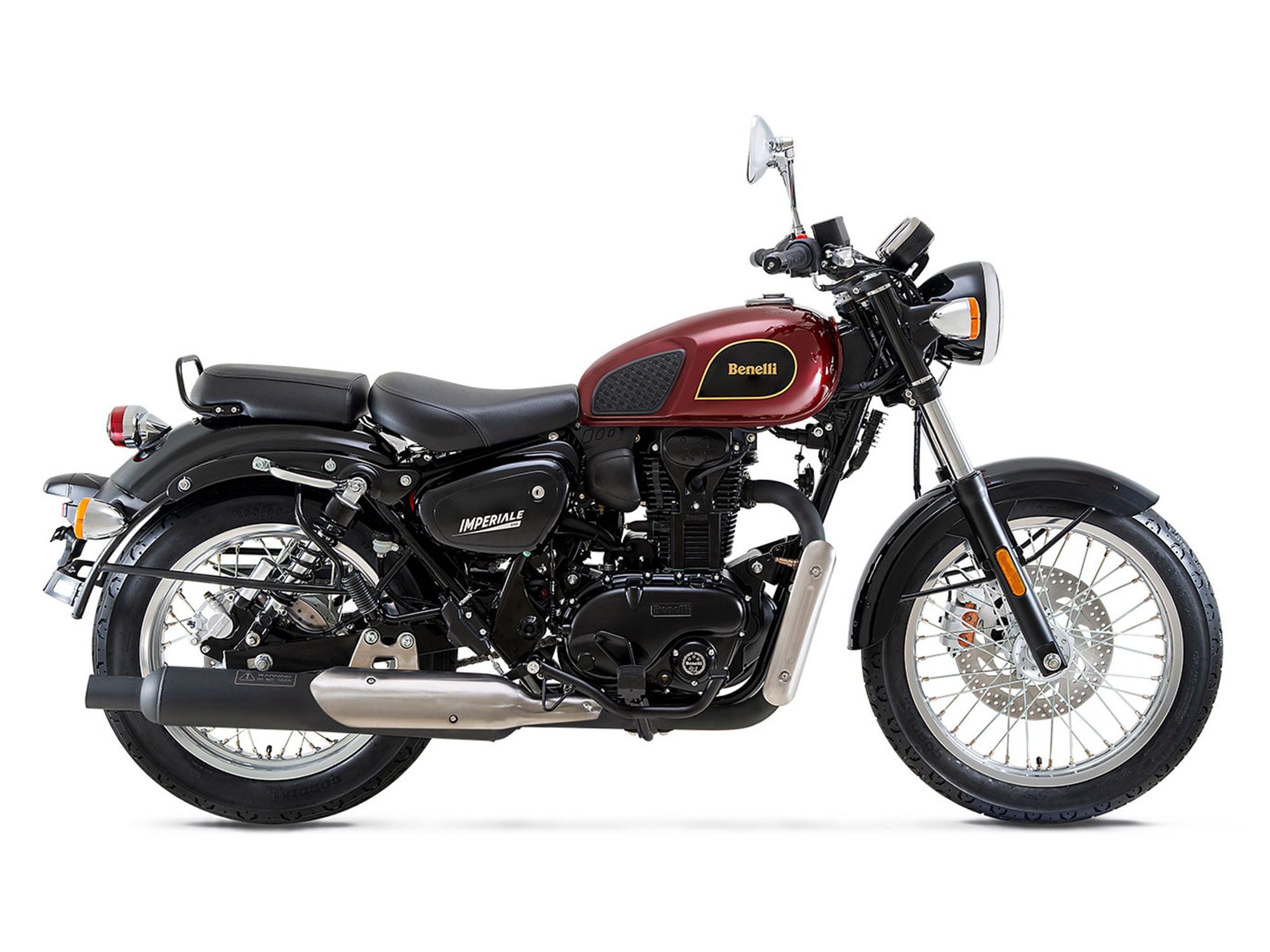
Is the Benelli Imperiale 400 a Chinese or Italian bike? Yes. (QJ/Benelli/)Benelli Motorcycles India
The 120-year-old original Italian manufacturer of motos and small arms is now fully owned by China’s Qianjiang Group, though some of its models are still partially designed in Italy at the Benelli QJ HQ. The Benelli bikes themselves, however, have been manufactured since 2005 at Qianjiang’s factory in Wenling, China. In India, its retro-fied, Brit-flavored Imperiale 400 model was launched last year to compete in the popular and increasingly crowded 350cc segment. The 374cc model will be joined by the scrambler-y Leoncino Trail 250 and 500 models this year to give the brand even more options in the retro category.
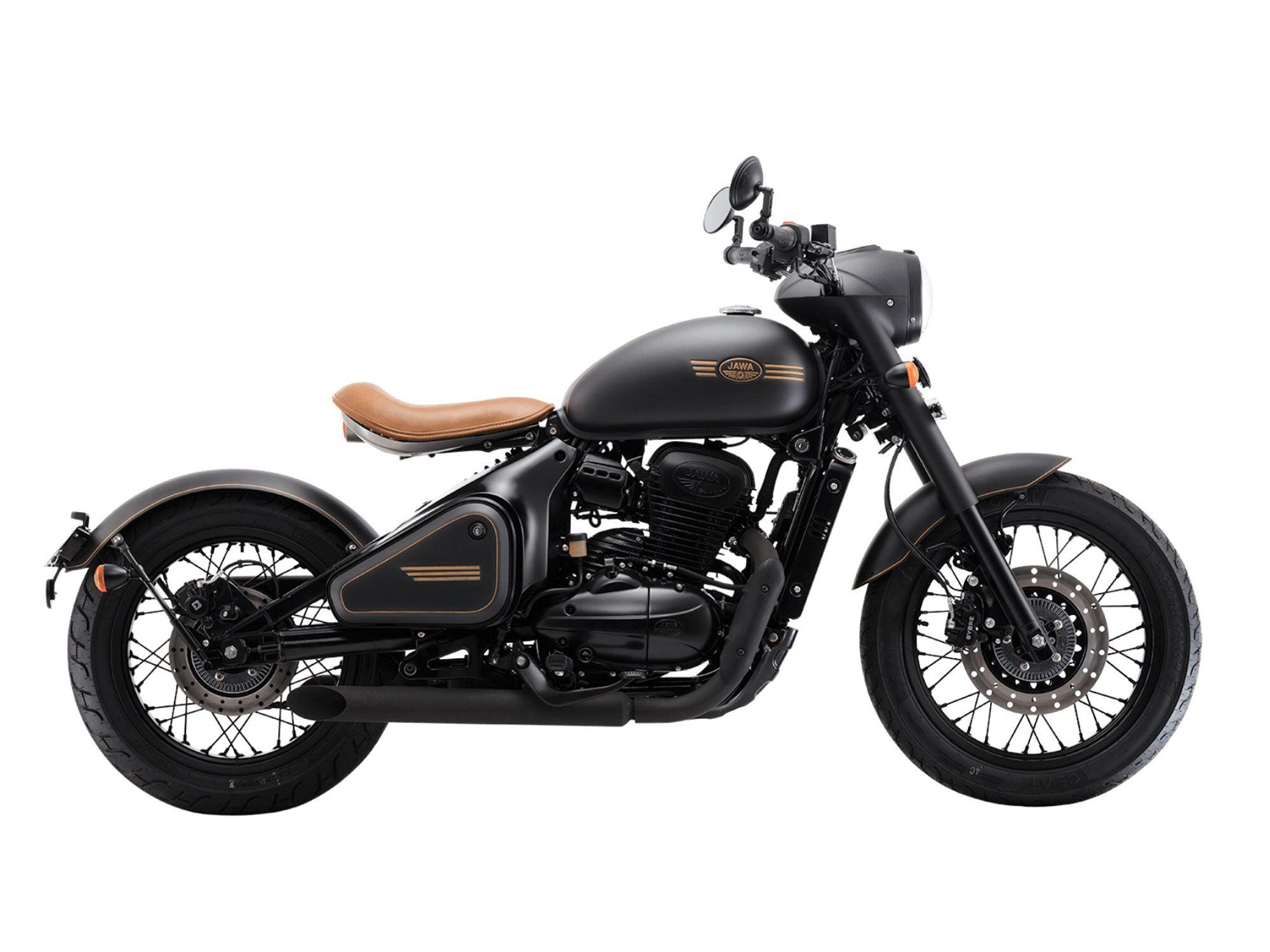
After initial production gaffes early on, Jawa came roaring out of the gate in 2020. Here’s the new Perak bobber. (Jawa Motorcycle Company/)Jawa Motorcycles
Classic Legends (part of the Mahindra Group) bought and revived the Jawa bike brand back in 2016 in a bid to tap into India’s booming retrobike market. The Czech-born marque has enjoyed a devoted, almost cultlike following in India since the 1960s, but Classic Legends released a range of new retro-influenced designs in 2018 based on its existing Mojo platform, followed closely by the bigger Perak bobber model, though the roll-out was plagued by production issues and delays early on.
Toward the end of 2020, Jawa issued a statement saying it had sorted out the problems, and announced sales of more than 50,000 units in the Indian market in “12 months of full operations,” which is both impressive but also a bit misleading. Jawa currently has three bikes in its portfolio—the Jawa, Jawa Forty Two, and Perak—all of them competing in the small to middleweight classic segment; the Perak bobber packs a liquid-cooled 334cc single, six speeds, and ABS as standard. Jawa has said it’s started exporting bikes to Nepal and Europe.
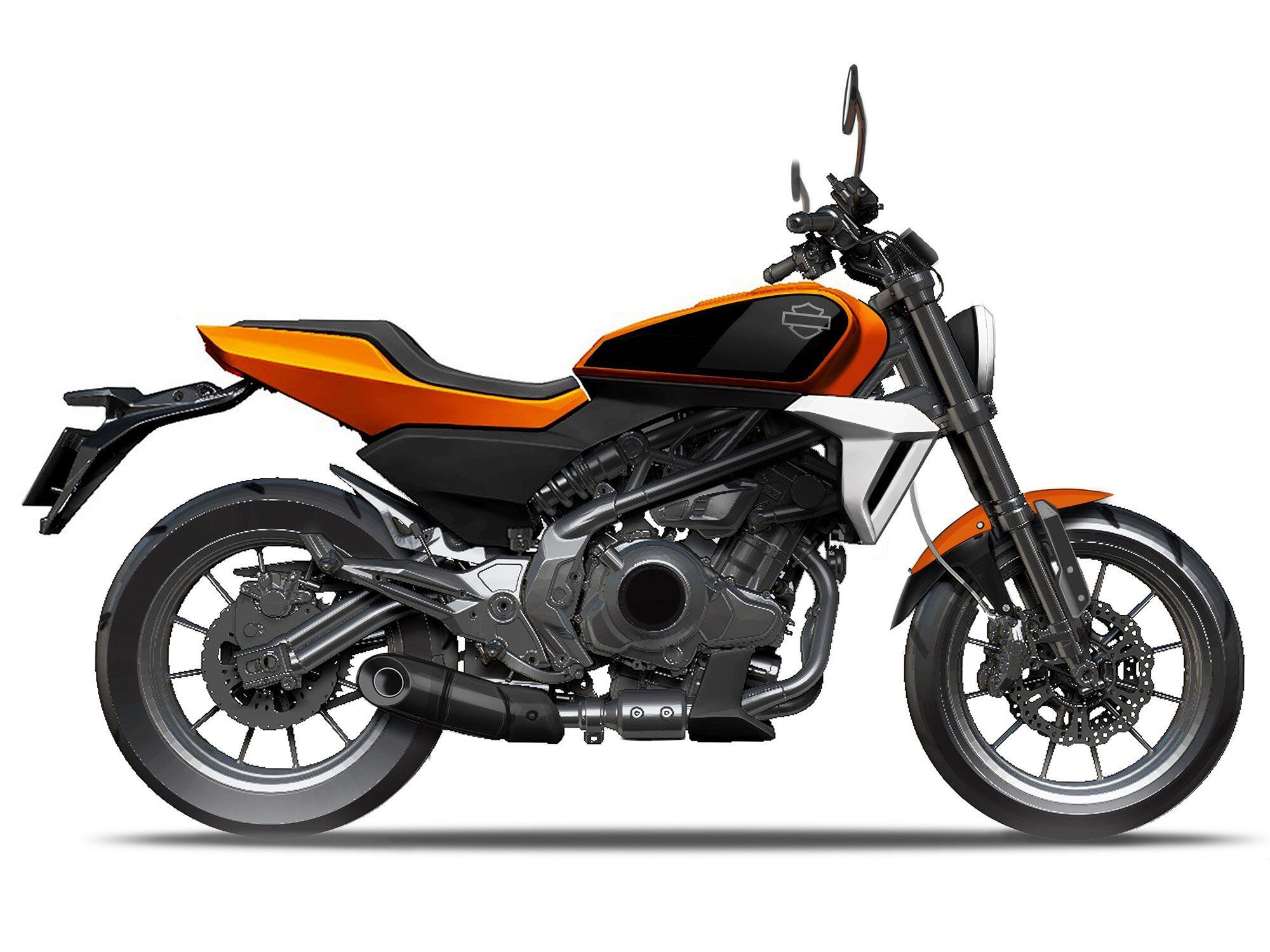
Harley has ceased manufacturing operations, but the MoCo may still debut a small-capacity cruiser in India this year. (Harley-Davidson/)Harley-Davidson
Harley’s story is more complicated. As we know, The Motor Company struggled to gain relevance in the Indian market, and it didn’t help that import taxes made the price of a new Harley unattainable for much of the population. Last year H-D shut down production in India after 10 years of dismal sales, but in November, as part of its ReWire strategy, Harley signed a new distribution and licensing agreement with India’s largest bike builder, Hero MotoCorp. A joint release says the latter firm will be responsible for sales and service support for Harley-Davidson motorcycles via existing outlets in India, with the Indian partner also selling Harley’s components, accessories, gear, and general merchandise via Harley dealers and Hero’s existing dealership network.
The licensing agreement meanwhile (if it’s still in effect) will have Hero develop and sell a range of “premium” Harley-branded bikes, presumably like the arrangement TVS Motor Company has with BMW Motorrad and its G 310 R and G 310 GS models. Other sources have suggested there probably won’t be any clean-sheet product development, as Harley’s already partnered up with Chinese bikemaker Qianjiang to build small-capacity motorcycles for global markets, with the first offering purported to be a somewhat retro-ish 350cc cruiser that would put it on competitive footing with Enfield in India—if it ever shows up. In short, there continue to be a lot of moving parts with The Motor Company, which hopefully will be clarified during its 2021 model launch on January 19.
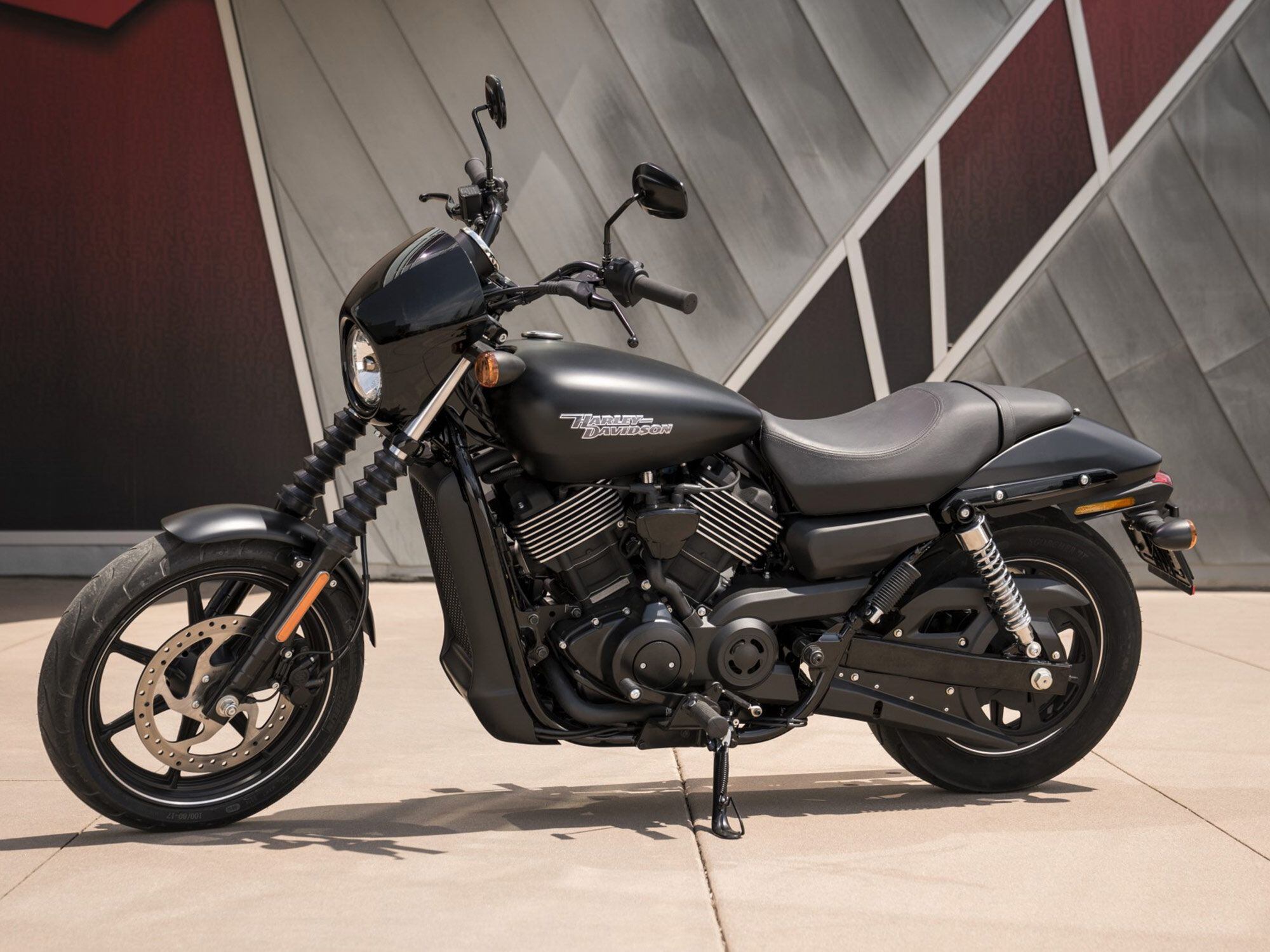
Harley’s current big seller in India is the Street 750. (Harley-Davidson/)The smallest and most affordable Harley-Davidson currently available in India is the Indian-built Harley-Davidson Street 750.
Forthcoming Resurrections
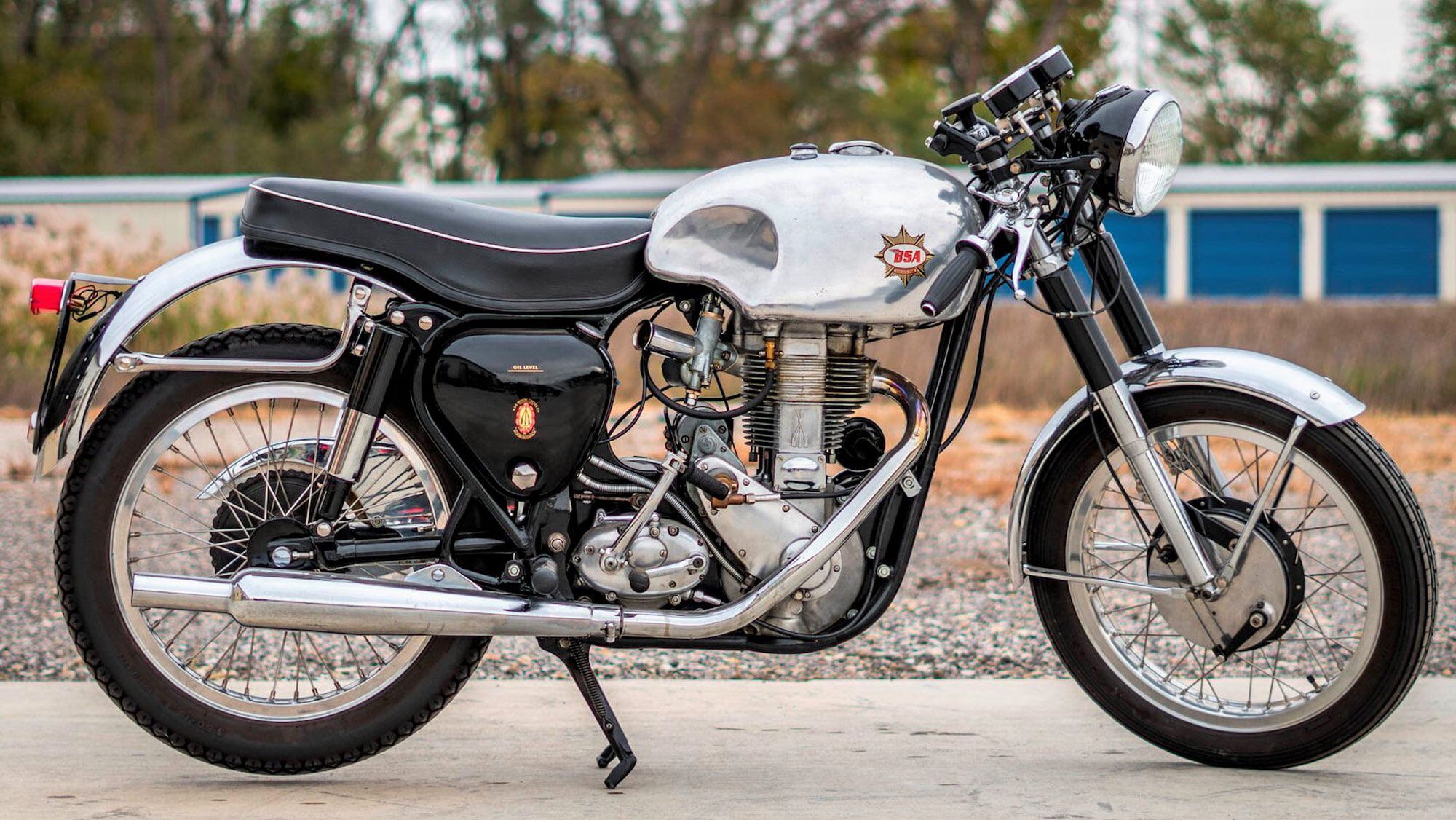
All signs point to a new gasoline-powered BSA model coming out of England sometime in the next few months. (Mecum Auctions/)BSA
India automotive manufacturer Mahindra & Mahindra acquired the BSA brand back in 2016 with the intent of moving into the premium motorcycle market, but four years later, we’re still waiting to see results. The Indian giant owns 60 percent of the Classic Legends label, which will be behind the revival of the century-old bike maker, with the latest report mentioning plans for a technical and design center as well as a factory in England, with bikes also being assembled in the UK.
Post-Brexit, Classic has understandably adopted a wait-and-see approach for the long term, though the first new internal-combustion BSA is still due to debut sometime in 2021, with an electric-battery bike to follow at the end of the year. (Mahindra also said it had been focusing on clearing the Jawa backlog first before turning to BSA.) When the lines start rolling, BSA plans to export the majority of the bikes to the US, Australia, and Japan, after which it will supposedly make its way to the Indian market. Given all the cachet of the Gold Star name, might we see a retread of that classic model? Seems likely.
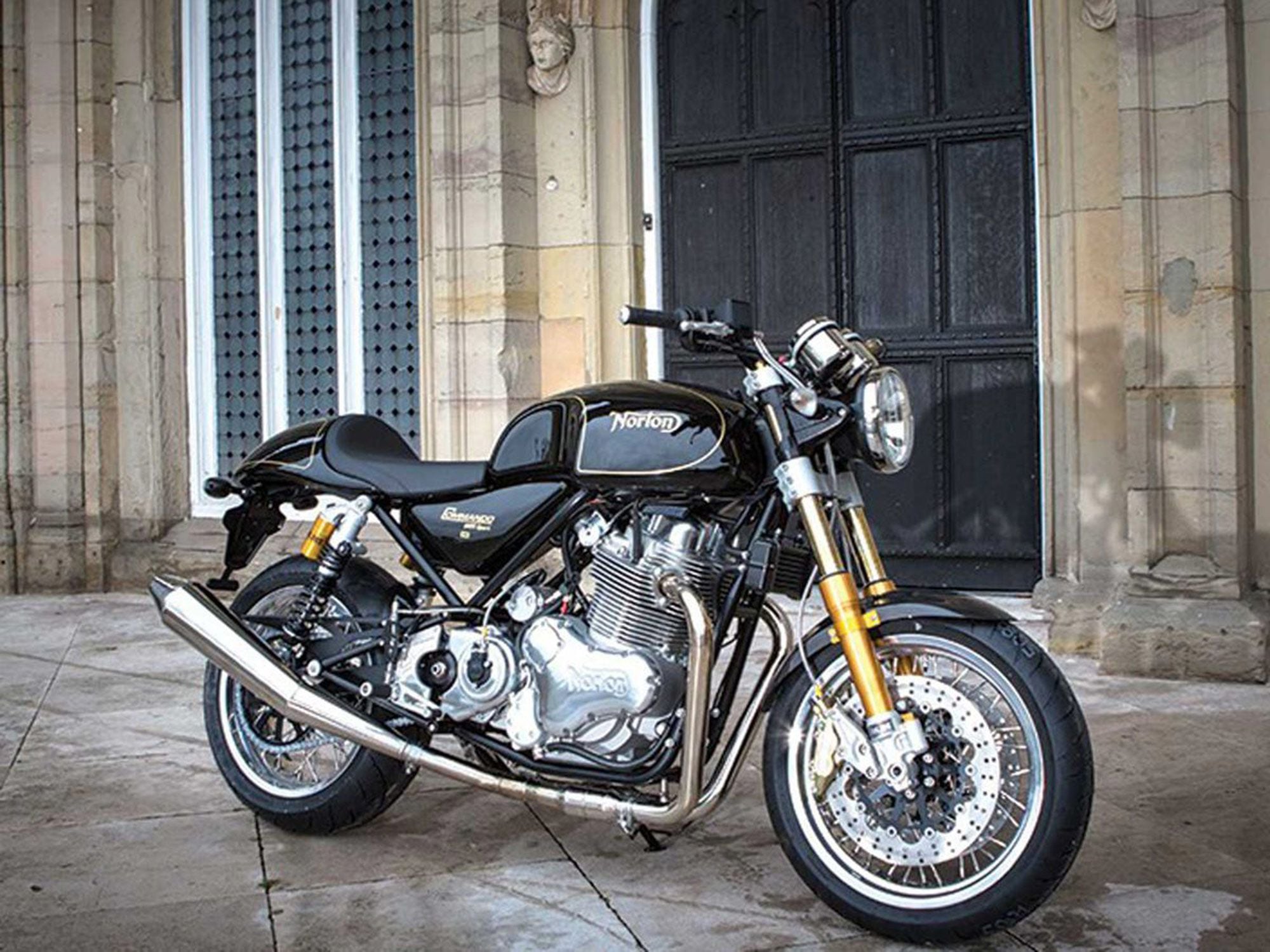
Norton Commandos are said to be the first models to come off the restarted production line this year. (Norton Motorcycles/)Norton
India’s TVS Motor bought another classic UK motorbike company, Norton, out of administration last April. India’s third-largest motorcycle maker purchased the iconic 122-year-old British brand as part of a distress sale through one of its subsidiaries, and according to TVS’s joint managing director Sudarshan Venu, the firm would offer “full support for Norton to regain its full glory.”
RELATED: Norton Motorcycles Bought By TVS Motor
TVS is probably counting on Norton’s expertise in the cruiser segment to give it some ammo in a battle with Royal Enfield, though the new bikes are being built in England and it’s not clear whether models will also be specced for India; the current portfolio boasts larger-displacement bikes which will open up new markets for the Chennai-based manufacturer, though not necessarily back home. TVS has recently restarted the production lines with the first new bikes built at the UK facility to be the popular Commando models, according to the company’s interim CEO John Russell. That will be followed by outstanding V-4 models, and then the 650cc Atlas models.
In short, TVS may eventually bring Norton to India, but some house cleaning is in order first.
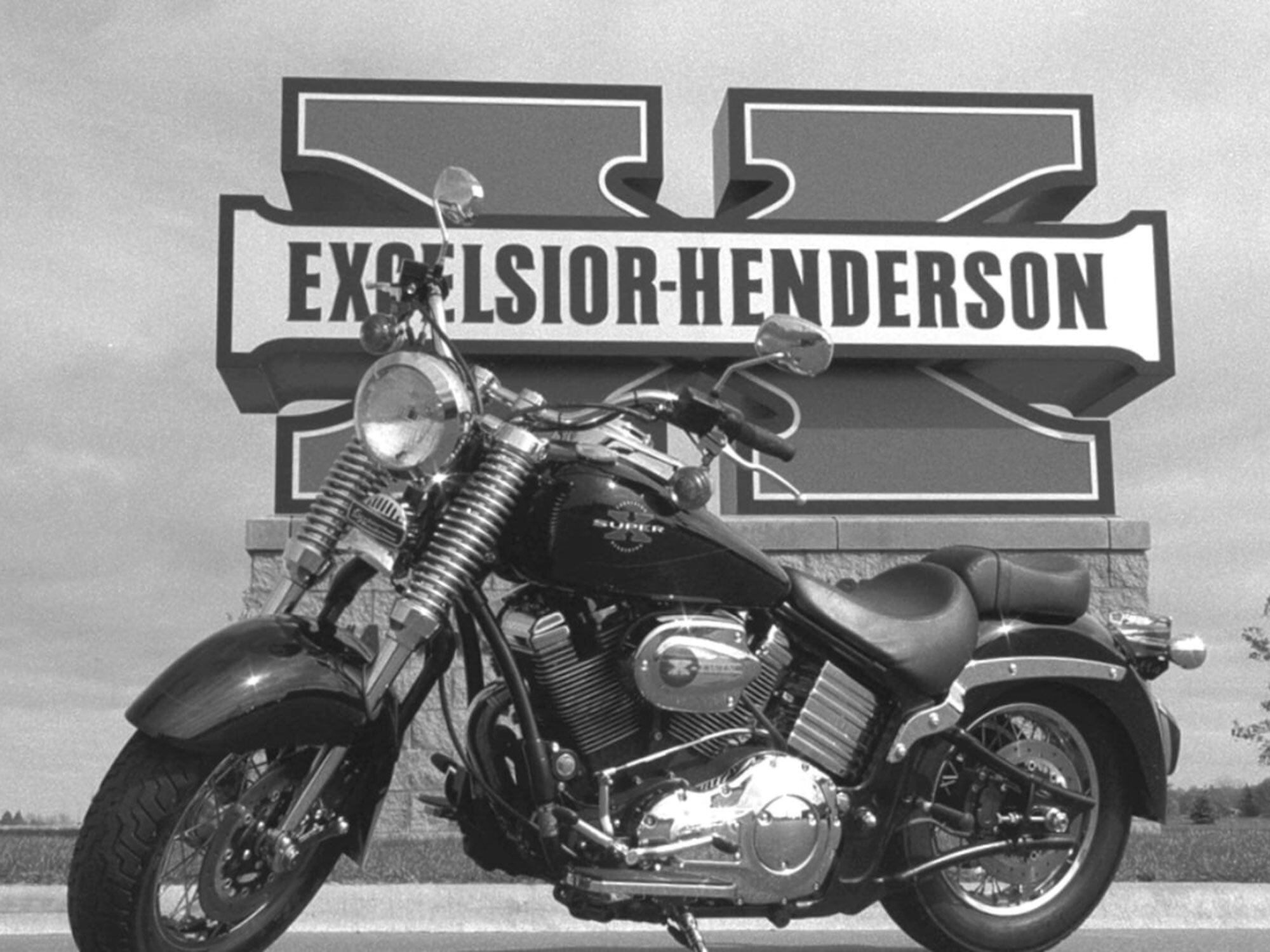
Excelsior-Henderson naming rights were recently bought by India’s Bajaj group, but we’re not sure if that means a new model is being developed. (Cycle World Archives/)Excelsior-Henderson
The latest classic brand acquisition is Bajaj’s application for trademark rights to the Excelsior-Henderson name and logo for use on motorcycles, parts, and clothing. It’s said that Bajaj bought the brand name from Daniel Hanlon, who was one of the chief drivers behind the 1990s revival of the American brand that came so close to success. Bajaj’s interest in Excelsior is likely a reaction to nearly all of its domestic rival manufacturers buying and launching all those dormant iconic motorcycle brands or the rights to their names of late, but whether or not we’ll see an actual ‘new’ Excelsior production bike is an open question.
Indian Motorcycle
Yes, Indian has a presence in India. Still, the company’s smallest offering in that country is the 1,133cc Scout, and while its core V-twin products are fairly successful in the market, a smaller model would likely increase its sales volume in the region dramatically. We can only speculate about what a 500cc Scout thumper might look like.
-
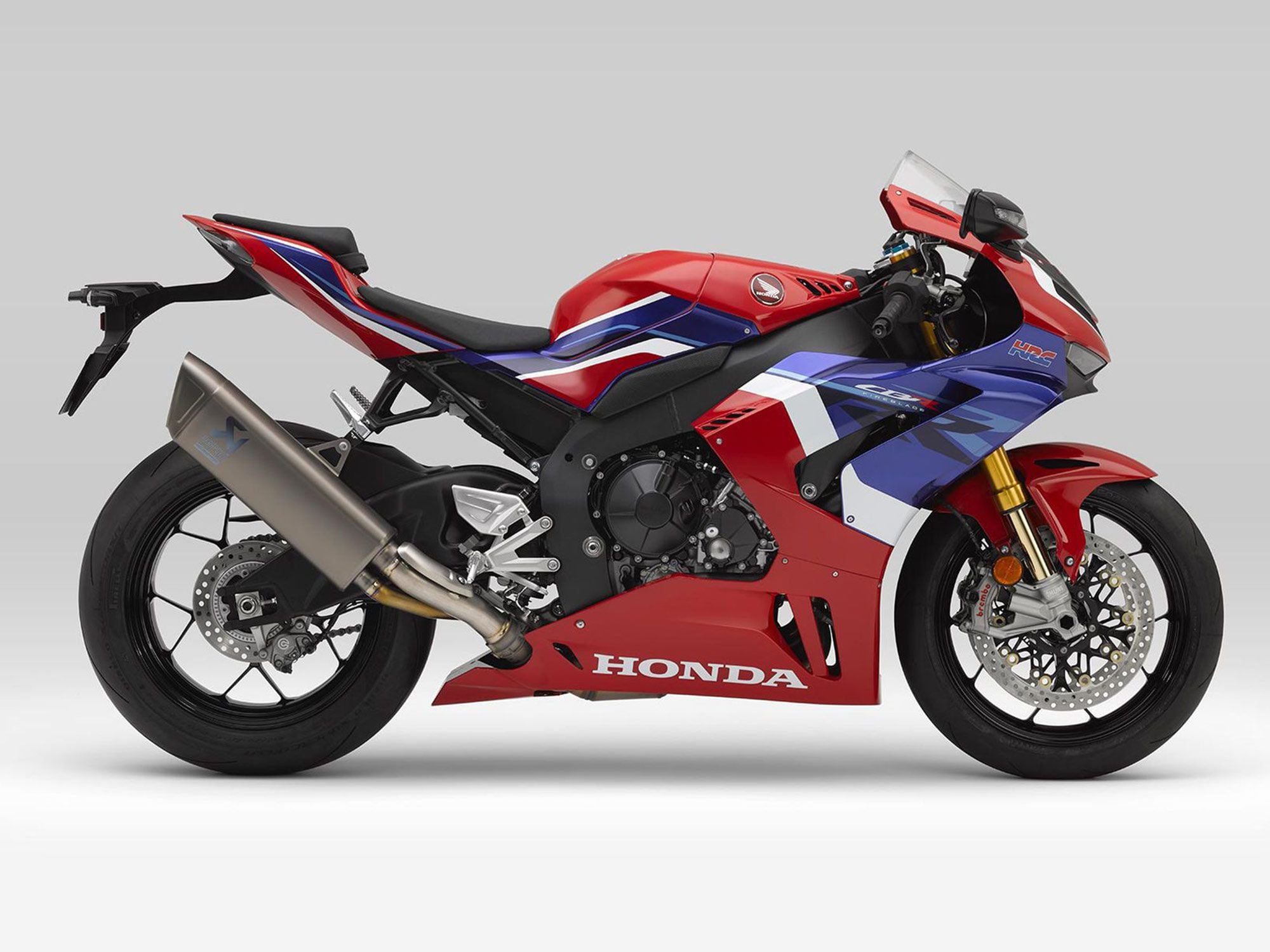
2021 Honda CBR1000RR-R Fireblade SP (Honda/)Ups
“Take-it-to-a-new-level” hardware
Trickle-down tech from MotoGP RCV
Impressive handling and feedback
Downs
Handlebar positioning causes wrist pressure
Limited-production-only model in US market

2021 Honda CBR1000RR-R Fireblade SP (Honda/)Verdict
The Honda CBR1000RR-R Fireblade SP challenges the likes of the Ducati V4 S with its engine development and race charisma in a street-legal package.
Overview
The Honda CBR1000RR-R Fireblade SP is the embodiment of decades of racing history and development. Its wonderful balance of power, chassis, and tech make it a superb corner-carving superbike.
Updates for 2021
The CBR1000RR-R is a new 2021 model for the US although it is pegged as a 2020 model in Europe.
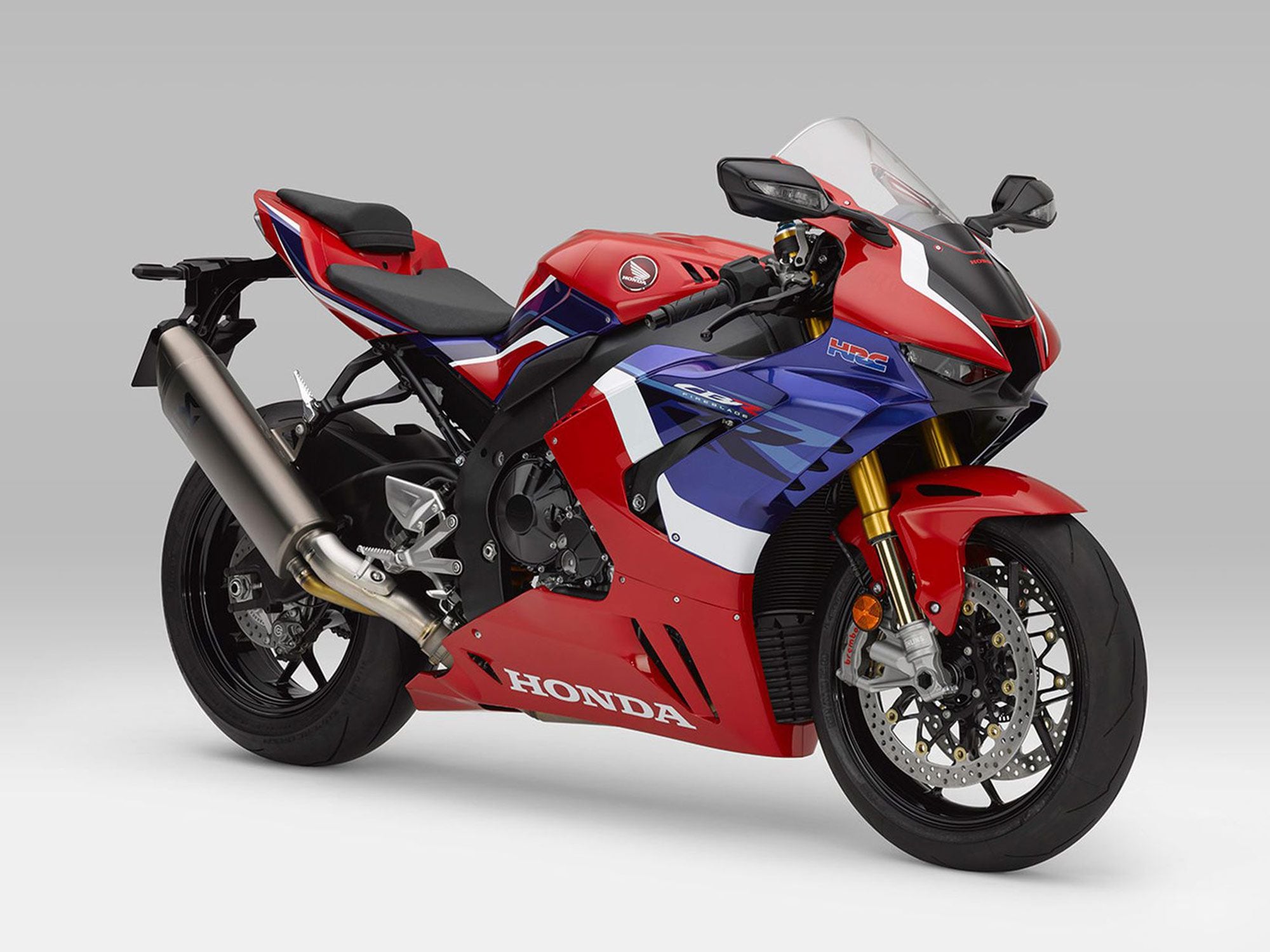
2021 Honda CBR1000RR-R Fireblade SP (Honda/)Pricing and Variants
This limited-production CBR1000RR-R Fireblade SP retails for $28,500.
Powertrain: Engine, Transmission, and Performance
The 999cc inline-four produces a claimed 214 hp (Euro model). It has been modified to be supremely compact and lightweight thanks to its engineers trickling down tech from Honda’s MotoGP efforts with the RCV. This engine is fully analyzed by Cycle World’s Kevin Cameron in “2021 CBR1000RR-R Is Honda’s Response To The Ducati V4 R.”
Tractable, yet impressive power delivery is a highlight of the RR-R SP, while a rush of top-end power will surge toward its 14,500 rpm redline. In fact, we noted that the rideability of the engine’s power delivery resulted in serious confidence. “As a testament to the 999cc liquid-cooled inline-four’s tractability and rider friendliness, I shut the HSTC and Wheelie Control settings off entirely for my final five laps of the day and found the same level of confidence under acceleration as I did with rider aids engaged,” noted Road Test Editor Michael Gilbert.
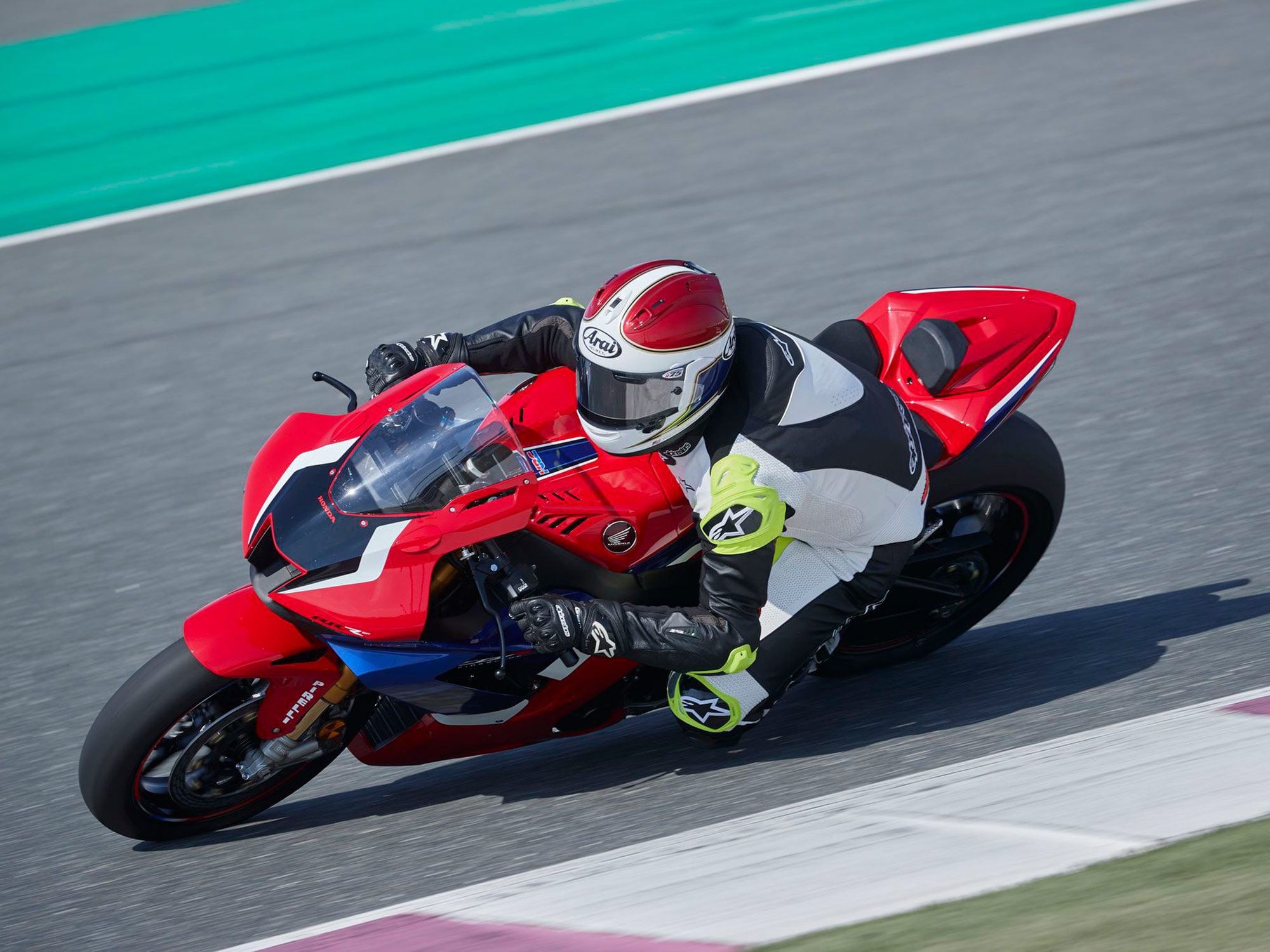
2021 Honda CBR1000RR-R Fireblade SP (Honda/)Handling
When Road Test Editor Michael Gilbert took laps around Losail on the European model CBR1000RR-R Fireblade SP, he wrote: “Honda struck a superb balance. With its brand-new twin-spar frame and swingarm with redone rigidity characteristics, the Fireblade is gloriously serious in corner-carving prowess. The bike exemplified its strength in Losail’s difficult side-to-side transitions, requiring little effort to change direction and easily executing midcorner corrections. Look where you want to go, and it goes, no drama—a true track weapon and racebike to the core.”
Superb feel and support are relayed from the top-shelf Öhlins NPX Smart EC 2.0 semi-active gas-charged fork and TTX 36 Smart EC shock. These suspension components are easily tunable via the Objective Based Tuning Interface (OBTi) accessed in the TFT display.
Brakes
The Brembo Stylema calipers bite down on two 330mm front discs and the rear caliper is straight from the RCV213V-S. Two ABS modes are Sport and Track, but offer no hint of excessive intervention found on the previous model.
Fuel Economy and Real-world MPG
Fuel economy and real-world mpg are not currently available.
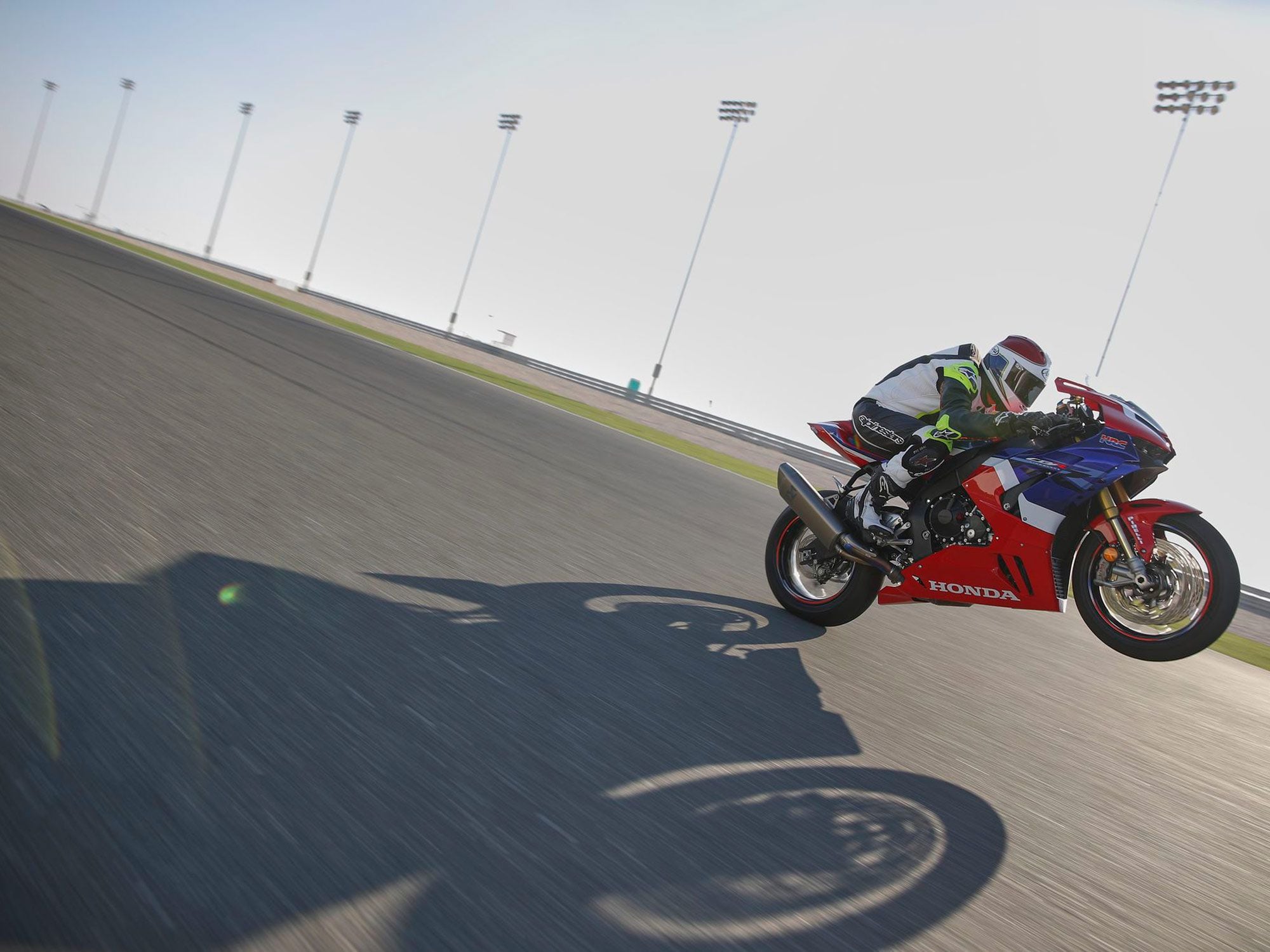
2021 Honda CBR1000RR-R Fireblade SP (Honda/)Ergonomics: Comfort and Utility
Ergonomics for this superbike are as you would expect: aggressive. The pegs are up and back for an athletic lower body stance. Handlebar location, however, is lower and angled much farther forward, motocross style, which puts excessive pressure on the rider’s wrists.
Electronics
Racebikes offer cream-of-the-crop electronics in order to deliver the best, most efficient lap times, and as such the ‘Blade is equipped with throttle-by-wire, five power modes, nine levels of Honda’s Selectable Torque control, wheelie control, two ABS modes, and three Engine Brake levels. A Bosch six-axis IMU monitors lean and pitch angles.
A new full-color TFT display can be customized to rider preferences.
Warranty and Maintenance Coverage
Transferable, unlimited-mileage limited warranty. One year included but extended coverage is available with a HondaCare Protection Plan.
Quality
Honda’s history is deeply rooted in racing. The new Fireblade is the result of decades’ worth of experimenting and progressing through that history with a potent blend of MotoGP-derived tech, an impressive powerplant, and a strong chassis. A fine fit and finish is the cherry on top.
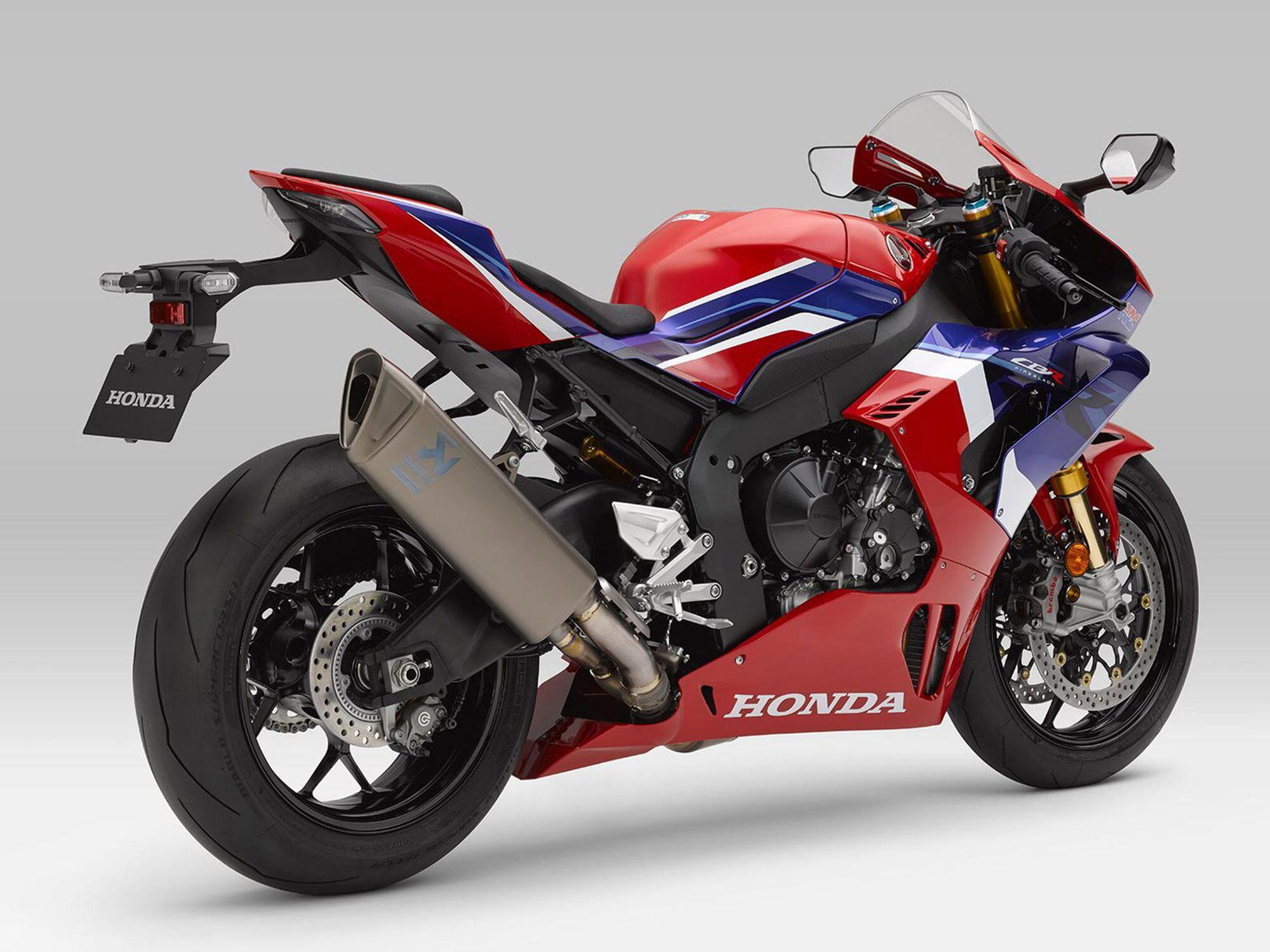
2021 Honda CBR1000RR-R Fireblade SP (Honda/)2021 Honda CBR1000RR-R Fireblade SP Claimed Specifications
MSRP: $28,500 Engine: 999cc, DOHC, liquid-cooled inline-four; 4 valves/cyl. Bore x Stroke: 81.0 x 48.5mm Horsepower: 186.0 hp @ 12,000 rpm (US model)/214 hp @ 14,500 rpm (Euro model) Torque: 83 lb.-ft. @ 11,000 rpm (US model)/83 lb.-ft. @12,500 (Euro model) Transmission/Final Drive: 6-speed/chain Fuel Delivery: Fuel injection w/ 52mm throttle bodies, 12-hole injectors Clutch: Wet, multiplate Engine Management/Ignition: Throttle-by-wire, digital transistorized w/ electronic advance Frame: Twin-spar aluminum Front Suspension: 43mm Öhlins NPX Smart EC fork w/ electronically controlled preload, compression, and rebound adjustments; 4.3 in. travel Rear Suspension: Öhlins TTX 36 Smart EC shock w/ adjustable compression, rebound, and spring preload; 5.6 in. travel Front Brake: Brembo Stylema radial-mount calipers, 330mm discs w/ ABS Rear Brake: Brembo two-piston caliper, 220mm disc Wheels, Front/Rear: 17 x 3.5 in. / 17 x 6.0 in. Tires, Front/Rear: 120/70ZR-17 / 200/55ZR-17 Rake/Trail: 24.0°/4.0 in. Wheelbase: 57.3 in. Ground Clearance: 4.5 in. Seat Height: 32.6 in. Fuel Capacity: 4.3 gal. Wet Weight: 443 lb. Contact: powersports.honda.com -
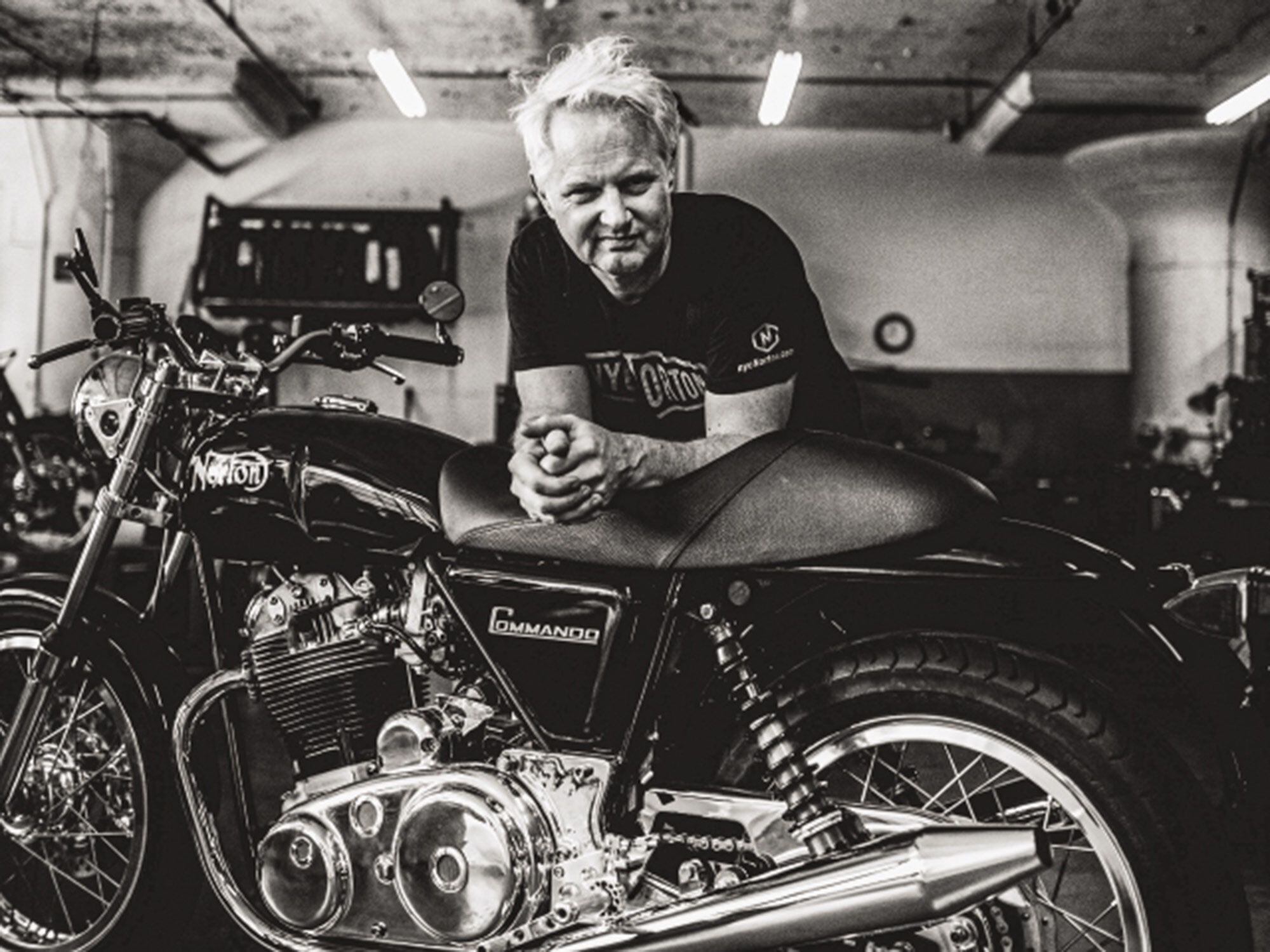
“I love the ride, I love the race, but I also love the production side of things. There’s very much these fundamentals about it.” (Peter Domorak/)“Vintage motorcycle racing has taught me that you can’t always have absolutes in things,” Kenny Cummings says as he regards the 1936 Norton International sitting on a lift at his third-floor workshop in a massive old industrial building in Jersey City.
Cummings is a racer, a musician, and the gregarious owner of NYC Norton, a two-man enterprise that specializes in high-end Norton restorations and vintage racing.
“I love the ride, I love the race, but I also love the production side of things. There’s very much these fundamentals about it. It’s been a push-pull thing, growing up as an artistic kid,” Cummings says by way of explaining his affinity for both the ordered, objective world of the workbench and the unpredictable world of vintage racing. “Art is all about not-absolutes.”
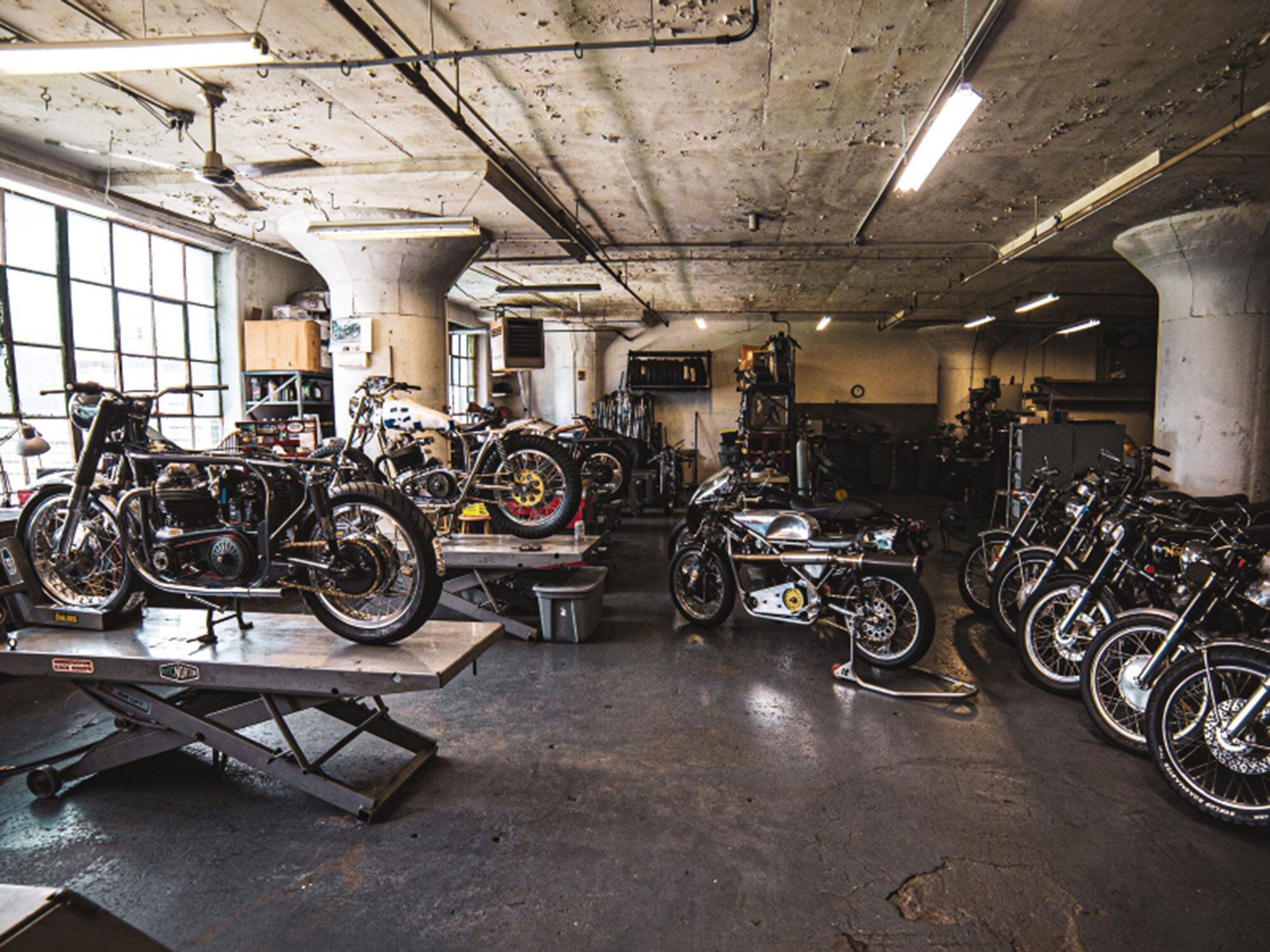
NYC Norton is housed in a 4,200-square-foot loft in Jersey City. Cummings’ shop was originally part of Spannerland, a cooperative he and several moto nuts set up 14 years ago. Next door, Cosentino Engineering builds several components for Cummings, including a Showa cartridge upgrade kit for Roadholder forks. (Peter Domorak/)It’s no wonder Cummings seems most at home on the racing line. It traces the margin between the predictable and the unknowable. Clinging to it is at once a dogged pursuit and an acceptance of outcomes beyond control.
Cummings moved to New York in 1986 to make it in the music business, emboldened by a faith in the vastness of possibility and driven by the thrill of the pursuit. He wound up touring and programming synthesizers for the likes of Elvis Costello and Aretha Franklin, as well as landing a lucrative job in the art world. But all the while, there was a focus-narrowing intruder in the background: the Norton motorcycle.
In 1995, with the childhood memory of burning his leg on his dad’s Commando seared into his consciousness, Cummings bought his first Norton—and pretty quickly wrapped it around a tree.
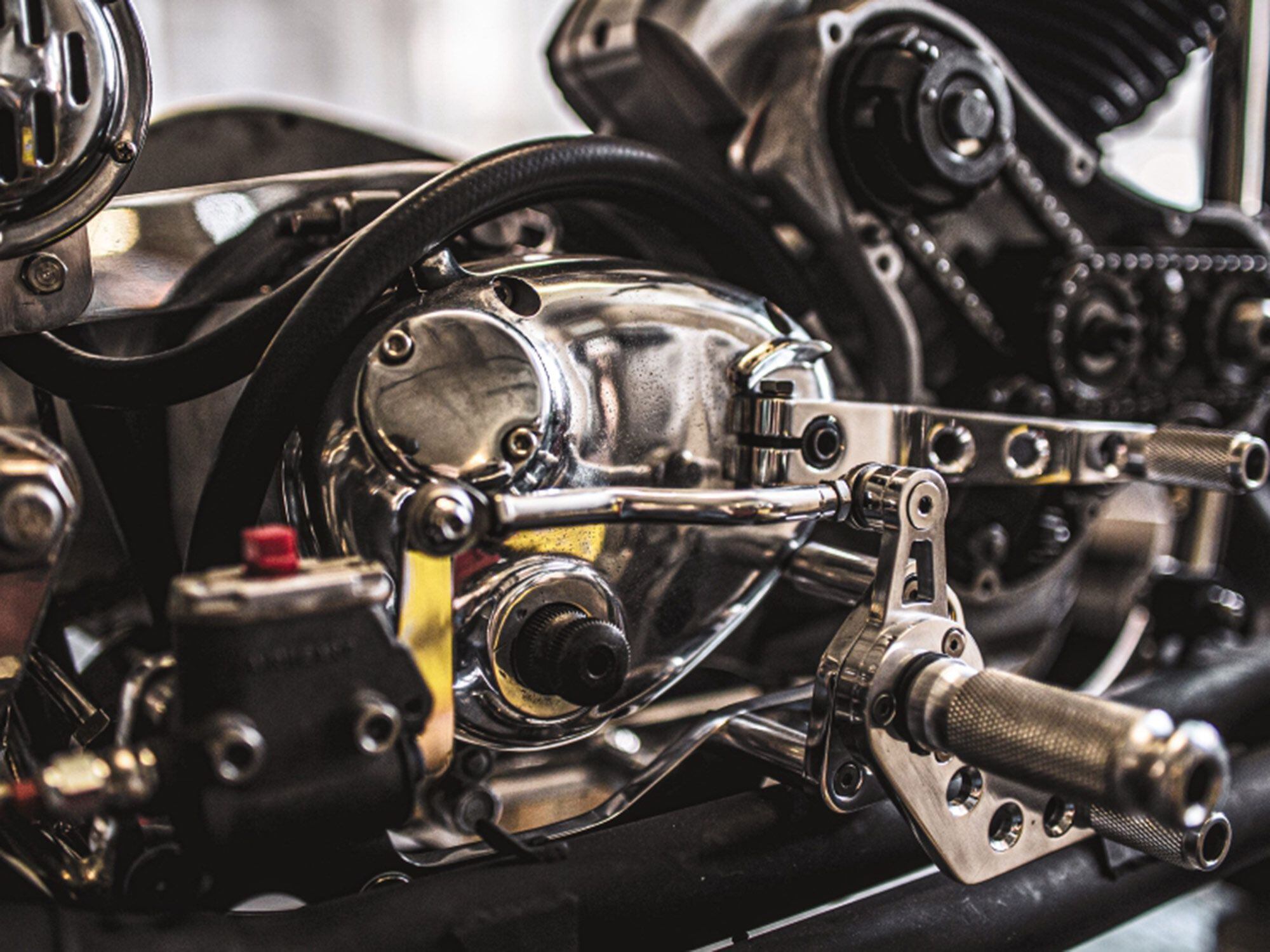
Detail of the NYC Norton Trackmaster Commando. (Peter Domorak/)“If you’ve ever crashed a motorcycle,” he says, “the first reaction you have after you get up and brush yourself off is, ‘I gotta get back to two seconds before this happened.’ I focused on getting my bike back to where it was—and then making it better.”
So, he started a blog to document the process, calling it “NYC Norton.”
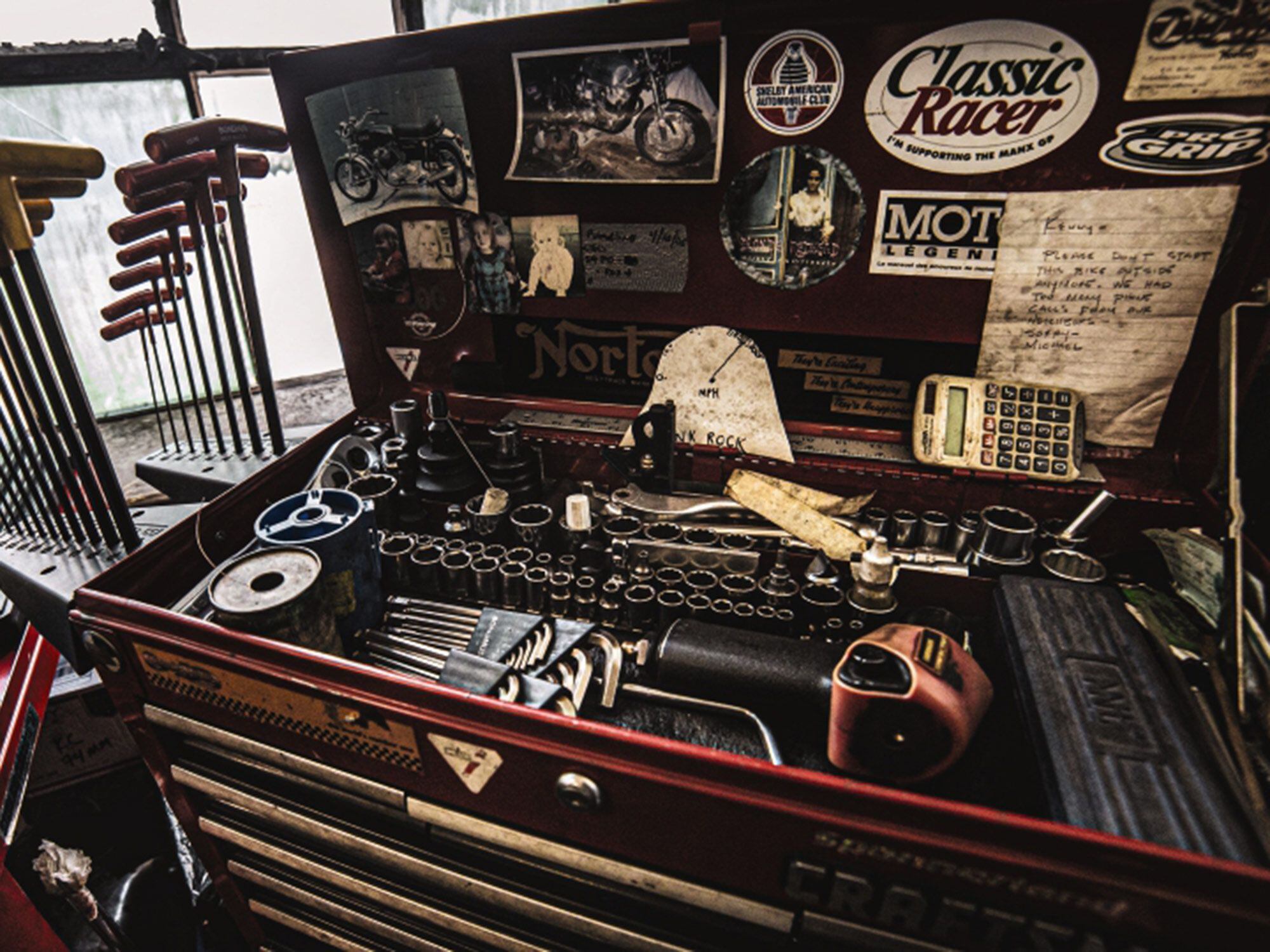
A toolbox lid pasted with family photos, an “I’m supporting the Manx GP” sticker, and one of the band Blonde Redhead. ( Peter Domorak/)“The motorcycle thing was a hobby, but I realized I had a knack for it. When I bought my Commando, I didn’t own a wrench. I said, ‘OK, I’ve got to fix this.’ It was less about testosterone and motorcycles and the culture that came with that, and more about the mechanics and the beauty of it.”
Today, restoring Commandos is NYC Norton’s bread and butter, but Cummings emphasizes the importance of racing: “I really try to apply the racing [principles]—only in the reliability sense—to the builds. A streetbike has to be able to endure like a racebike.”

Matchless G50s and a Commando engine on the bench. (Peter Domorak/)And Cummings knows a thing or two about making vintage racebikes go the distance. Last year, racer Tim Joyce won the AHRMA Formula 750 Championship aboard an NYC Norton Seeley twin. The team also races single-cylinder AJS 7Rs and Matchless G50s, assembling its engines using parts sourced from its UK-based partner, Minnovation Racing.
Cummings is himself an accomplished racer, having won four consecutive BEARS (British European American Racing Series) championships from 2007-2010 aboard a Seeley Commando. Not bad for a self-described New York art kid who didn’t start racing until he was 40.
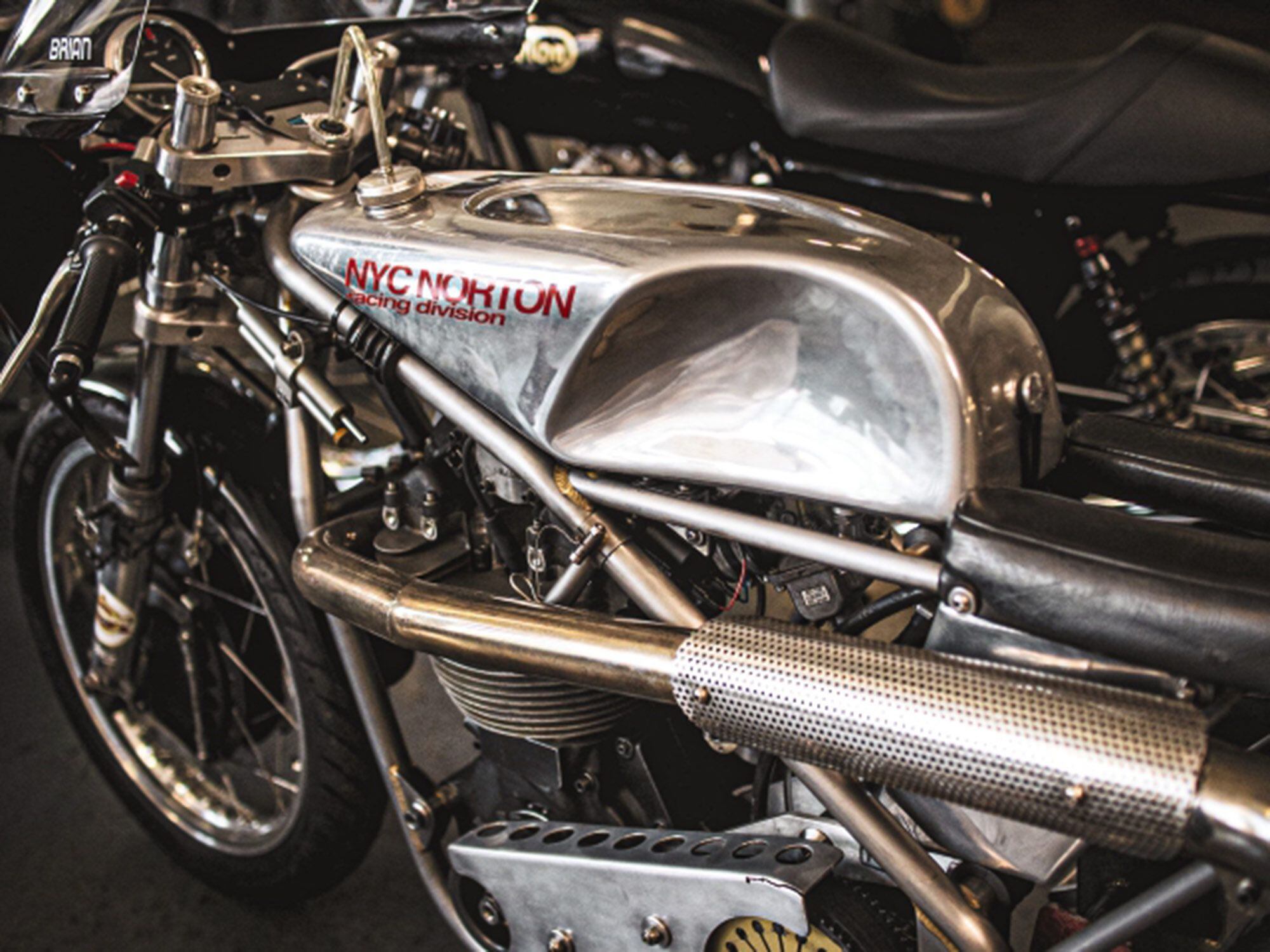
Cummings says of NYC Norton’s Seeley Commando racers: “When you’re on the gas, these bikes are incredible; when you’re not riding them hard, they just fight you all the way. Featherbeds are a little easier, a little more forgiving.” (Peter Domorak/)When the economy tanked in 2008, Cummings lost his day job. His motorcycles had by then earned a reputation at racetracks across the country. People wanted NYC Nortons. The transition from “earn a salary to go racing” to “build bikes to go racing” dictated his new trajectory, further stimulating his relentless spirit of pursuit. Not that there haven’t been setbacks.
“My entire existence, particularly in racing, has been waiting for that day to buy a Manx, and instead I’ve bought it 50 times over with Commandos and G50s and everything else.”

NYC Norton’s motto is “You can’t fake a fast lap.” That pretty much sums it up. (Peter Domorak/)Cummings recalls the first time he rode a Minnovation G50 at Cadwell Park, Lincolnshire, England. Imitating owner Martin Page’s northern British accent, Cummings says, “‘Get yourself a G50, Kenny. It’s meant to be taken apart on dirty continental circus floors.’ And he’s right. There’s nothing to them. They’re just a crankshaft, a chain, a camshaft up top, and a piston that goes up and down. It couldn’t be simpler. You can have the motor out in 20 minutes, fix it, and have it back together in an hour.”
And this is his world: fast laps and parts spread over a concrete paddock floor, the absolutes of a crew chief’s stopwatch, the gears and valves and pistons that move a body through space.
But in the world of vintage motorcycle racing, where modern engineering processes are applied to vintage architecture, performance itself is never absolute. The pursuit of it has taken Cummings down a warren with no clear way out.
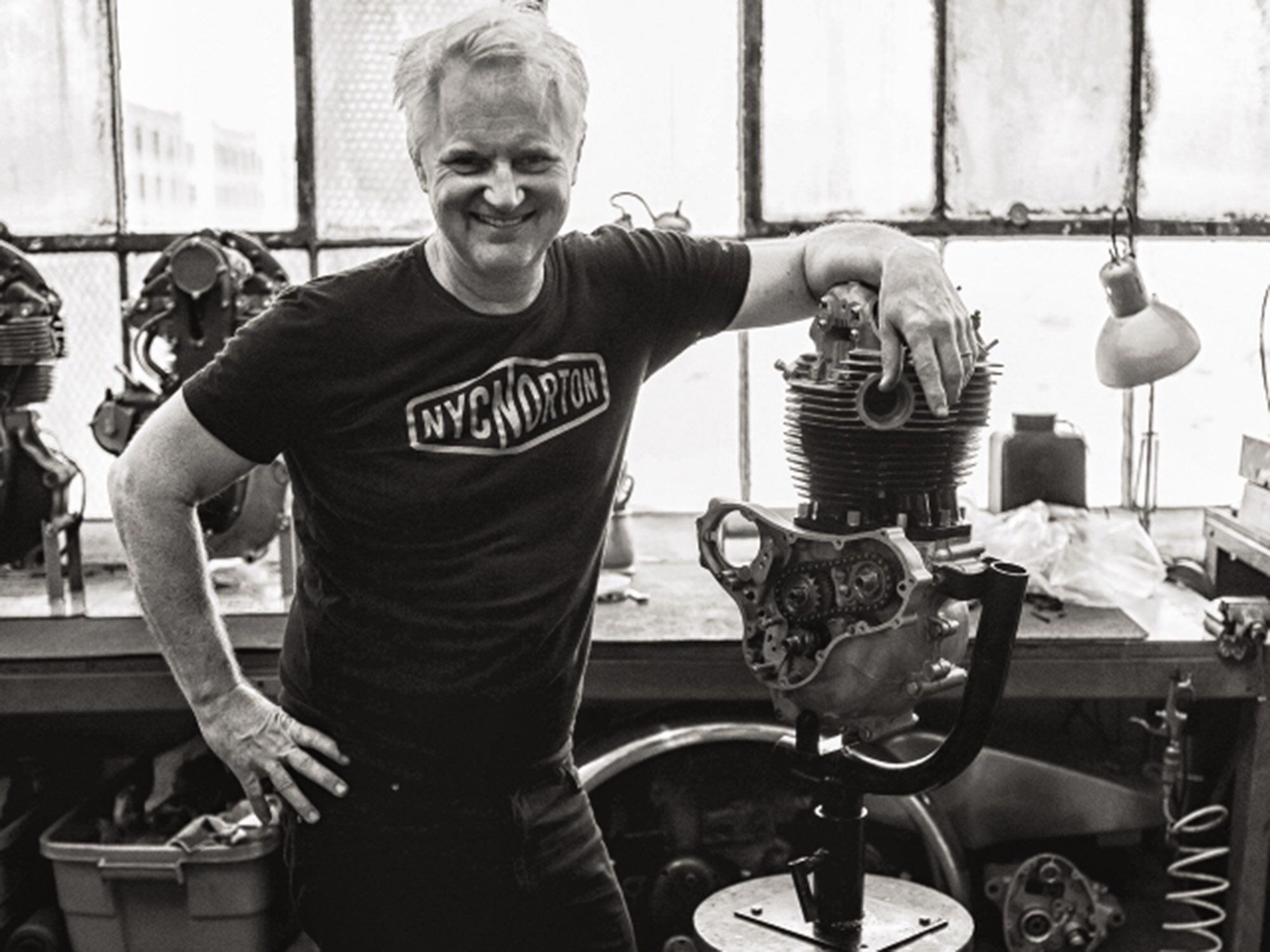
“I have the best job in the world,” Cummings says. “I have wonderful customers who pay me to make the most beautiful thing in the world. I’m building the bikes knowing my customer and what they want to get out of them.” (Peter Domorak/)“If someone could have told me that day I drove to West Virginia and picked up my first Commando how much my life was going to change, I don’t know if I would have done it,” Cummings reflects. “It’s scary to think about what I was before and after that Commando. It’s consumed me. I believe everyone has some things inside of them they have no idea about, and motorcycling has forced this to come out of me.
“I’m probably going to do it until I die,” Cummings says. “Or I’m going to stop very abruptly and do something completely different.”
-
 1
1
-
-
Hello DeeDee,
Welcome to The Motorbike Forum. Please feel free to browse around and get to know the others. If you have any questions please don't hesitate to ask.
Why not tell us a bit about yourself too.
-
 1
1
-
-
-
Hello Last Chance,
Welcome to The Motorbike Forum. Please feel free to browse around and get to know the others. If you have any questions please don't hesitate to ask.
Why not tell us a bit about yourself too.
-
Hello rienbike,
Welcome to The Motorbike Forum. Please feel free to browse around and get to know the others. If you have any questions please don't hesitate to ask.
Why not tell us a bit about yourself too.
-
Hello Julie B,
Welcome to The Motorbike Forum. Please feel free to browse around and get to know the others. If you have any questions please don't hesitate to ask.
Why not tell us a bit about yourself too.
-
-
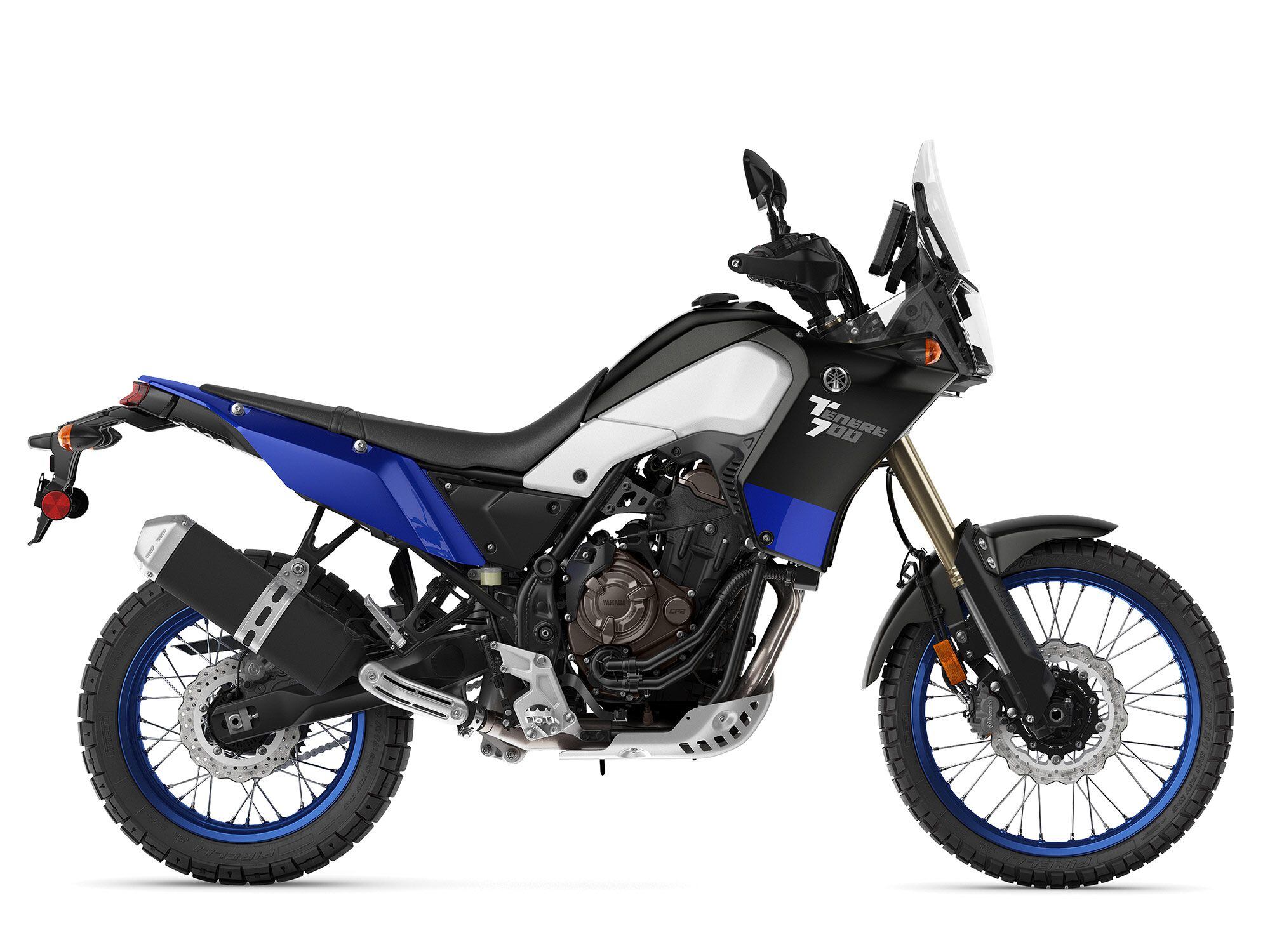
2021 Yamaha Ténéré 700 (Yamaha/)Ups
Smooth throttle response
Rider-friendly and intuitive
Accessible and affordable
Downs
No ride modes or traction control
Top-shelf braking in looks, but not in feel
Plush suspension (great start, but leaves rider wanting more)
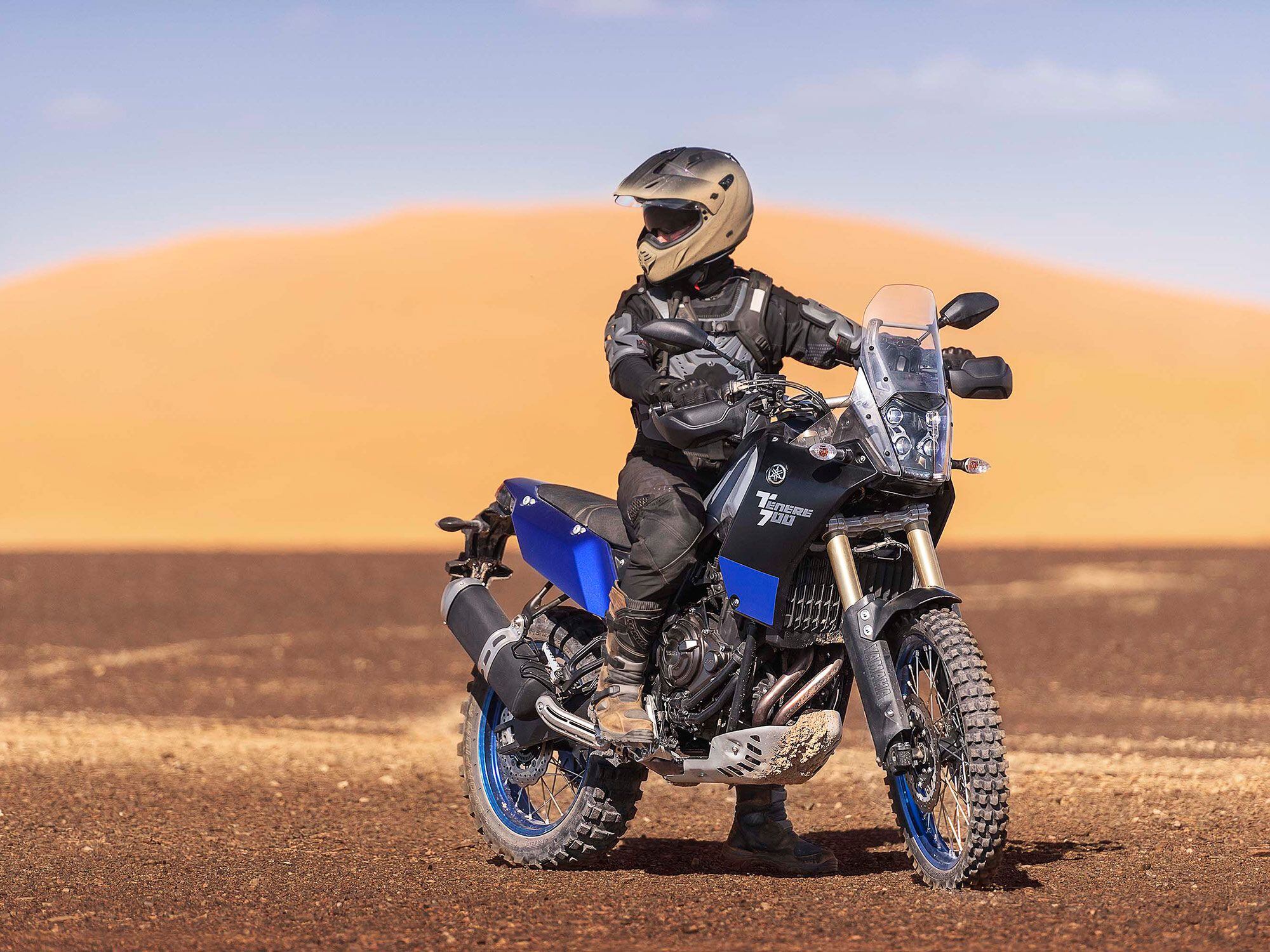
2021 Yamaha Ténéré 700 (Yamaha/)Verdict
The Ténéré 700 is a great midsize adventure motorcycle that comes at an affordable $9,999 MSRP. It undercuts the competition, but at a cost to its overall performance.
Overview
The Yamaha Ténéré 700 is 2021′s highly anticipated midsize adventure motorcycle. It was first introduced to the European market for 2020 and now makes its US debut as a 2021 model. Yamaha takes the revered MT-07 engine, the 689cc CP2 parallel twin, and broadens torque for dirt focus via revised EFI mapping, a Ténéré-specific airbox, and new muffler. The middleweight ADV is designed to appeal to everyone with its overall accessibility, affordability, and on- and off-road versatility.
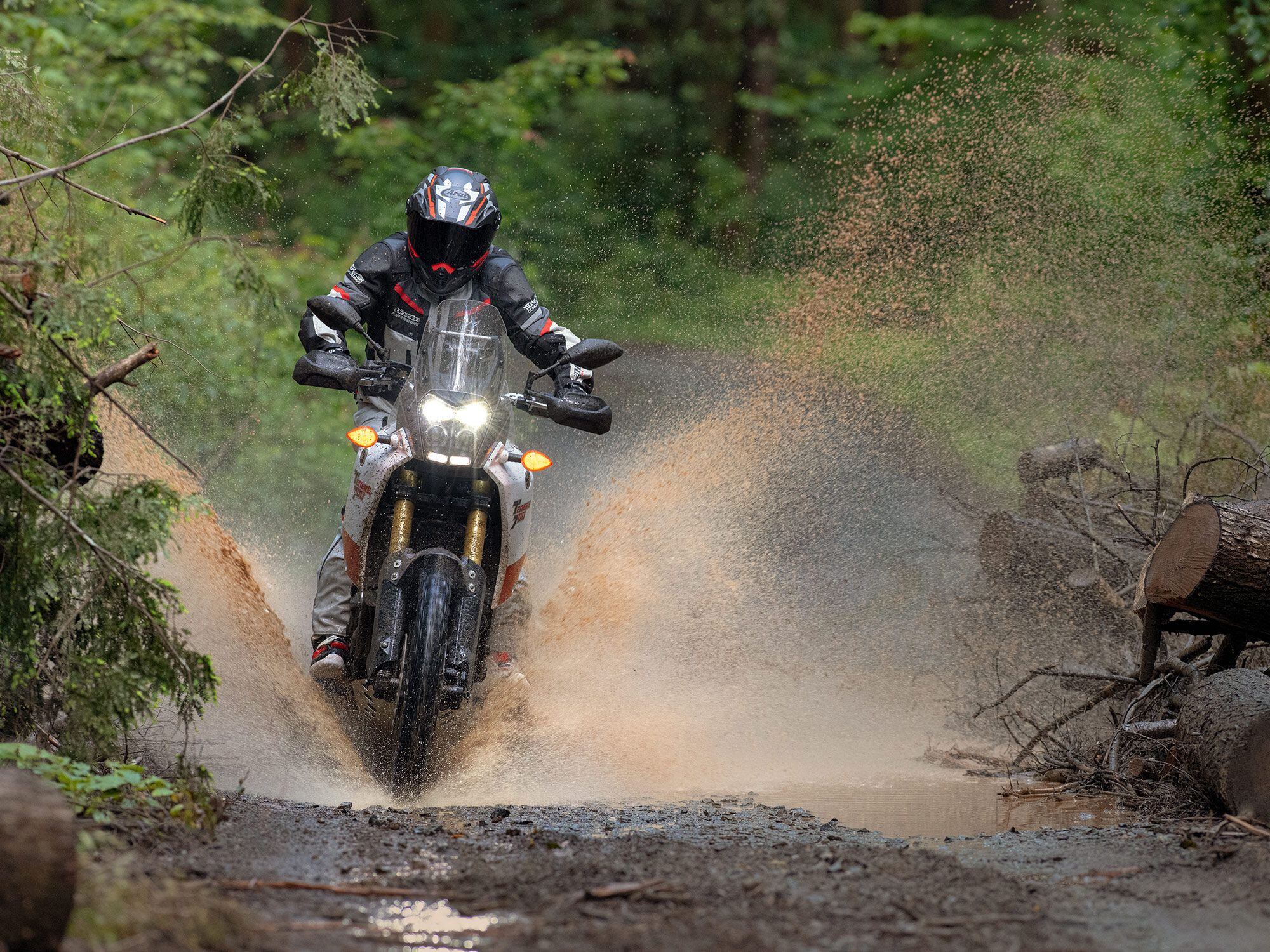
2021 Yamaha Ténéré 700 (Yamaha/)Updates for 2021
Yamaha’s middleweight ADV is new to the US for 2021, although the European market saw it in 2020.
Pricing and Variants
The Ténéré 700 is priced at an MSRP of $9,999. It is available in three colorways: Intensity White, Matte Black, and Ceramic Ice.
Powertrain: Engine, Transmission, and Performance
The Ténéré 700 is powered by the great and plucky 689cc CP2 parallel twin which was pulled from the MT-07 but tuned for off-road. It recorded 63.78 peak hp at 8,870 rpm and 44.09 pound-feet of torque at 6,640 rpm on our in-house dyno. Smooth throttle response and snappy power delivery make for a hoot of a ride on road or off.
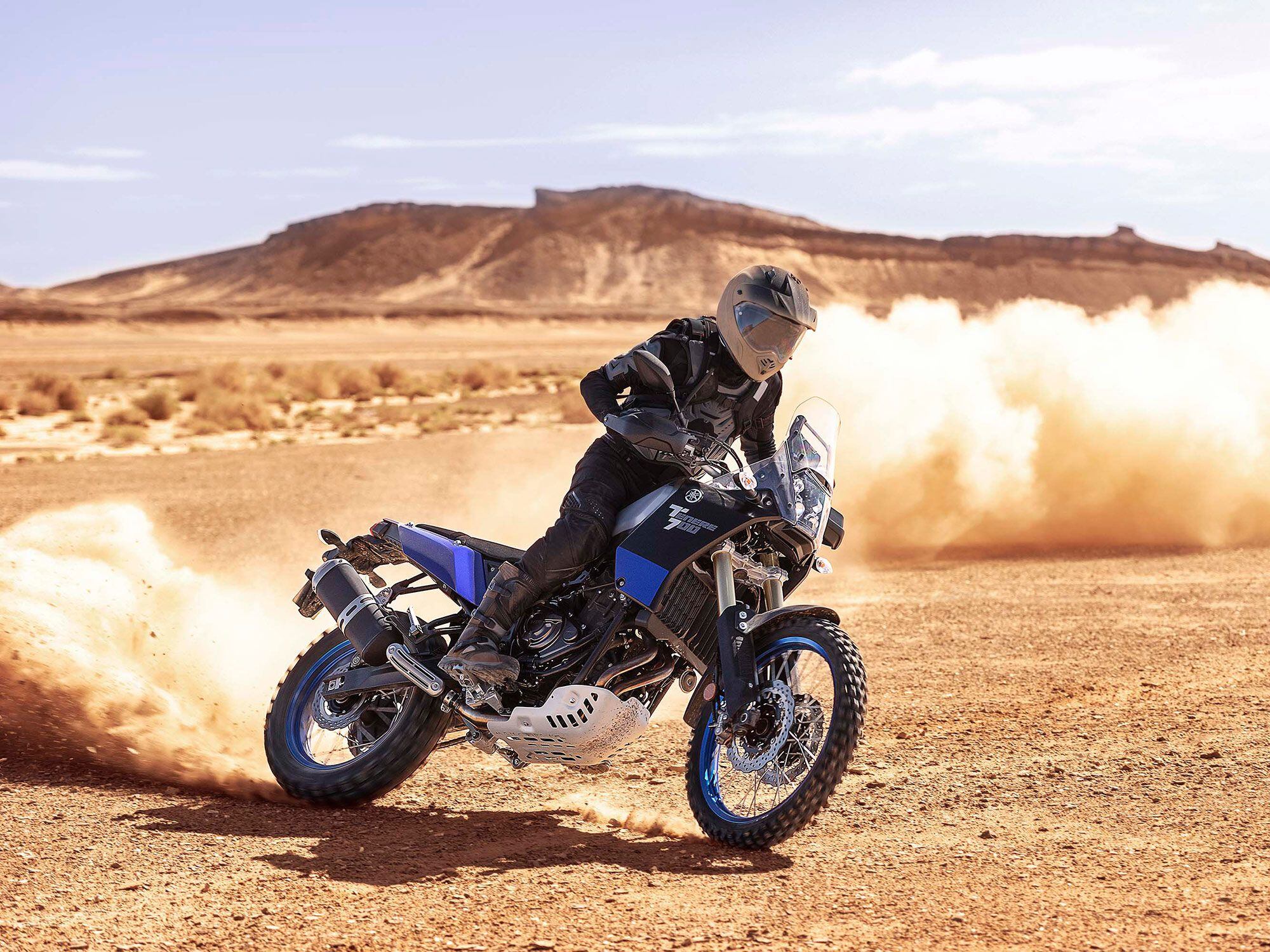
2021 Yamaha Ténéré 700 (Yamaha/)Handling
Sprinting through the mountain roads of Spain, we reported the Ténéré 700 is surprising in its combination of nimbleness and stability. The motorcycle has uncanny road feel and traction with a flickability more befitting of a naked sportbike than an ADV. Oddly, however, the machine’s off-road experience did not have as much of an impact as on-road. With a weight bias toward the rear, it left the front end feeling vague in the dirt. Overall, “the bike is supremely stable in most regards, just finding the right angle of attack on the front tire while managing the rear track is not the set-it-and-forget-it operation that modern ADV riders have become accustomed to.”
Brakes
Slowing the Cycle World-measured 466-pound ADV are Brembo four-piston calipers clamping dual 282mm front rotors matched to a Brembo master cylinder and a single-piston caliper at the rear. In our First Ride review we said they appear to be top-shelf, but ended up falling short due to the front’s lack of initial bite and outright power and the rear brake’s mushy communication. The latter is good for cutting the back end loose though.
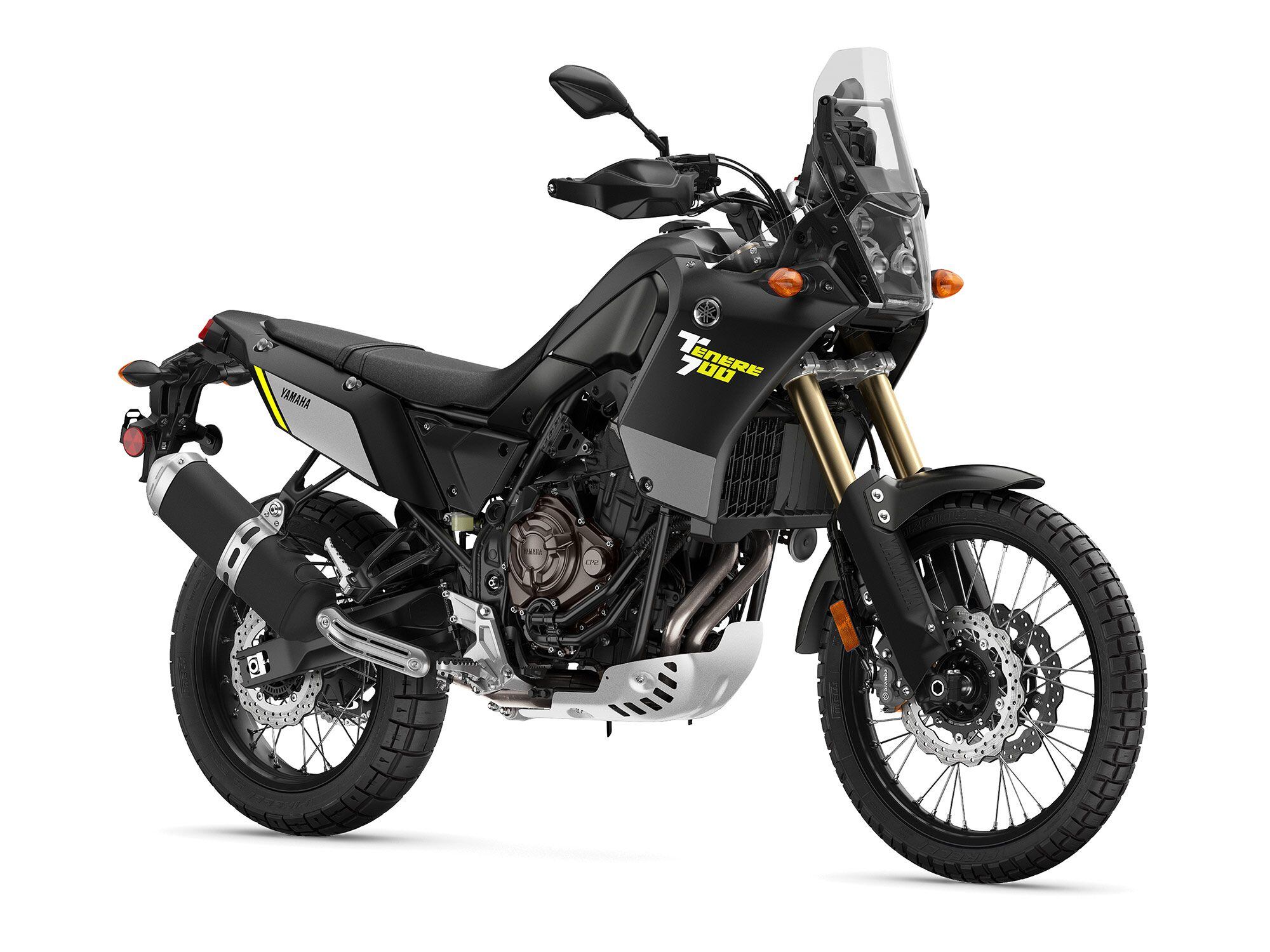
2021 Yamaha Ténéré 700 (Yamaha/)Fuel Economy and Real-world MPG
Measured or claimed fuel economy is currently unavailable.
Ergonomics: Comfort and Utility
After two full days of riding at the launch, the Yamaha proved to be plenty comfortable. Only after a few hours did rider Justin Dawes feel any discomfort from the stock seat, while a taller Rally Seat offered via Yamaha’s accessory catalog reportedly offers more comfort. A measured 34.6-inch seat height places it on the taller side, but is exceptionally narrow between the legs. Handlebar bend is spot-on for seated or standing riding positions as well.
Electronics
ABS comes standard on this ADV and compact LEDs illuminate the way. Other electronics like ride modes and traction control are not available. Information is displayed on a vertically oriented LCD gauge.
Warranty and Maintenance Coverage
The Ténéré 700 includes a one-year limited factory warranty.
Quality
Overall, the quality of this model is sleek and Dakar-inspired to serve the versatile rider. Although it may lack some of the up-spec electronics that seasoned ADV riders are familiar with, it presents an affordable no-frills package that is still suitable for the masses.
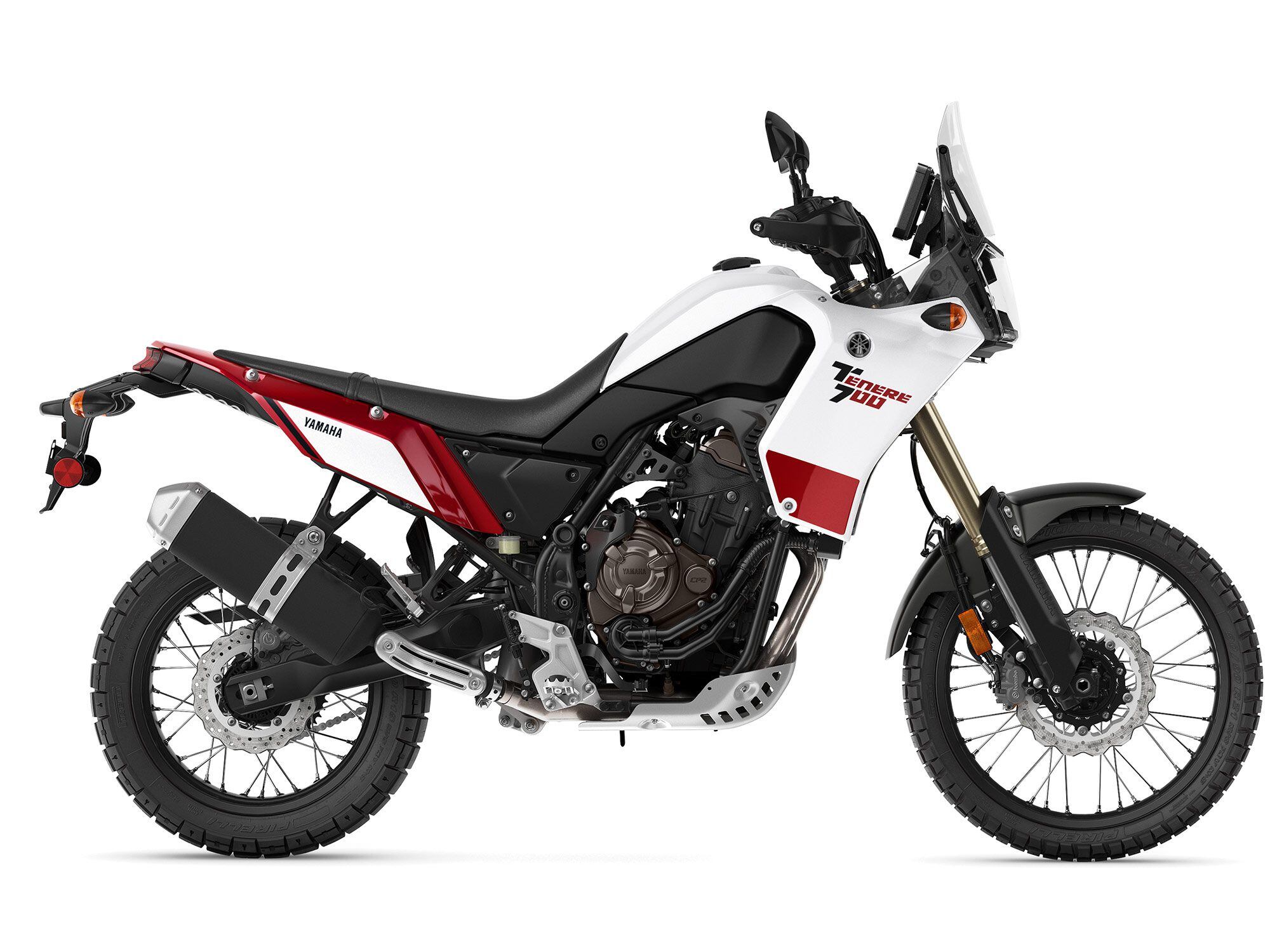
2021 Yamaha Ténéré 700 (Yamaha/)2021 Yamaha Ténéré 700 Claimed Specifications
MSRP: $9,999 Engine: 689cc, DOHC, liquid-cooled parallel twin; 8 valves Bore x Stroke: 80.0 x 68.6mm Transmission/Final Drive: 6-speed/chain Fuel Delivery: Electronic fuel injection w/ a 48mm throttle body Clutch: Wet, multiple disc, cable operation Engine Management/Ignition: TCI Frame: Double-cradle steel tube Front Suspension: 43mm Kayaba USD fork, fully adjustable; 8.3 in. travel Rear Suspension: Kayaba shock, spring preload and rebound damping adjustable; 7.9 in. travel Front Brake: 4-piston caliper, dual 282mm discs w/ ABS and Off-road mode (disengaged) Rear Brake: 1-piston floating caliper, 245mm disc w/ ABS and Off-road mode (disengaged) Wheels, Front/Rear: Spoked wheels w/ aluminum rims; 21 x 2.50 in. / 18 x 4.50 in. Tires, Front/Rear: Pirelli Scorpion Rally STR; 90/90-21 / 150/70-18 Rake/Trail: 27.0°/4.1 in. Wheelbase: 62.8 in. Ground Clearance: 9.4 in. Seat Height: 34.4 in. Fuel Capacity: 4.2 gal. Wet Weight: 452 lb. Contact: yamaha-motor.com Cycle World Tested Specifications
Seat Height: 34.6 in. Wet Weight: 466 lb. Rear-Wheel Horsepower: 63.78 hp @ 8,870 rpm Rear-Wheel Torque: 44.09 lb.-ft. @ 6,640 rpm 0–60 mph: 4.5 sec. 1/4-mile: 13.33 sec. @ 101.11 mph Braking 30–0 mph: 37.0 ft. Braking 60–0 mph: 144.6 ft. -
-
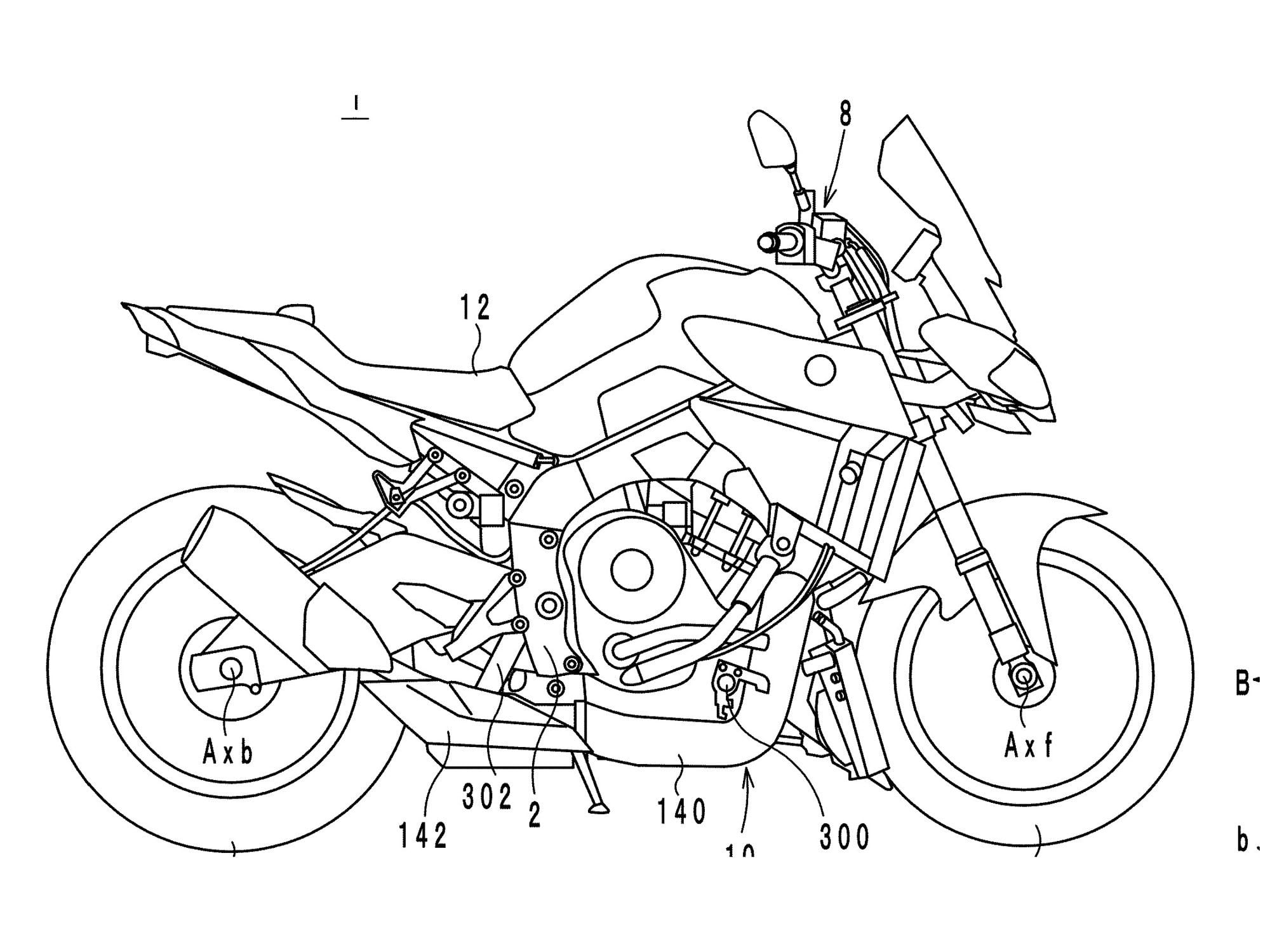
New patents show Yamaha is still heavily involved in its turbocharged triple-cylinder bike project. ( Japanese Patent Office/)Last year we revealed Yamaha’s turbocharged three-cylinder development project, which featured a machine that’s already reached prototype stage and is helping to develop new ways improving performance, lowering emissions, and helping fuel economy while eliminating the traditional problems of boosted bikes. Now the firm has filed another tranche of patents that give further insight into the thinking behind a design that might well be the template for the next generation of high-performance motorcycles.
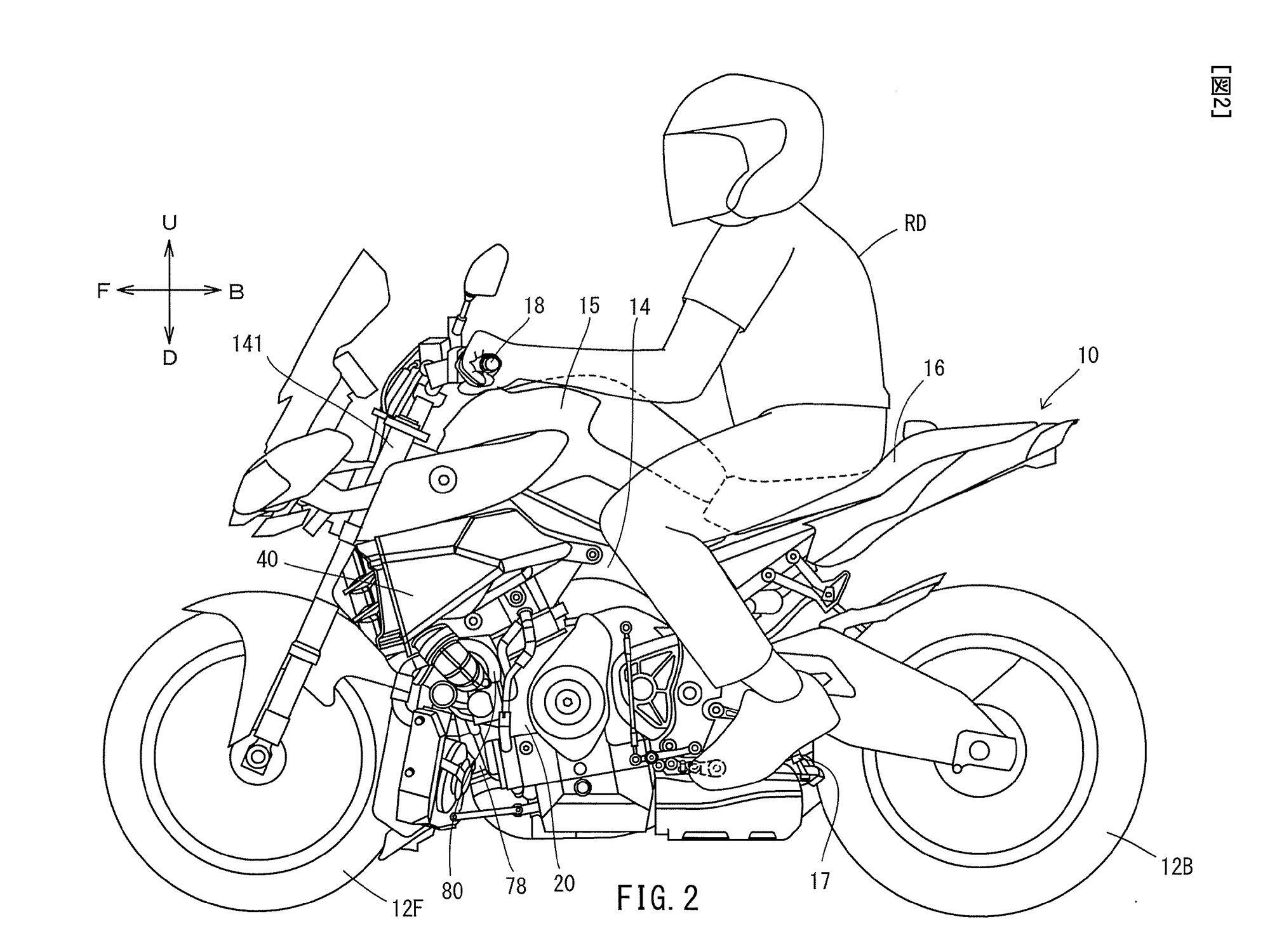
The new filings give more detail as to the positioning of the turbocharger, intercooler, and radiator. (Japanese Patent Office/)To recap, Yamaha confirmed the existence of the project last November, unveiling a prototype that used an MT-10-derived chassis and featured a completely new 847cc, turbocharged three-cylinder engine with direct fuel injection and variable valve timing on both the intake and exhaust camshafts. Despite sharing the same capacity as the MT-09, the engine has vastly different undersquare dimensions—with a 73mm stroke and 67.5mm bore—creating a low-revving, torque-focused motor that hits its 180 hp peak at just 8,500 rpm. More impressive still is the engine’s torque figure of 130 pound-feet, which plateaus from 3,000 to 7,000 rpm. All this is achieved with a 30 percent reduction in CO2 compared with similarly powerful, normally aspirated engines, while NOx and hydrocarbon emissions are at less than 50 percent of the maximums allowed under the latest Euro 5 emissions rules.
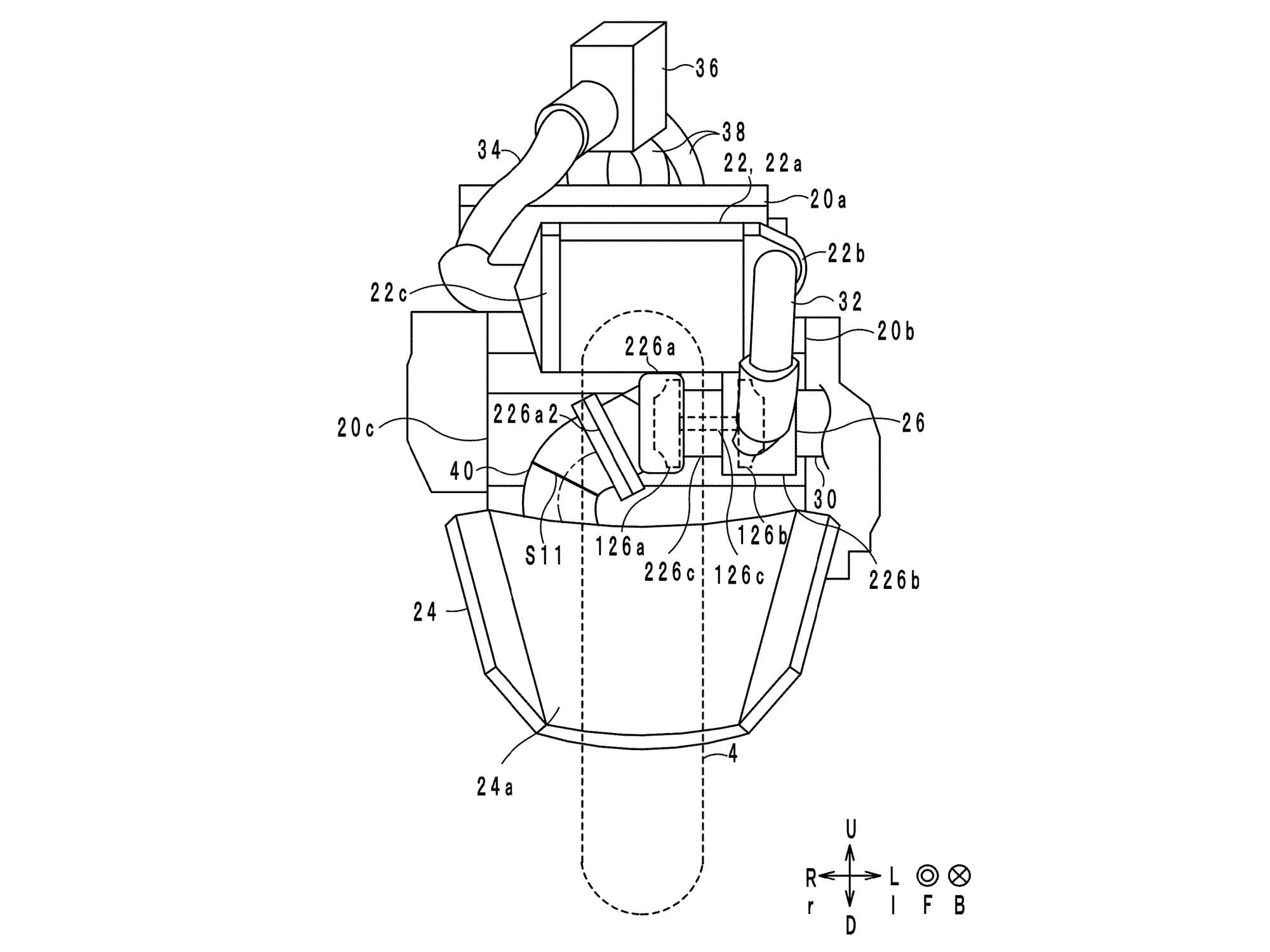
The radiator’s unusual location—forward and closer to the ground—takes mass centralization to another level. It even has chamfered corners to aid in ground clearance. (Japanese Patent Office/)The latest Yamaha patents for the bike focus on a selection of detailed elements of the design, such as the positioning of the turbocharger itself, the intercooler, and the water radiator to package a nearly 1,000cc turbo engine into a machine no larger than a normally aspirated literbike.
By using the existing MT-10 chassis as its starting point, Yamaha had a fixed set of dimensions to work within, but it also had extra components to fit within those boundaries. In the original story last November we pointed out that the prototype’s radiator appeared to be unusually close to the ground as a result of needing to fit the turbo and intercooler into its normal space behind the front wheel. Yamaha’s new patents point out that it’s a feature rather than a glitch, and that the repositioned radiator is intended to allow the wheelbase to be shortened despite the extra parts fitted in its place.
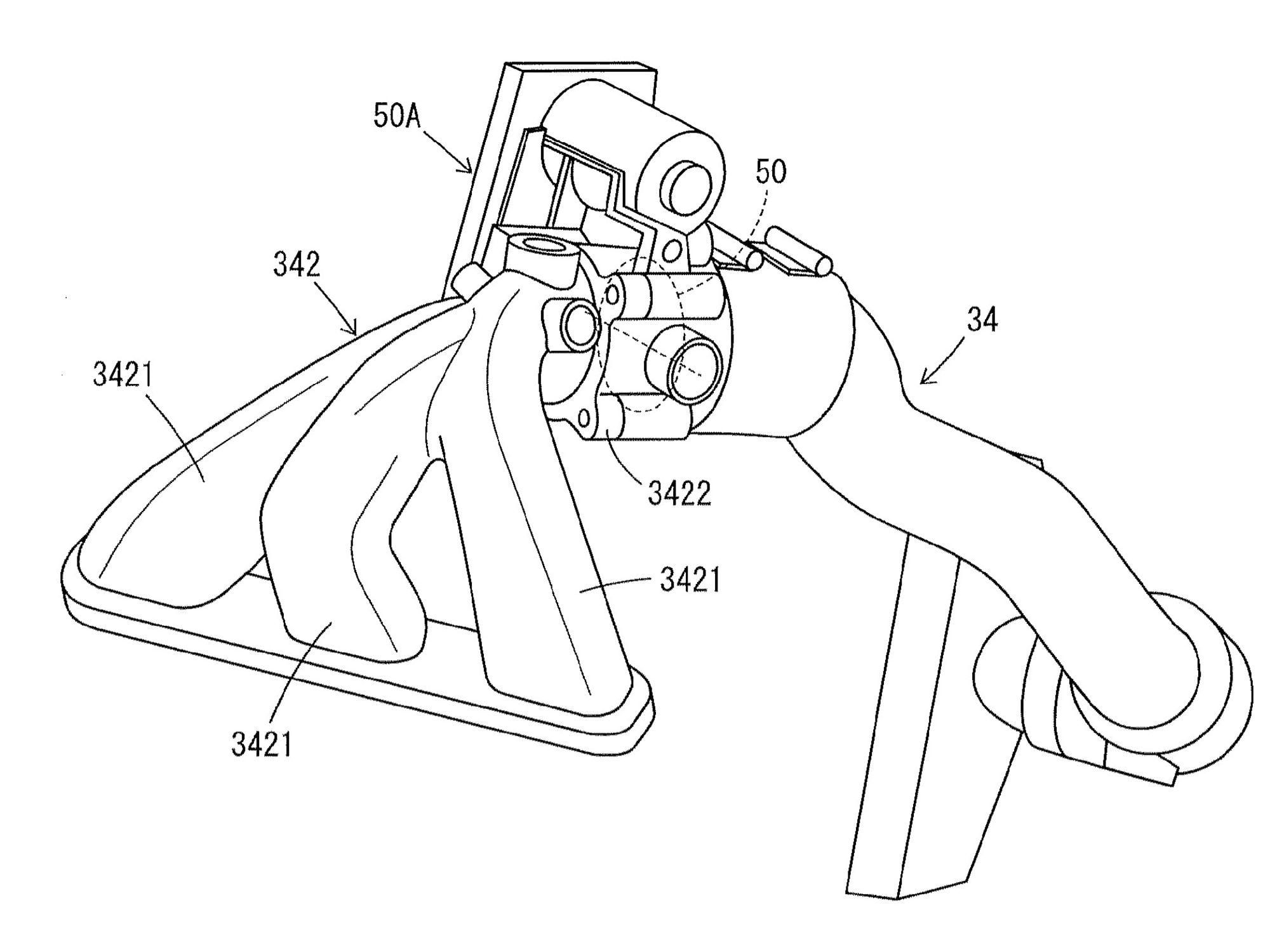
The turbo and intercooler are placed to optimize airflow and reduce turbo lag. (Japanese Patent Office/)In a side view of the design, the radiator—low down in front of the engine—overlaps with the front wheel. It’s curved to allow either side to sit further forward than the rear edge of the front tire, and compared to a conventional bike, it’s clear this space is usually empty. It shows Yamaha pushing the boundaries of the “mass centralization” concept by fitting even more between the front and rear wheels of the bike.
Angling the radiator to lean it backward means it can be mounted close to the wheel yet still allow the front suspension to compress, while the chamfered lower front corners of the radiator—seen in the front-on view in the patent—allow it to stay clear of the ground even at high angles of lean. By moving the radiator into what’s normally “dead” space on most bikes, Yamaha has effectively cleared room for the turbocharger and intercooler to sit in that previously occupied spot.
Why put the radiator here instead of the smaller intercooler? There are two reasons. One is that airflow from the turbo to the engine needs to pass through the intercooler, and having it go the shortest route possible will help reduce turbo lag, which is one the development team’s key targets. Second, the pipework for the air to run through is much thicker than the water hoses connected to the radiator, so making those pipes any longer vastly increases the overall volume they take up.
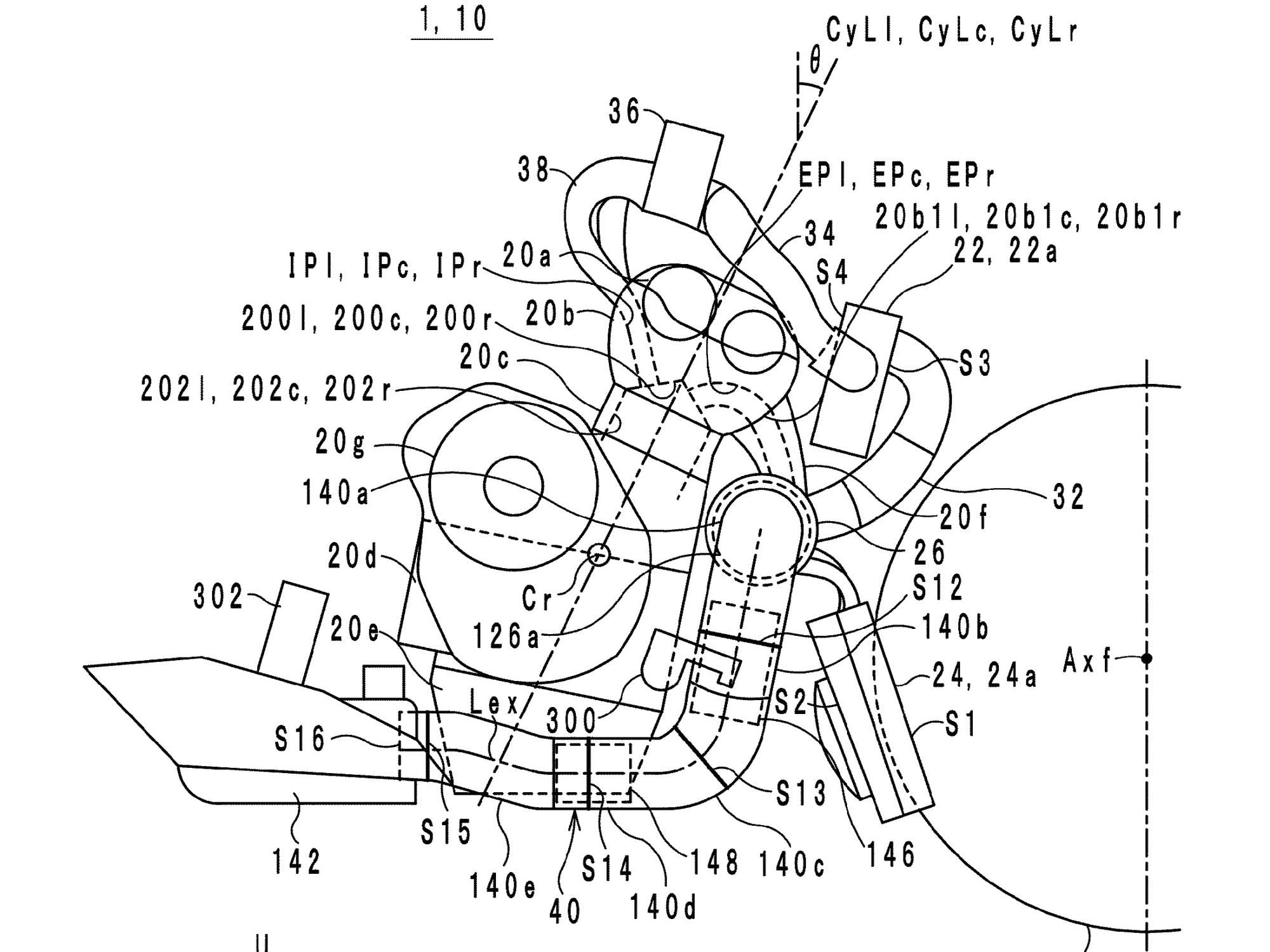
Side view shows just how close the backward-angled radiator is positioned to the front wheel, thus opening up space for the other components. ( Japanese Patent Office/)The vital aspect of throttle response—and the effort to eliminate the turbo lag that dogged the short-lived forced-induction bikes of the mid-1980s—is also addressed by another of Yamaha’s patents. That filing details how the use of a single, large throttle valve leading to a three-way intake manifold improved throttle response when compared to a more conventional system of using individual throttles for each cylinder.
One of the new patents details how during roll-on throttle tests at 3,200 rpm (effectively “off-boost”) with the turbo’s wastegate fixed fully open and the variable valve timing locked, the single-throttle system with relatively long intake runners offered significantly improved response compared to more conventional design with less throttle area and shorter intakes.
Although these patents don’t provide incontrovertible evidence that a turbocharged production bike from Yamaha is imminent, the level of effort going into the project and the seemingly impressive results being achieved mean it’s looking increasingly likely that it will influence future showroom offerings.
-
Beta motorcycles are designed and targeted for the everyday rider. The Italian manufacturer’s RR line of bikes are intended to be more than just a playbike. They focus on “rideability.” Beta takes pride in designing a motorcycle that appeals to the more common, everyday rider.

Riding the 2021 Beta 250 RR in Southern California. (Mark Kariya/)The 250 RR is a carbureted, oil-injected two-stroke with an adjustable power valve. 2021 also marks the second year it features a counterbalancer, which greatly reduces engine vibration. That was just one of the many changes it received in its complete makeover for the 2020 model year; other updates included a new frame, swingarm, fuel tank, seat, and bodywork. For 2021, Beta’s 250cc two-stroke enduro bike features a stronger rear subframe, changes to the shim stacks in the fork and shock, new seat foam and seat base, an improved air filter housing, new mounting of the side panel, and a color change to Italian red.
Related: 2021 Beta 250 RR Dyno Test

After enjoying a major overhaul last year, the Beta 250 RR returns for 2021 with changes to the shim stacks in the fork and shock, a stronger rear subframe, a new seat foam and seat base, an improved air filter housing, new mounting of the side panel, and different color plastics. (Mark Kariya/)Some of the key features of the 2021 250 RR include an adjustable power valve, six-speed gearbox, Brembo hydraulic clutch, nickel-plated pipe, non-spark-arrestor silencer, 2.6-gallon fuel tank, push-button seat removal, full light package with prewired turn signal connections, a skid plate, and an ignition map button for slippery conditions which is mounted just forward of the gas cap. It’s worth noting that while the bike comes standard with electric start, an optional kickstart backup can be purchased as an accessory for approximately $400. Also included with the bike is a complete tool kit and a front number plate in case the owner wishes to remove the headlight and odometer.
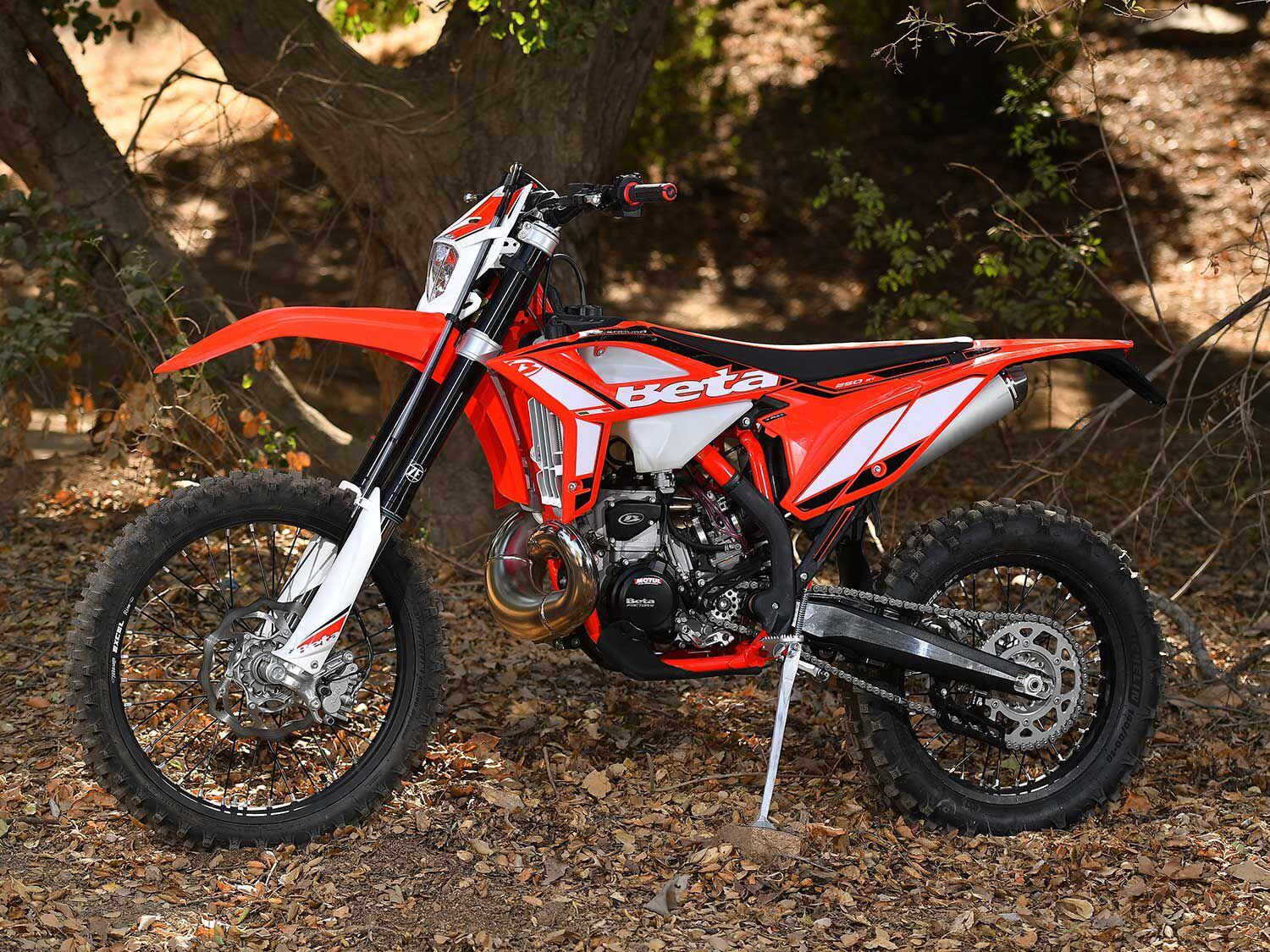
Because it is oil-injected, the 250 RR does not require premixed fuel. The oil reservoir, which has a capacity of 650cc, is housed underneath the seat and is easily accessible with the bike’s push-button seat removal design. (Mark Kariya/)2021 Beta 250 RR Engine
I am somewhat familiar with the Beta RR models as we tested the 2020 300 RR last year. My first thought was the 250 might fall a little short on power. I was pleasantly surprised. While there is a small reduction in midrange torque compared to its larger-displacement sibling, the 250 RR engine runs very well and is lighter and more free revving. The counterbalancing is also just about spot-on with only the smallest sensation of engine vibration when riding the bike.

The amount of power and controllability of the 250 RR engine are two of its standout qualities. (Mark Kariya/)In full-throttle situations, the 250 RR makes good power. Engine recovery is up to par, with minimal clutch input needed should you let the rpm drop a little too low. The Italian machine has a very light engine feeling and a smooth transition as the power builds and it really starts to come on the pipe. This might even be an advantage for the less experienced rider or someone who just wants the power to be a little more forgiving.

The jetting of the Keihin PWK 36mm carburetor is close in stock trim, but the bike runs a touch lean on closed throttle and deceleration. Turning the air screw in helps, but a one-size-larger pilot jet is advisable for the long run. (Mark Kariya/)For the most part the jetting was good, but in stock form it was a touch lean on closed throttle and deceleration. I went all the way in on the air screw, which helped. This gave it a little smoother idle and improved response on initial throttle opening. Going up one size on the pilot jet may correct this and round out the jetting.
As far as the transmission, it is a typical six-speed gearbox. It has what you are looking for from an enduro bike with a super-low first gear and decent spacing up to a sixth gear that will get you going about as fast you would ever want to go. The Brembo hydraulic clutch works smoothly and makes shifting almost effortless.
2021 Beta 250 RR Suspension & Chassis/Handling

It’s easy to change body position when at the controls of the 250 RR thanks to its open, flat cockpit and narrow chassis. (Mark Kariya/)The 250 RR comes standard with a Sachs 48mm open cartridge fork that has an external adjustment for spring preload, compression damping, and rebound control. All of these adjustments are made on the top of the fork without the need for tools. The rear of the bike tracks well and the Sachs shock has a little more holdup than the fork. Fortunately, the shock has a high-speed compression adjuster that can be changed by hand. With this and the tool-less adjustability of the fork, you can conveniently make noticeable tweaks to better suit the terrain you are riding.
There is a nice compact display in front of the bar pad that shows speed, average speed, maximum speed, a tripmeter, hourmeter, and battery voltage. Also the handy low premix oil light, to remind you when it’s time to refill the oil reservoir, is easily accessible because of the push-button seat removal system. The brakes are Nissin with a 260mm front and 240mm rear rotor.

The 250 RR’s chassis has a rigid feeling in the handlebar and its fuel mileage is not the best if you are riding it hard. (Mark Kariya/)Ridden correctly, the 250 RR has a decent planted feeling and the Michelin Enduro tires perform surprisingly well, especially considering they are DOT-approved. The low knobs and soft compound offer good bite in the rocks with an impressive amount of lean-angle traction on hard-packed two-track and fire-road conditions. The cockpit is very open, offering a very flat seat from front to back. Although the fuel tank has a 2.6-gallon capacity, it can easily be mistaken for a smaller motocross-type tank because it doesn’t have any major protrusions at the top near the filler cap or on the sides.
The 250 RR shines in the tight single-track. It’s a blast to ride in technical canyons with rock steps and waterfalls. While the frame, billet triple clamps, and solid bar mounts give the bike a slightly rigid feeling, I appreciated the precise steering and front wheel feedback.
2021 Beta 250 RR Overall Impression

According to Beta, its RR models are designed for a casual off-road rider or racer who is looking for more than just a playbike. After testing the 250 RR, we agree with the Italian manufacturer’s sentiment. The bike does a good job of exactly what it is designed to do. (Mark Kariya/)What impressed me the most about the 250 RR was how well it worked as a complete package. The suspension setting change from the 2020 to 2021 model makes the bike feel more polished. Considering the Sachs units are set up for enduro and harder technical-type riding, the bike handles single-track and some higher-speed riding with better-than-expected performance.
If the 2021 Beta 250 RR was in my stable of bikes, it would get ridden quite often. It does what it is designed to do very well and it still has enough capability to venture out of its comfort zone. Trails, enduro, and just fun riding are what this bike is built for and since that covers probably 70 percent of the riding in North America, I give this bike a grade of A-. With slightly better initial comfort in the handlebar and a touch larger fuel tank, this bike would get an A+.
Gearbox
Helmet: Arai VX-Pro4
Goggle: Scott Prospect
Hydration Pack: USWE Outlander 9
Jersey: Fly Racing Evolution DST
Gloves: Fly Racing Evolution DST
Pants: Fly Racing Evolution DST
Boots: Sidi Atojo SRS
2021 Beta 250 RR Tech Spec
PRICE $8,799 ENGINE 249cc, liquid-cooled, single-cylinder two-stroke TRANSMISSION/FINAL DRIVE 6-speed/chain MEASURED HORSEPOWER 38.9 hp @ 8,100 rpm MEASURED TORQUE 27.3 lb.-ft. @ 6,600 rpm FRAME Steel double cradle FRONT SUSPENSION Sachs 48mm inverted fork adjustable for compression damping, rebound damping, and spring preload; 11.6-in. travel REAR SUSPENSION Sachs shock adjustable for spring preload, high-/low-speed compression damping, and rebound damping; 11.4-in. travel FRONT BRAKE 2-piston caliper, Nissin 260mm disc REAR BRAKE 1-piston caliper, Nissin 240mm disc WHEELBASE 58.3 in. MEASURED SEAT HEIGHT 37.3 in. FUEL CAPACITY 2.6 gal. MEASURED WEIGHT 247 lb. wet AVAILABLE Now CONTACT betausa.com MEASURED SEAT HEIGHT: 32.3 in. FUEL CAPACITY: 4.5 gal. MEASURED WET WEIGHT: 410 lb. AVAILABILITY: Now CONTACT: kawasaki.com -
Hello Amai,
Welcome to The Motorbike Forum. Please feel free to browse around and get to know the others. If you have any questions please don't hesitate to ask.
Why not tell us a bit about yourself too.
-
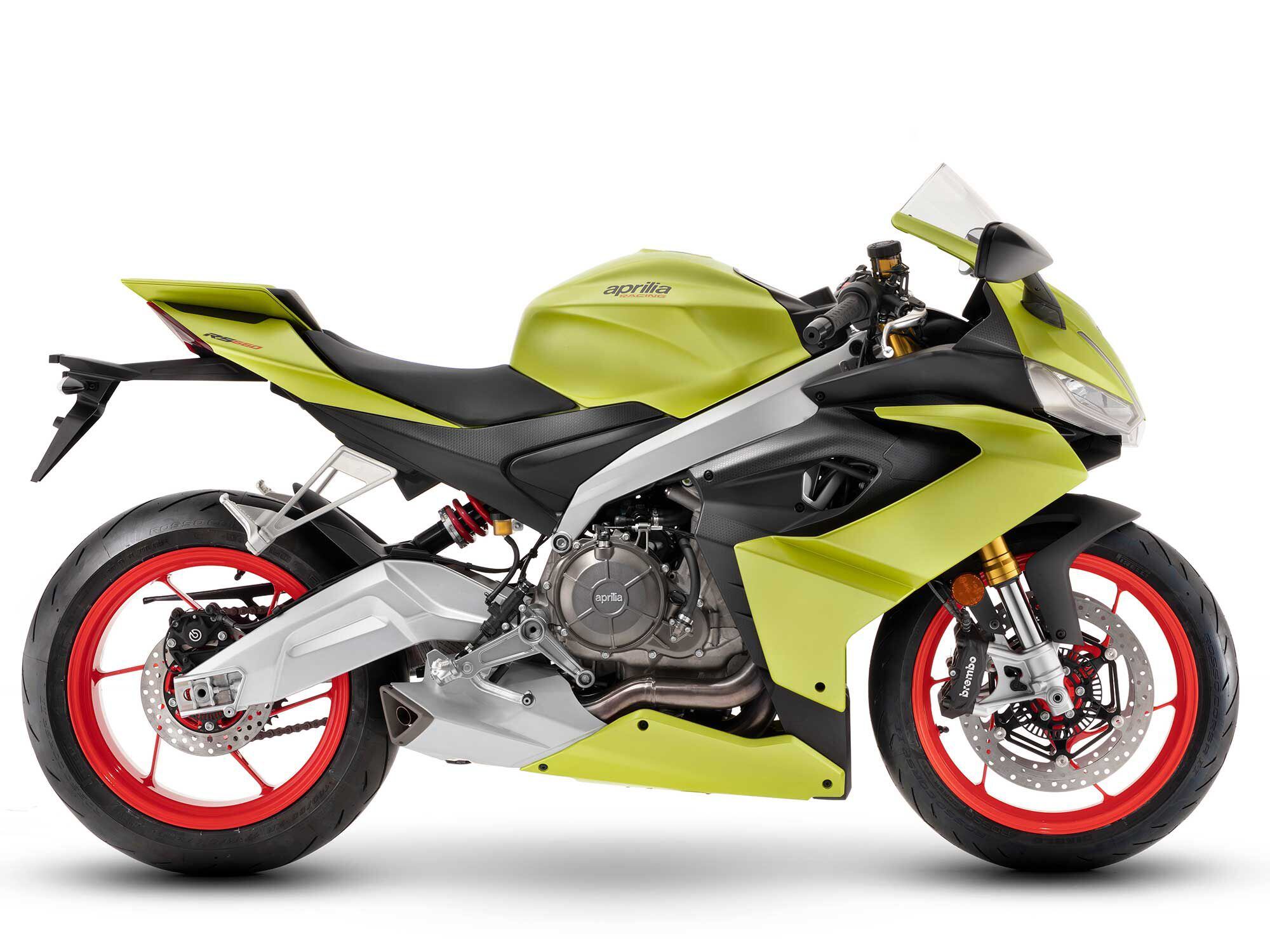
2021 Aprilia RS 660 (Aprilia /) Ups
Nimble handling
Compact
Excellent ergos
Fantastic electronics
Class-leading power
Downs
Comfortable pilot seat, not so for the passenger
Verdict
Its well-balanced performance, rideability, and sophisticated electronics package make it an enticing middleweight for rookie and experienced riders alike.
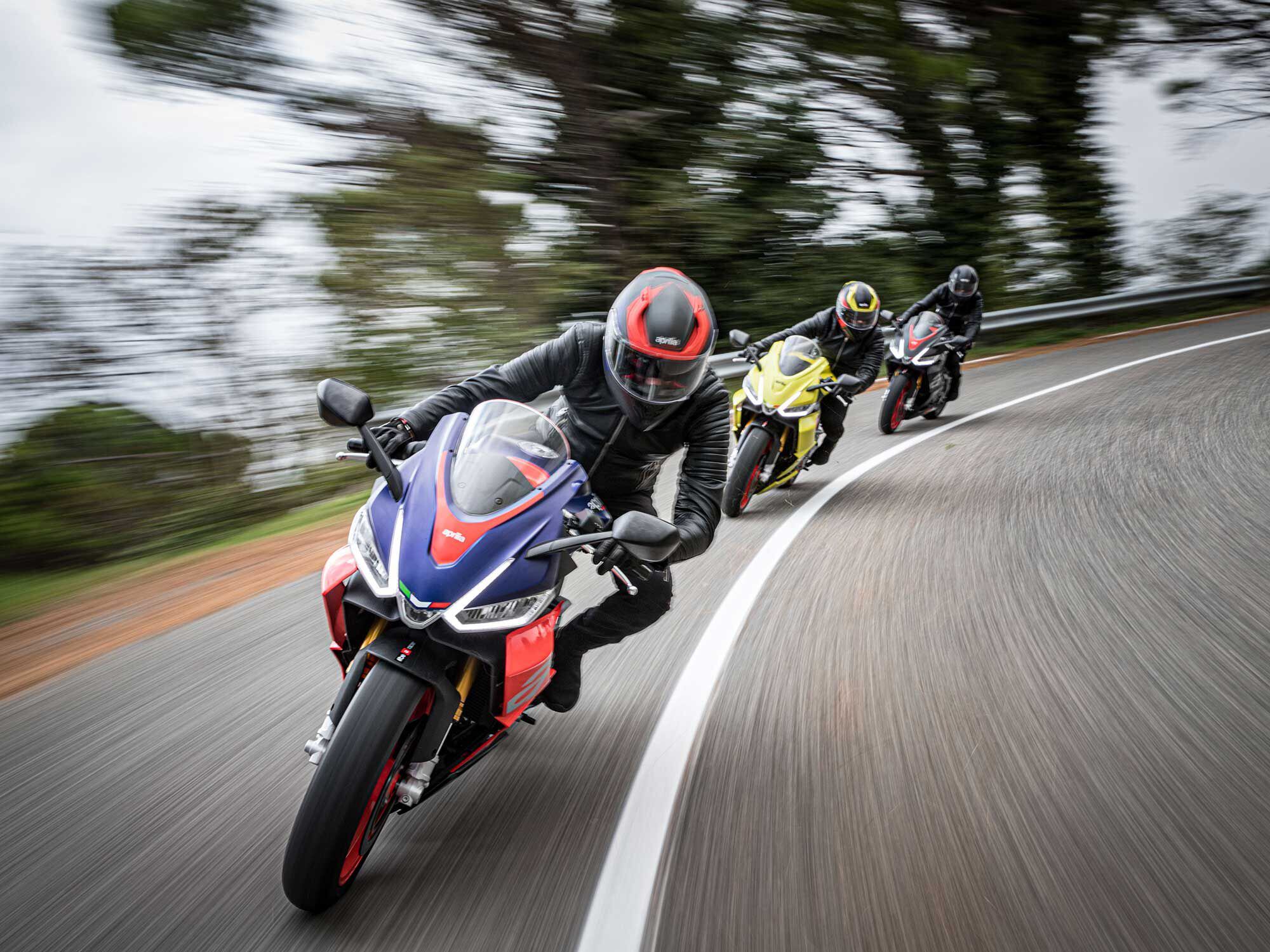
2021 Aprilia RS 660 (Aprilia /) Overview
When the concept Aprilia RS 660 was revealed at EICMA 2018, the Noale manufacturer caught the sportbike world’s attention and now that concept has come to fruition. The 659cc parallel twin is cradled in a lightweight aluminum frame with aerodynamic double fairings. It appeals to many skill levels and riding purposes with its nimbleness, engine performance, and racing-derived electronics package. Additionally, Aprilia has usable accessories available to tailor the bike to the track-focused or the road warrior.
Updates for 2021
The Aprilia RS 660 is new for 2021.
Pricing and Variants
Eye-catching colorways include Apex Black, Lava Red, and the especially noticeable Acid Gold. Interested buyers are looking at an MSRP of $11,299 for Apex Black and Lava Red and $200 more for Acid Gold.
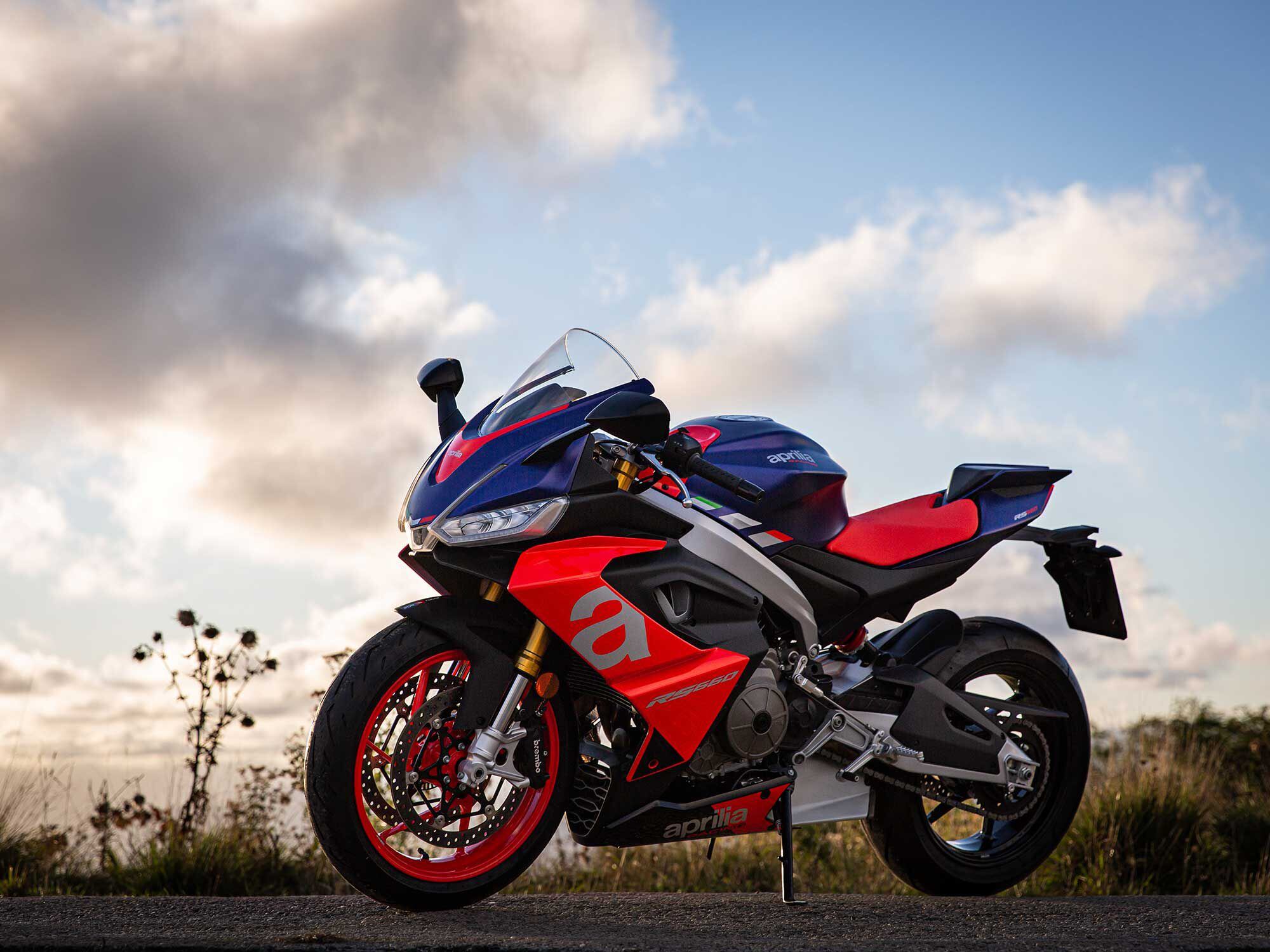
2021 Aprilia RS 660 (Aprilia /) Powertrain: Engine, Transmission, and Performance
The 659cc parallel-twin engine provides generous torque for an easy life cruising through traffic and strong acceleration for getting up to speeds well over 100 mph. Its versatile engine is appropriate for day-to-day and trackday riding and is claimed to produce 100 hp, a class-leading figure in its category. “The engine is generous, with torque over a wide range of revs, responding smartly from 4,000 all the way past 10,500, though never in an overly aggressive way,” Bruno dePrato stated in his First Ride aboard the new machine. “The RS 660 doesn’t need extreme engine tuning to deliver strong performance, thanks to the excellent power-to-weight balance of the whole package.”
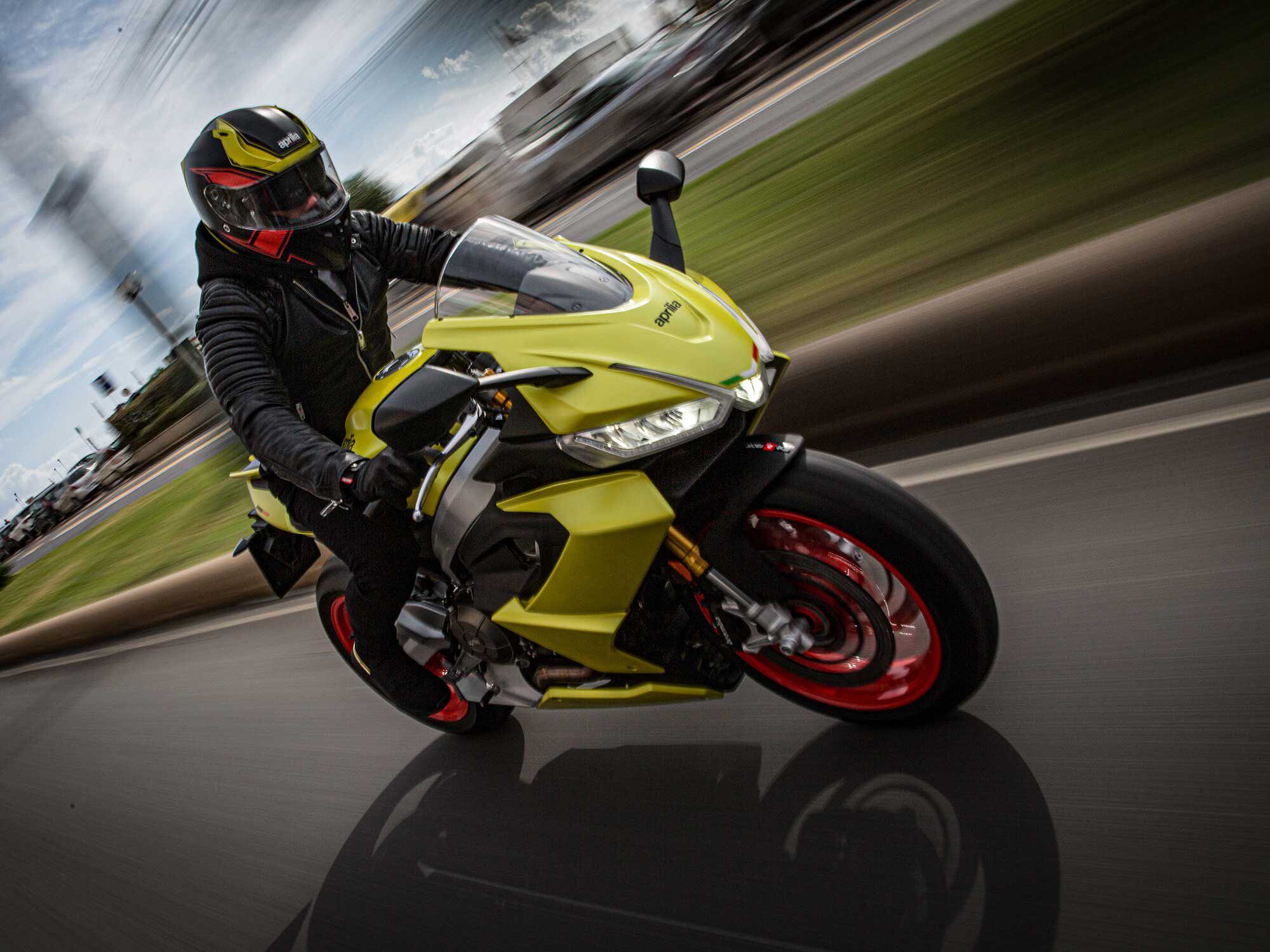
2021 Aprilia RS 660 (Aprilia /) Handling
The RS 660 is praised for its light handling, quickly negotiating side-to-side ess turns with ease, while remaining very neutral with excellent weight distribution. The best part? A strong connection to the front tire’s contact patch bolsters confidence at any speed, resulting in pinpoint precision through the corners. Could this be the result of the effect of the stabilizing double fairing?
Brakes
A pair of twin four-piston Brembo calipers clamping to 320mm discs up front quickly bring the relatively lightweight (a claimed 404 pounds) RS 660 to a quick halt, complementing the motorcycle’s agile handling. A single two-piston Brembo caliper and 220mm disc handle rear braking.
Fuel Economy and Real-world MPG
No CW-recorded numbers are currently available. Claimed fuel consumption is 47.8 mpg.
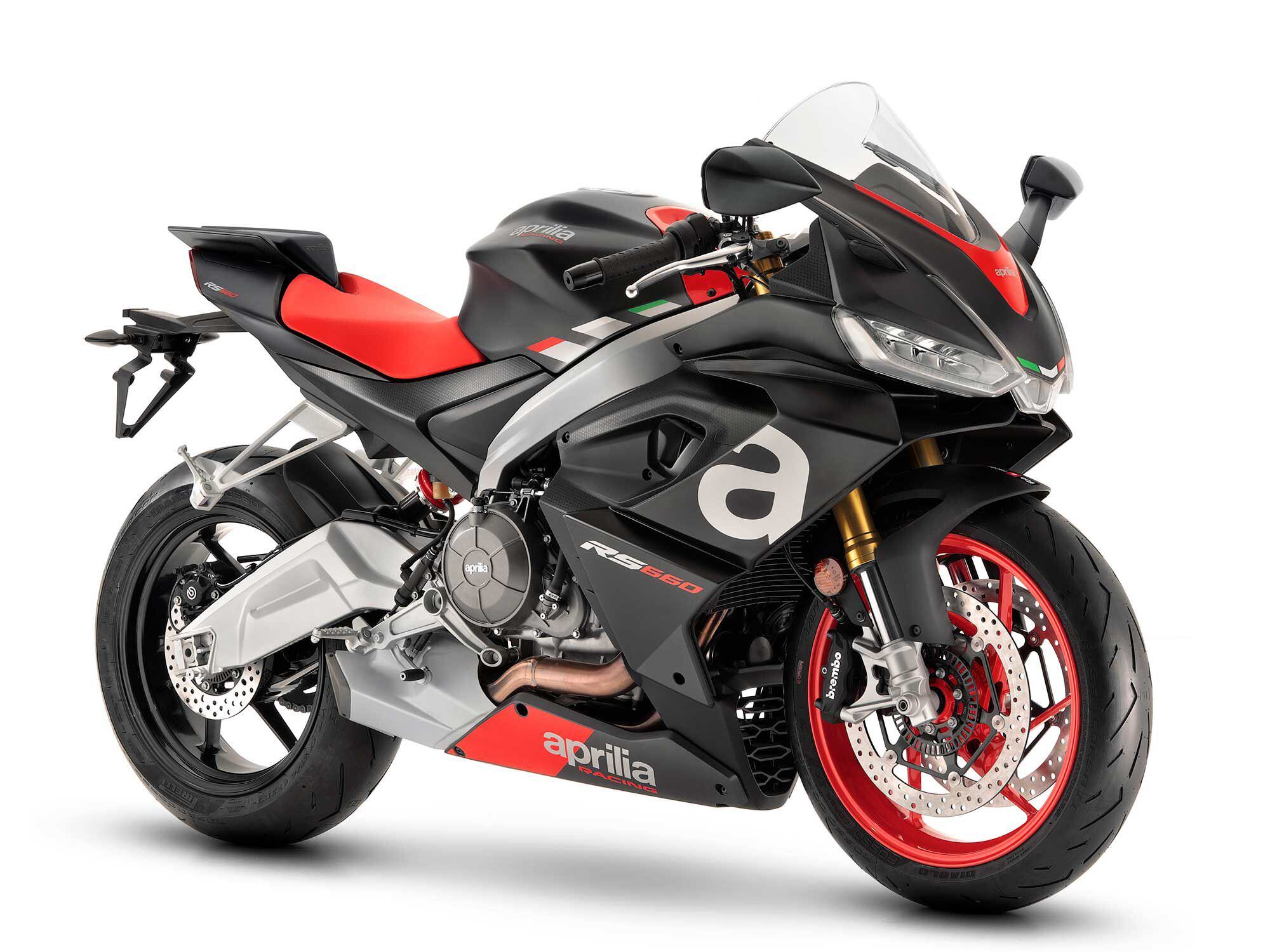
2021 Aprilia RS 660 (Aprilia /) Ergonomics: Comfort and Utility
In a ride aboard the 660, test rider Bruno dePrato praised the ergonomics saying, “The rider triangle is laid out well, so getting perfectly settled and in control of the Aprilia RS 660 is instinctive and user-friendly.” Its claimed 32.3-inch seat height provides an easy reach to the ground even for below-average-height riders.
Electronics
Aprilia’s suite of race-inspired electronics includes five ride modes, quickshifter, a range of engine maps, ABS, and traction, wheelie, engine-braking, and cruise control. Cornering lights, automatic high beams, and self-canceling turn indicators are additional features of the LED lighting package. Information is displayed on a full TFT screen.
Warranty and Maintenance Coverage
Like all Aprilia models, the RS 660 comes with a two-year unlimited-mileage warranty.
Quality
Aprilia’s premium quality, sophisticated electronics, high performance, and easy-to-ride manner sets the RS 660 above the competition, arguably putting it in a realm of its own.
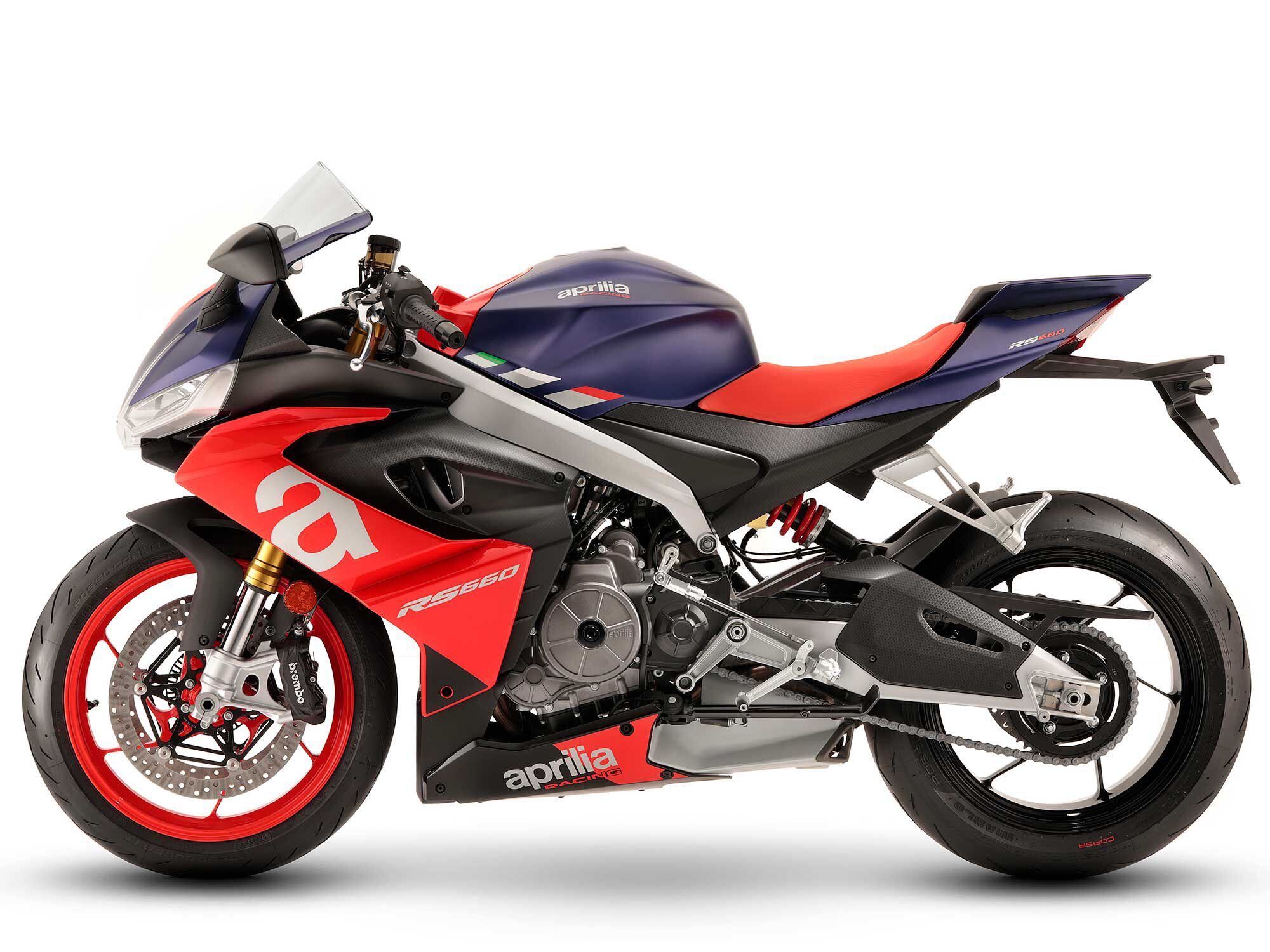
2021 Aprilia RS 660 (Aprilia /) 2021 Aprilia RS 660 Claimed Specifications
MSRP: $11,299–$11,499 Engine: 659cc, liquid-cooled, DOHC parallel twin; 4 valves/cyl. Bore x Stroke: 81.0 x 63.9mm Horsepower: 100.0 hp @ 10,500 rpm Torque: 49.4 lb.-ft. @ 8,500 rpm Transmission/Final Drive: 6-speed/chain Fuel Delivery: Fuel injection w/ two 48mm throttle bodies Clutch: Wet, multiplate Engine Management/Ignition: Ride-by-wire/electronic Frame: Double-beam aluminum Front Suspension: Kayaba 41mm inverted fork, rebound and preload adjustable; 4.7 in. travel Rear Suspension: Monoshock, rebound and preload adjustable; 5.1 in. travel Front Brake: Brembo radial-mount 4-piston calipers, double 320mm discs Rear Brake: Brembo 2-piston caliper, 220mm disc Wheels, Front/Rear: Aluminum alloy; 17 x 3.5 in. / 17 x 5.5 in. Tires, Front/Rear: 120/70ZR-17 / 180/55ZR-17 Rake/Trail: 24.1°/4.1 in. Wheelbase: 53.9 in. Ground Clearance: N/A Seat Height: 32.3 in. Fuel Capacity: 4.0 gal. Wet Weight: 404 lb. Contact: aprilia.com -
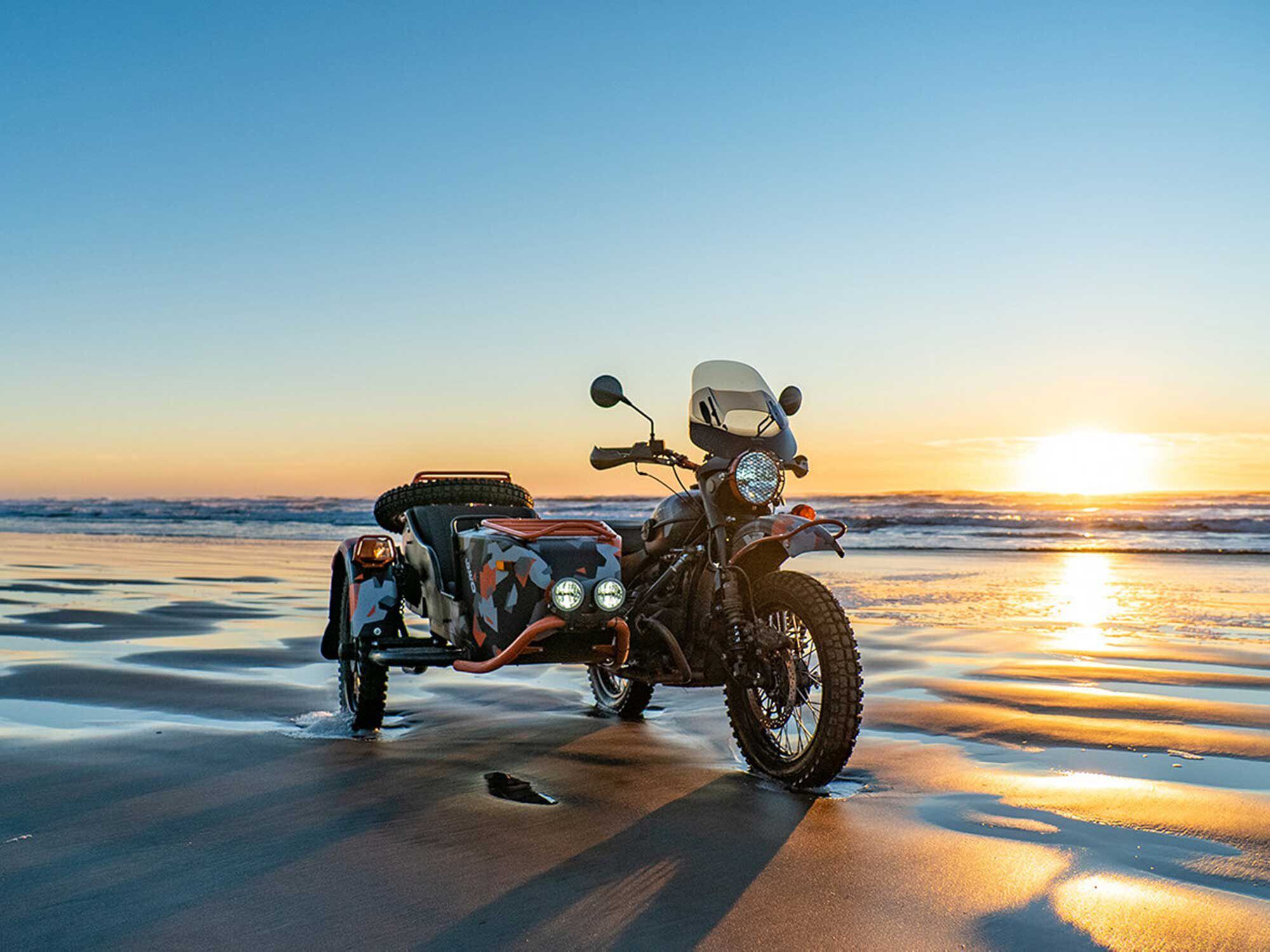
The 2021 Ural Gear Up GEO LE. (Ural/)If you’re selling sidecar motorcycles in 2021, you have to be just a bit crazy—in a good way. So you’ve gotta hand it to Ural for acknowledging its mania in the best possible way: by building a limited-edition Gear Up model with serious suspension and a hand-done camo paint job that looks like something Tom Ford would design for Dolph Lundgren to wear to a Moscow discotheque. What’s crazier than building a type of vehicle that became old-fashioned, like, 100 years ago? Building one that costs almost as much as a new Honda CBR1000RR-R Fireblade SP, that’s what.
Limited to just 20 units and costing $26,999, The Ural Gear Up GEO LE is the latest model in the limited-edition series the Russian company releases each year.
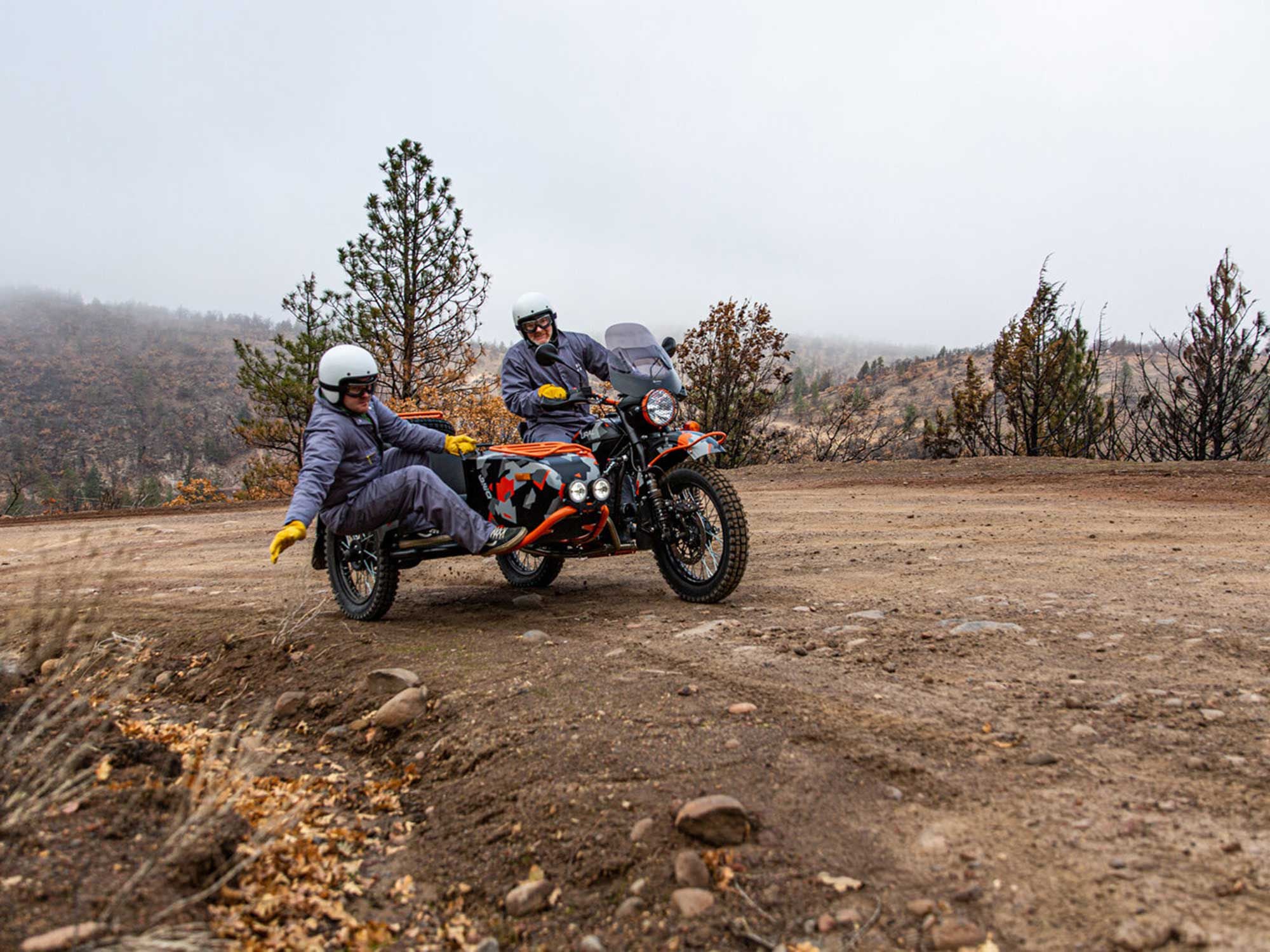
Ural has really played up the wildness of the 2021 Ural Gear Up GEO LE. (Ural/)Ural started with its 2WD Gear Up ($17,549) and thought, “What would make this thing even better off-road,” and then hit the parts bin. Remember, the Gear Up already has Brembo brake calipers, fuel injection, a reverse gear (which, if we’re honest with ourselves, many of us off-road pretenders would find very convenient on our big two-wheeled ADV bikes…), 6.8 inches of ground clearance, and 2.9 cubic feet of trunk space. With a generous permissible load of 1,325 pounds one can haul a lot of camping gear/people/vodka/dogs with this thing.

Those Nitron shocks look the business and are fully adjustable. (Ural /)For the GEO, Ural added some key upgrades and convenience features. To increase off-road performance, it added trick adjustable Nitron shocks, Heidenau K 37 tires, and a GPR exhaust (approved for off-road use only). Delving into its own accessory catalog, it added a new spare wheel cargo rack, a sidecar nose rack, various crash bars, a headlight grille, and light guards. A 1.5-gallon Rotopax auxiliary fuel cell, a handlebar-mounted GPS top clamp, a skid plate, and dual USB chargers give some peace of mind when the pavement ends. Ergonomic additions include hand guards, an Enduro seat, and a tall windscreen.

The GPR exhaust is another legit add-on. (Ural/)Yes, $27,000 may seem excessive for a vehicle that produces 41 hp (claimed), but it accentuates the whole contradiction of Ural-hood. On one hand, a sidecar motorcycle is an anachronism that some people will only view as a toy. On the other hand, it epitomizes utility. Sure, it’s hard to beat a car in terms of practicality, but unlike a two-wheeler, it has room for the whole family and a week’s worth of groceries and the ability to go off road to reach your off-the-grid cabin. For many, few vehicles are as disarming as a motorcycle sidecar rig. The Ural’s utilitarianism makes it more than just a charming oddity.
However, taking an economical, utilitarian vehicle and making it exclusive and expensive is a bit gratuitous—like using a carbon fiber and titanium walking stick on a hike instead of picking up a stick off the ground—but to each his own. Sure, it’s a little crazy, but it’s our kind of crazy.
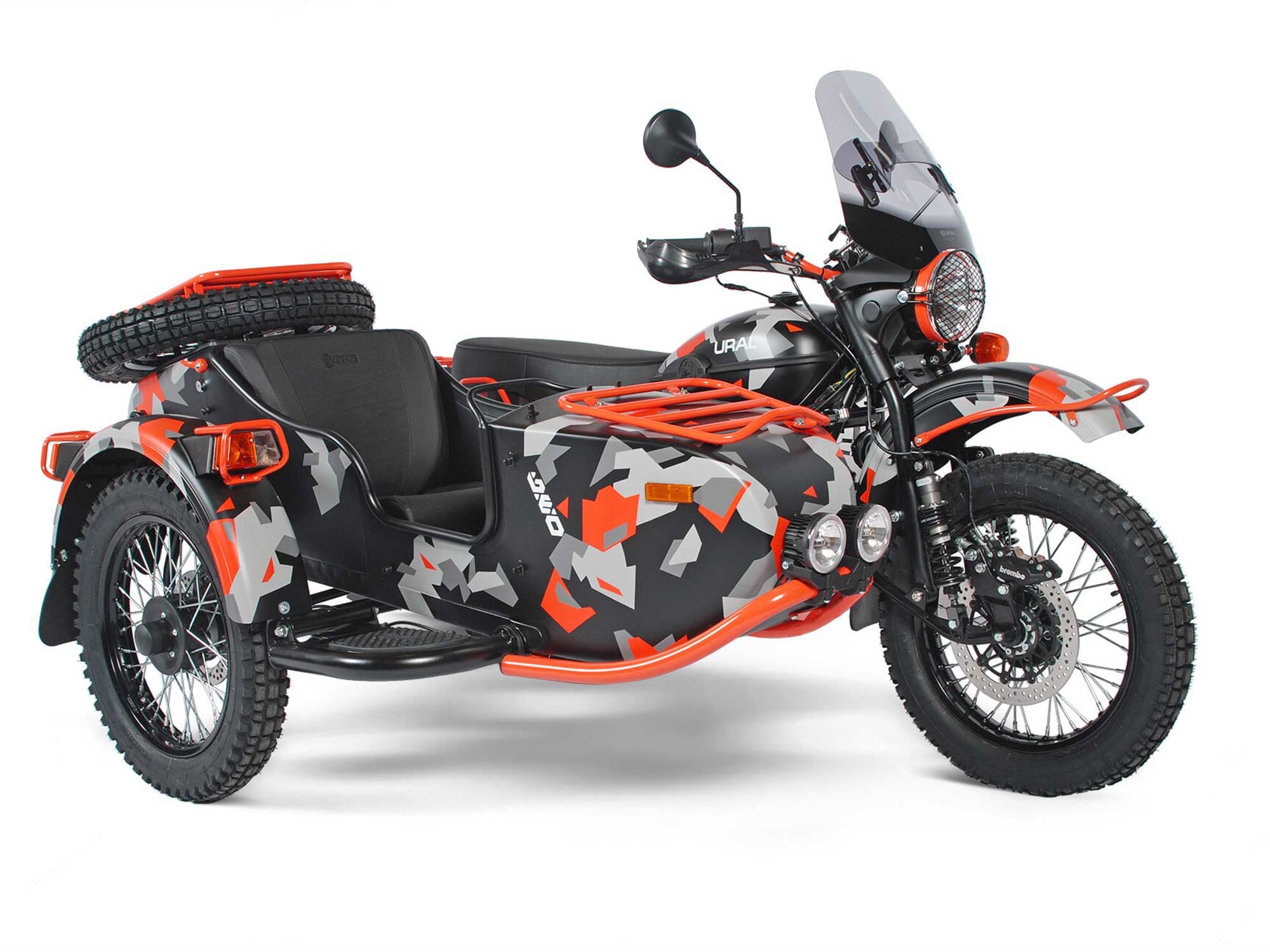
Why 20? The Ural press release says, “Svetlana from the paint department said… ‘No more!’” I’m not sure if that’s a joke or not. | (Ural/)Happily, we live in a world where there are people crazy enough to build exorbitantly priced sidecar motorcycles—and people who want to buy them. Well, about 20 people, anyway.
The Ural Gear Up GEO is available from dealers now.
-
-

The limited-edition KTM 450 Rally Replica is pretty damn close to the factory machine running in Saudi Arabia right now. (KTM/)To many minds, the 43rd edition of the Dakar Rally will be a contest between the 2020 winner, Honda, and KTM, the Austrian manufacturer that can boast an impressive 18 consecutive victories between 2001 and 2019. To put it in perspective, Yamaha’s last win in the toughest rally in the world dates back to 1998 with Stéphane Peterhansel, so history is not on their side. But truthfully, a main element in the Dakar Rally’s DNA is the long list of amateur racers—where you find that 80 percent of the chosen bikes are of the KTM variety.

Different suspension, ECU tune, and assorted other bits differentiate this current Dakar KTM factory bike (shown with rider Sam Sunderland) from the consumer model. (Marcin Kim/KTM/)KTM Team Manager Jordi Viladoms tells us about the secret of this supremacy. “This is arguably the result of KTM’s ‘ready to race’ philosophy; the 2021 KTM 450 Rally Replica is the direct result of the trails and dunes of the Dakar Rally. The bike developed by Red Bull KTM Factory Racing’s Toby Price, Sam Sunderland, Matthias Walkner, and Daniel Sanders is available for all rally lovers,” explains the former Dakar rider. “Reliability is the key…if you want a bike ready to race Dakar, with a ‘guarantee’ to finish.” Toby Price, for example, finished his first Dakar on a standard KTM machine in 2015, while in 2016 Štefan Svitko took second also on a standard KTM, and Viladoms himself finished fourth in 2012.

Just 85 units of the 2021 450 Rally Replica were made for worldwide distribution (we hear they’ve sold out). (KTM/)Behind every racebike you’ll find at least two years of development, and the 2021 machine that Price, Sunderland, Walkner, and rookie Sanders are piloting in the current Dakar competition is an evolution of last year’s bike. Viladoms explained the main differences between the factory bike and the consumer-focused 2021 Rally Replica iteration, the one that was produced in a limited run, all of which sold out in a few months (priced at 25,900 euro plus VAT).
Engine and Gearbox
The 449cc, SOHC, fuel-injected single-cylinder engine in the factory and replica bike is essentially the same, with the main difference being a slightly different tune to the ECU in the factory bike for more power. Nevertheless, the Rally Replica’s engine did also receive a boost in power over the 2019 model, which carries over to the new model as well.
In addition, the limited-edition replica benefits from a new Pankl Racing Systems gearbox with revised ratios for 2021 (the same as the rally-winning machines of the KTM Factory Racing team), and the bike also receives stiffer suspension settings to further fine-tune the already exceptional handling. The modifications are the result of testing and competition-proven developments carried out in preparation for the 2020 rally, with engine reliability being especially crucial this year considering that only one piston can be changed over the course of the race.

The 450cc factory machine also gets higher-spec suspension and a different fork, with other concessions to additional fuel capacity and protection. (KTM /)Suspension and Swingarm
The front and rear WP suspension on the factory bikes are of a higher spec than the standard version, though the KTM 450 Rally Replica is fitted with a WP Xact Pro 48mm closed-cartridge fork using sophisticated Cone Valve technology, whereas the KTM Factory Racing bikes have a 52mm inverted fork.
RELATED: Ricky Brabec Dakar 2020 Interview
The 2021 Rally model also features an ultra-light cast aluminum swingarm with tuned flex behavior to better support the suspension action. The linkage system transfers force to the fully adjustable WP shock absorber, which gives the rider ideal traction and optimal bottom resistance for better stability.

Navigation tools are packed into this aerodynamically designed carbon tower on the Dakar racebike; the Replica’s version is slightly different. (KTM/)Tank
This year’s Dakar factory bike gets a bigger rear fuel tank, that, coupled with its two laterally mounted tanks adds up to a total of 34 liters of onboard fuel, compared with 32 liters for the replica version. This is due to new rules for the 2021 rally, which require a range of 250 kilometers plus 10 percent; at last year’s event, manufacturers struggled with higher fuel consumption than at previous rallies. Another change this year was the removal of the 3-liter water tank that was previously compulsory. When Dakar was still run in Africa, the water tank provided an extra reserve for the rider, but these days no one drinks this fluid, so the KTM guys decided to eliminate it and replace it with a tool bag, thus saving a good amount of weight.
Chassis and Aerodynamics

The factory racer’s bigger fuel tank out back provides better range and Akrapovič exhaust helps cut down on weight. (KTM/)The Replica engine is wrapped in a race-spec chrome-moly tubular space chassis with a series of fine details to denote the bike’s exclusivity, along with revised aerodynamics and ergonomics to handle a wide breadth of terrain. The cockpit and carbon tower that hold the onboard navigation tools are key elements of the aerodynamic design which has been tested to provide optimal rider protection and reduce turbulence, considering that a factory rally bike can reach 180 kph on packed tracks during the event.
Protection

Toby Price on last year’s bike in the 2020 Dakar Rally. (KTM/)Considering the brutal nature of the rally, all the parts on the Rally Replica machine have also been reinforced, but with an eye toward weight. The bar grips feature special protection for riders’ hands, while special foam was designed and added to the navigation tool area, also to protect the rider. The foam was supposed to be compulsory for all teams this year, but following delays in development due to the pandemic, not all were ready by the time scrutineering began in Jeddah on day one. KTM was among the ones that—of course—were ready.
-
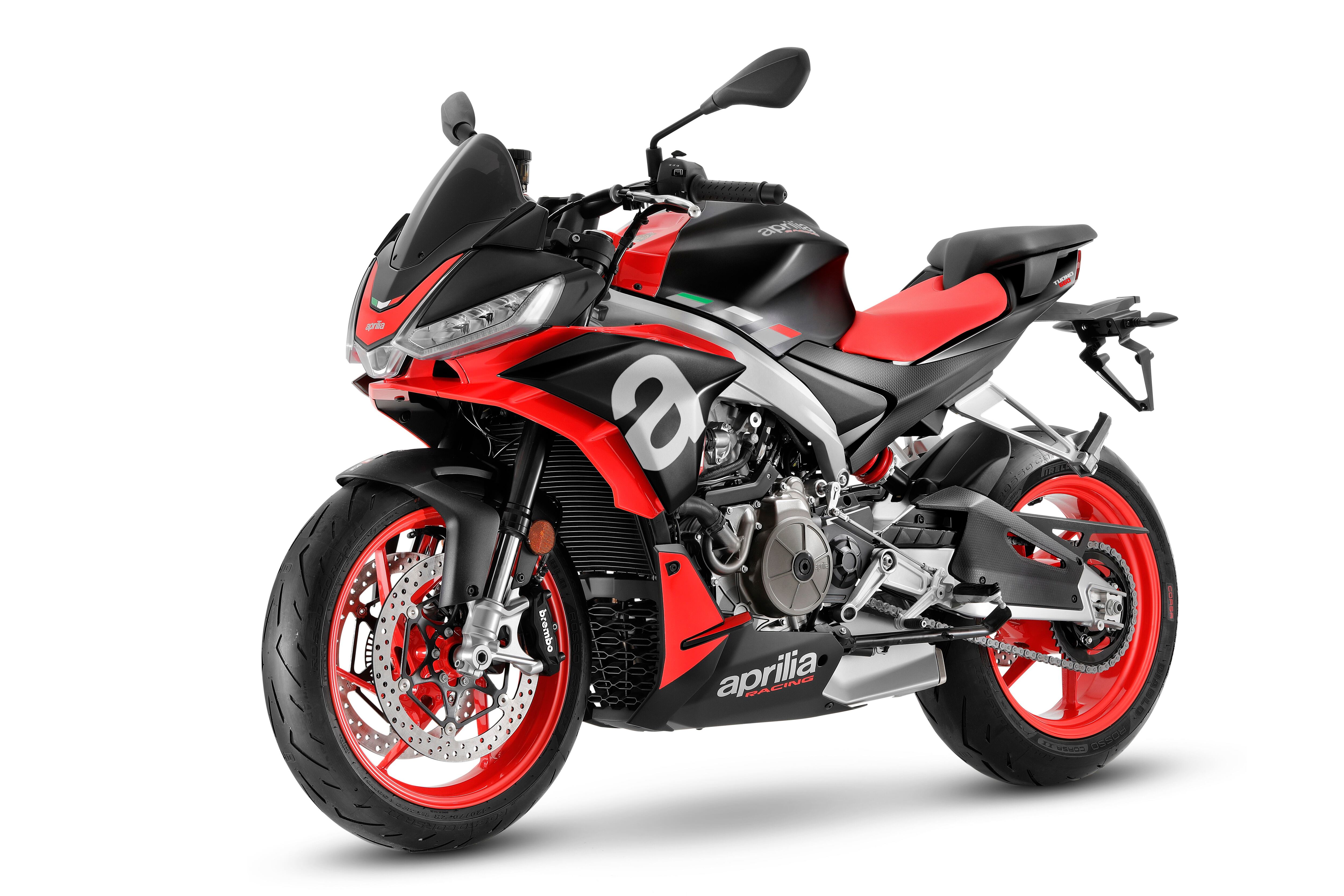
The 2021 Aprilia Tuono 660. (Aprilia/)Good news today from Aprilia: The much-anticipated 2021 Tuono 660 will arrive in US dealerships this spring. Retailing at $10,499 (or $10,699 for the trippy Acid Gold colorway), it’s $800 less expensive than the RS 660 on which it’s based.
Other than the streetfighter-styled bodywork and handlebar, the Tuono 660 is distinguished from its sportbike stablemate by its shorter final drive gearing—intended to improve acceleration—and different fork offset to adjust geometry for the application. The Kayaba suspension also has different settings than the RS 660.
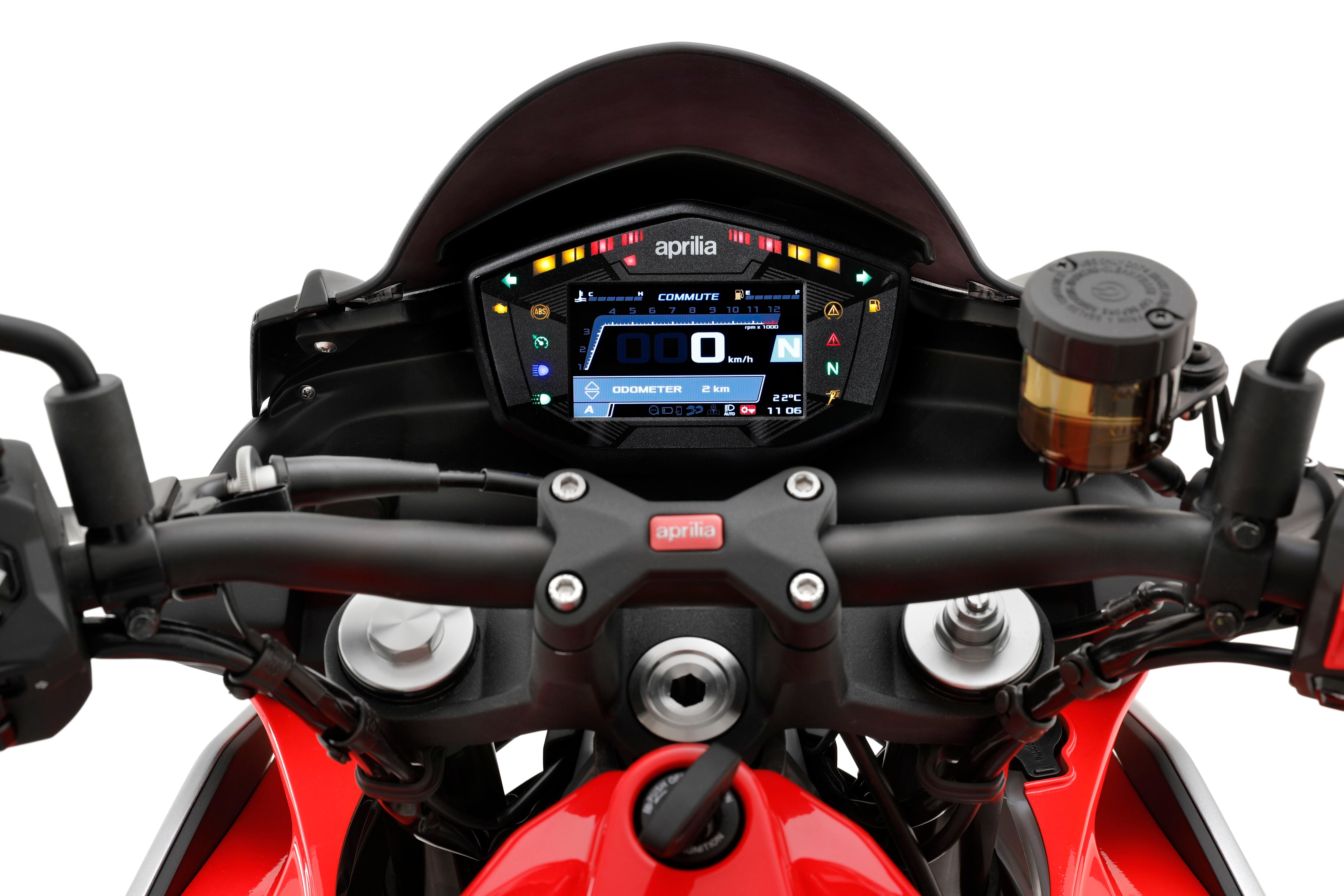
It looks like a Tuono just from the cockpit view. (Aprilia/)Aprilia claims the Tuono 660 produces 95 hp—down from the RS’s projected 100 hp—and has a 403-pound curb weight.
Like the RS 660, the Tuono has a 659cc parallel twin with a 270-degree crank, a cast-aluminum chassis, and a full suite of electronic rider aids. For an in-depth look at the technology behind the RS 660, check out Kevin Cameron’s rundown here, and see how it all comes together in the real world with our first-ride report.
To judge by initial positive impressions of the RS 660, Aprilia’s middleweight platform offers an attractive, bang-for-the-buck alternative to the Noale factory’s large-displacement headliners. Designed for multiple applications, the 660 platform will also bring Aprilia back into the adventure bike world with the forthcoming Tuareg 660. Sportbike, streetfighter, adventure bike: three bikes, one stone.
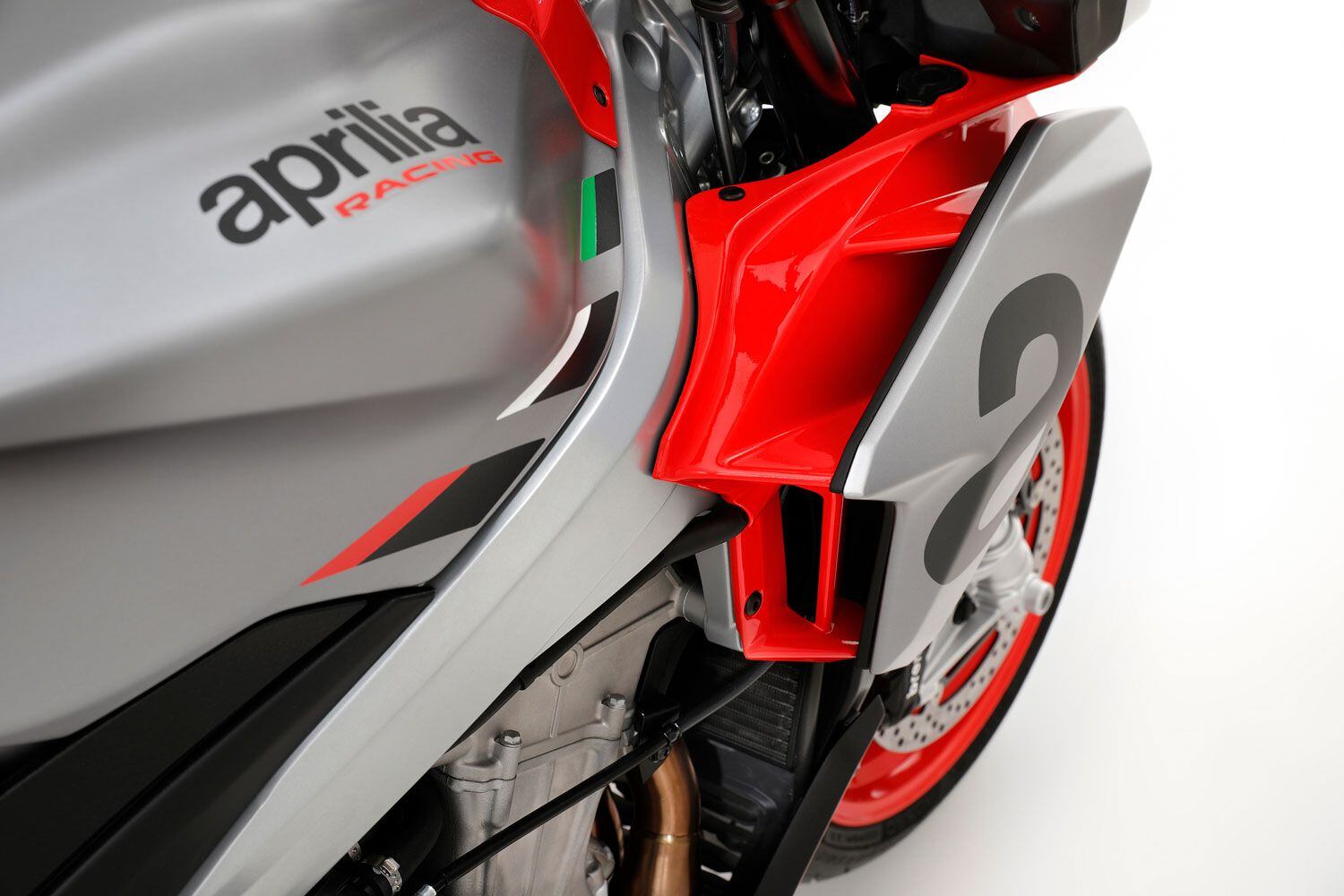
The Tuono carries over the RS 660’s double-fairing concept. Note: the two-piece cast-aluminum frame that’s bolted together at the steering head. (Aprilia/)The Tuono’s high-end technology package features cruise control and five ride modes with customizable traction control, engine-braking management, wheelie control, and ABS. The up-spec electronics suite is just one hint that Aprilia wants the Tuono 660 to be perceived as a miniature Tuono 1100, not “just another” middleweight naked bike. The middleweight naked category is bursting at the seams with plenty of brilliant and affordable machines like the twin-cylinder Yamaha MT-07 ($7,699) and Kawasaki Z650 ($7,249), the inline-four-powered Honda CB650R ABS ($9,199), and the new three-cylinder Triumph Trident 660 ($7,995).
The Tuono 660 is not in the same category. We’d say its closest competition is likely the Triumph Street Triple R (as differentiated from the tricked-out RS). At $10,800, the Street Triple R is comparable in price, and with 116 hp (claimed), engine performance is fairly close as well. Maybe you could put a KTM 790 Duke in there, but the displacement game starts to lean in favor of the Austrians with that one. Still, anyone else interested in a real-world test (put me in, coach!)?
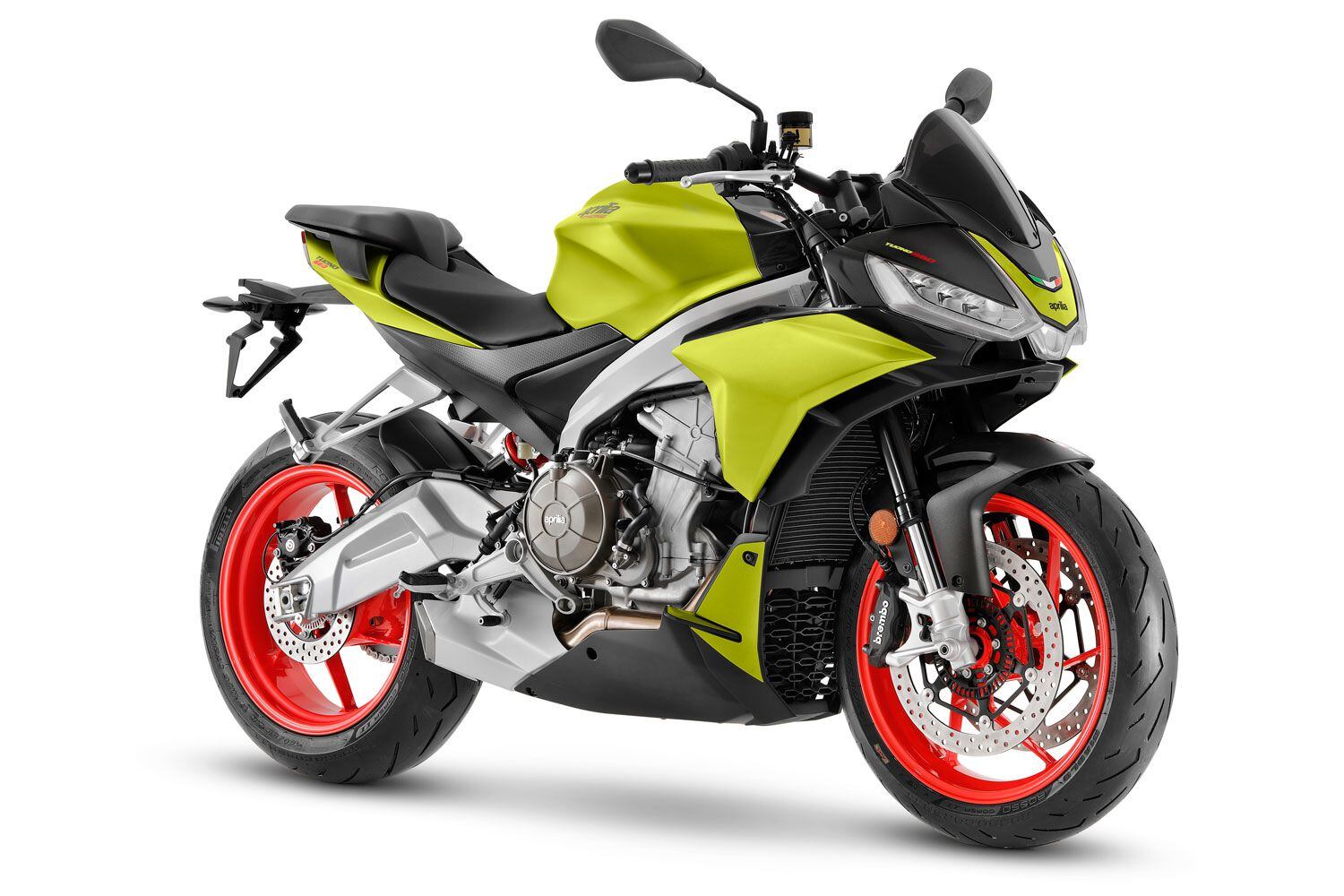
In addition to the Acid Gold colorway (pictured), the Tuono 660 is available in Concept Black and Iridium Gray. (Aprilia/)Compared to the pool (lake? sea?) of similarly sized but more affordable middleweight nakeds, the Tuono will have a far smaller market share, but its use-case is no less broad. We predict its kind ergonomics, room for luggage, and light weight will make it a pretty appealing proposition for commuting, sport riding, and the occasional tour or trackday. Adventure bikes are all the rage as do-it-all motorcycles, but the whole off-road/round-the-world skew can seem like overkill when all you really want is a bit of versatility. Since its introduction in 2002—as a 1,000cc V-twin based on the Aprilia Mille—the Tuono has been a do-it-all motorcycle for pure sportbike lovers. A smaller, more affordable version that doesn’t sacrifice too much technology or charisma sounds pretty great.
The folks at Noale aren’t just capitalizing on the legacy of the Tuono name. Based on what we know of the RS 660, the Tuono 660 should be able to hold its own. In other words: An Italian budget naked it is not. A mini Tuono? Sounds about right. Aprilia can only hope consumers will interpret it in the same light.
The one thing left to do is ride it. Stay tuned.
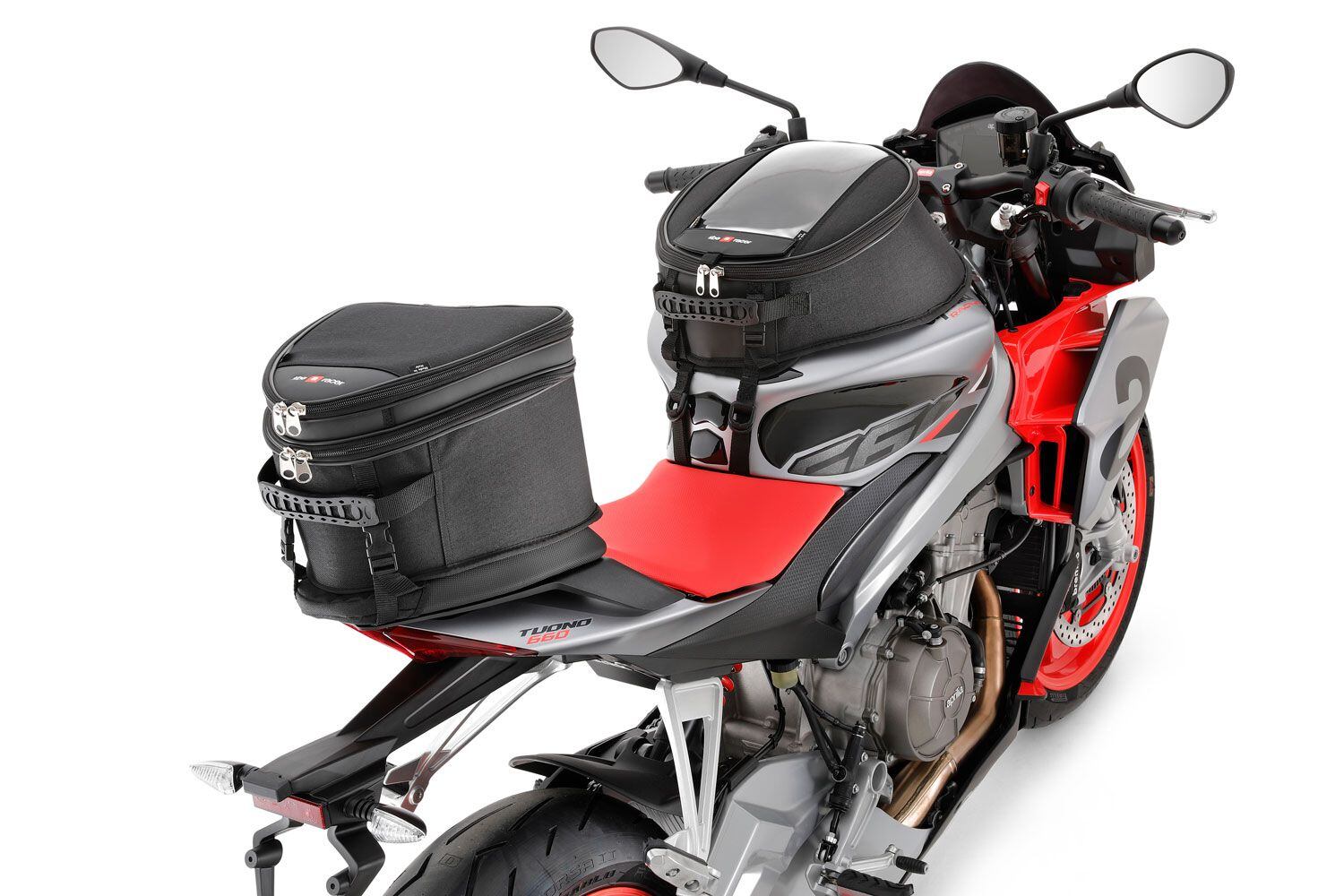
For many of us, Aprilia’s accessory tail pack and tankbag (not to mention cruise control) make touring look like an enticing prospect, even if the Tuono won’t have the last word in wind protection or fuel range. (Aprilia/)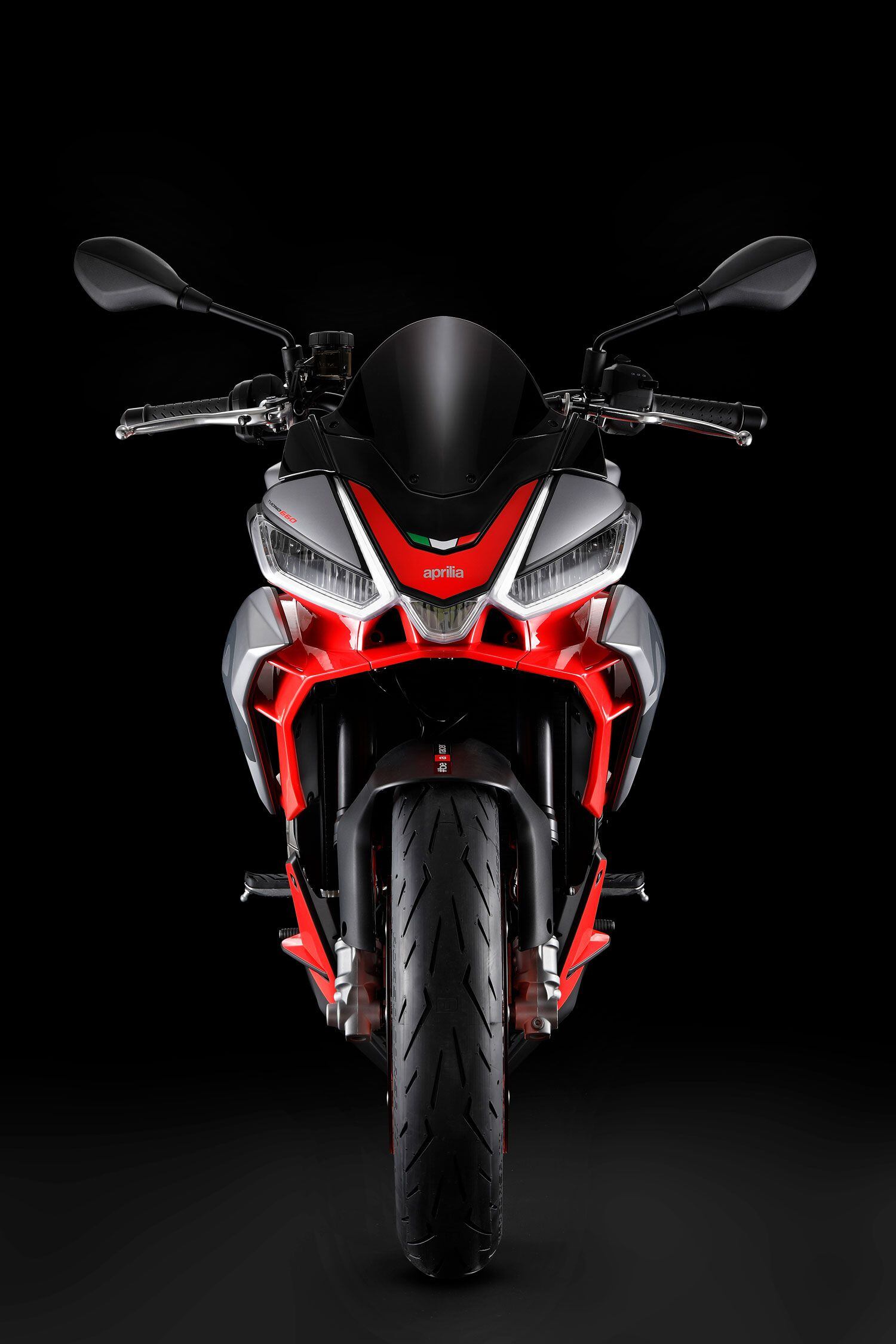
The Tuono 660’s distinctive LED running lights. (Aprilia/) -
Somewhere between hacking the rear end sideways, shredding crossed-up wheelies at corner exit, and chasing motojournalist colleagues nose to tail around Apex Racing Center’s tight and technical kart track, it hit me that supermoto might just be the most fun I’ve had on two wheels. There is something extremely satisfying about ripping laps aboard a supermoto-specific machine like the all-new 2021 KTM 450 SMR, to say nothing of its accessibility and relative cost-effectiveness. Supermoto is just so damn enticing.
But supermoto has almost always been a niche riding category with several, sometimes complicated, barriers to entry. Take the bike build, for example: In the past, assembling a proper supermoto bike meant purchasing a 450 motocrosser and then spending thousands of dollars and countless hours converting it to a proper weapon, with all of the usual trials and tribulations of development along the way.
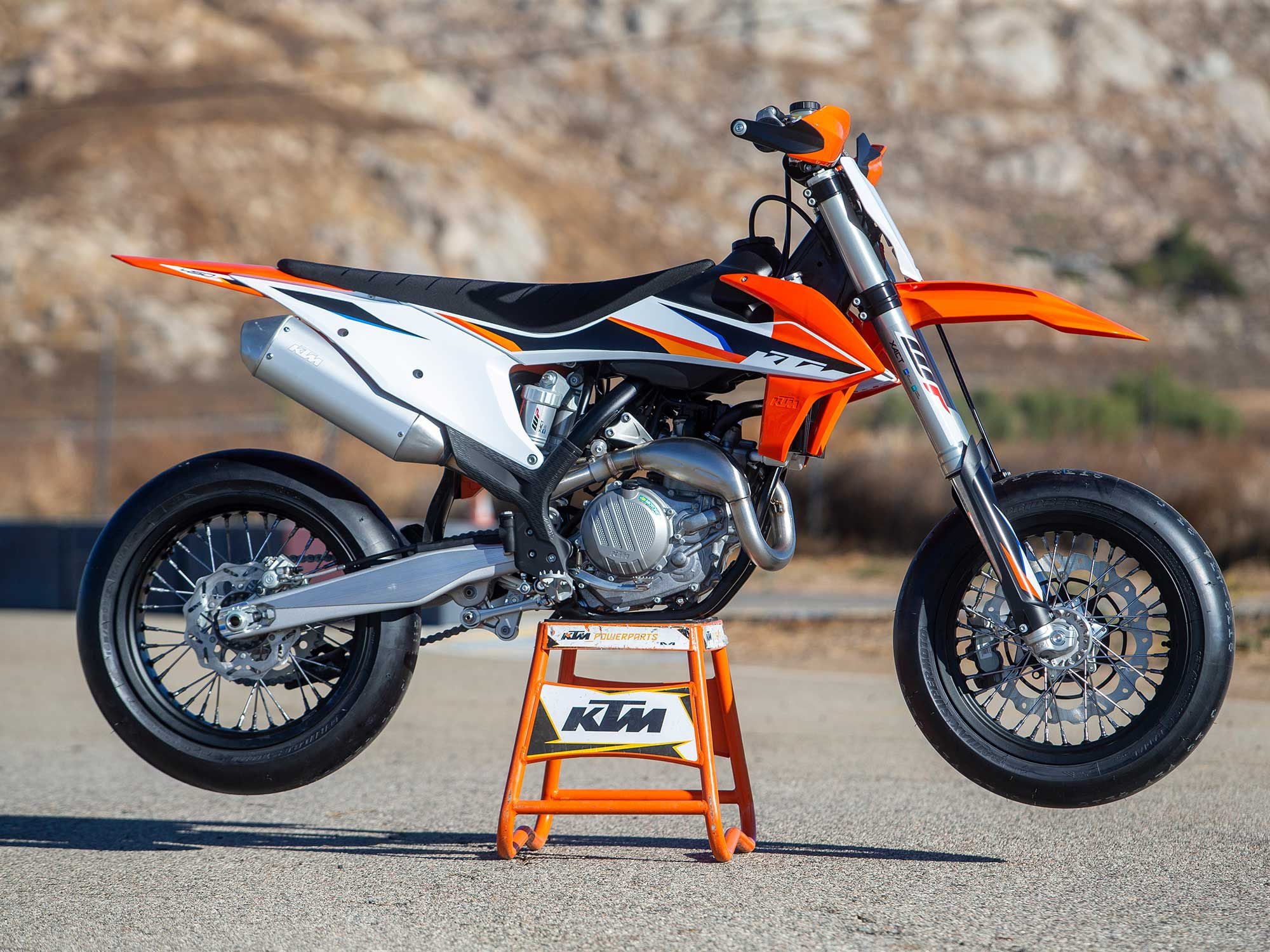
The 2021 KTM 450 SMR breaks the entry barriers to supermoto by offering a race-ready platform available at the dealership. (Jeff Allen/)The return of the KTM 450 SMR following a seven-year hiatus looks to change that by offering a turn-key solution to supermoto. For $11,299 you get the potent and proven 2021 450 SX-F motocross platform, ready to rock the local kart track with top-shelf supermoto components straight from the showroom floor.
The 450 SMR shares the same 449cc single-overhead-cam powerplant with the 450 SX-F, which gets a brand-new connecting rod with a copper beryllium bushing for a more free-revving character, perfect for supermoto application. The 2021 SX-F recently recorded an impressive 54.8 hp at 9,500 rpm and 34.6 pound-feet of torque at 7,400 rpm, and we can expect the same for the SMR. Serious stuff. Internally, KTM mated the Pankl-sourced five-speed gearbox with a supermoto-specific Suter slipper clutch for maximum corner-entry speed and consistent rear-wheel slides.
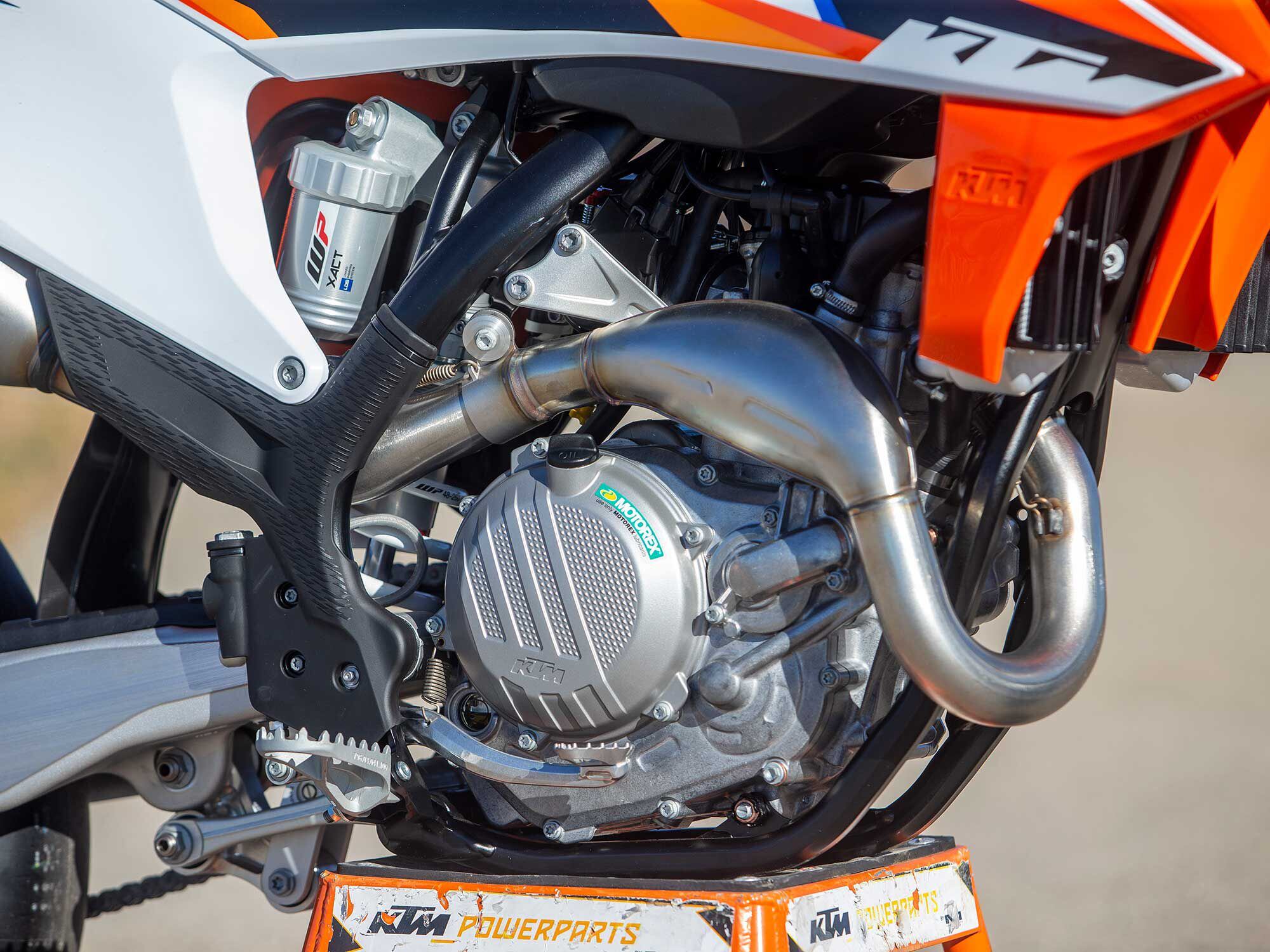
KTM employed the same 449cc single-overhead cam engine as seen in the 450 SX-F motocrosser, except it is fitted with a Suter slipper clutch for supermoto application. (Jeff Allen/)Like the motocross-only model, the 450 SMR uses a chrome-moly steel frame with the same geometry, except for a specifically designed CNC-machined triple clamp reducing the offset to 16mm (from 22mm). The WP Xact fork and shock with AER air technology have also been tuned for supermoto competition, receiving changes in internal damping settings and a reduction of travel to strike a balance of asphalt and dirt capability.
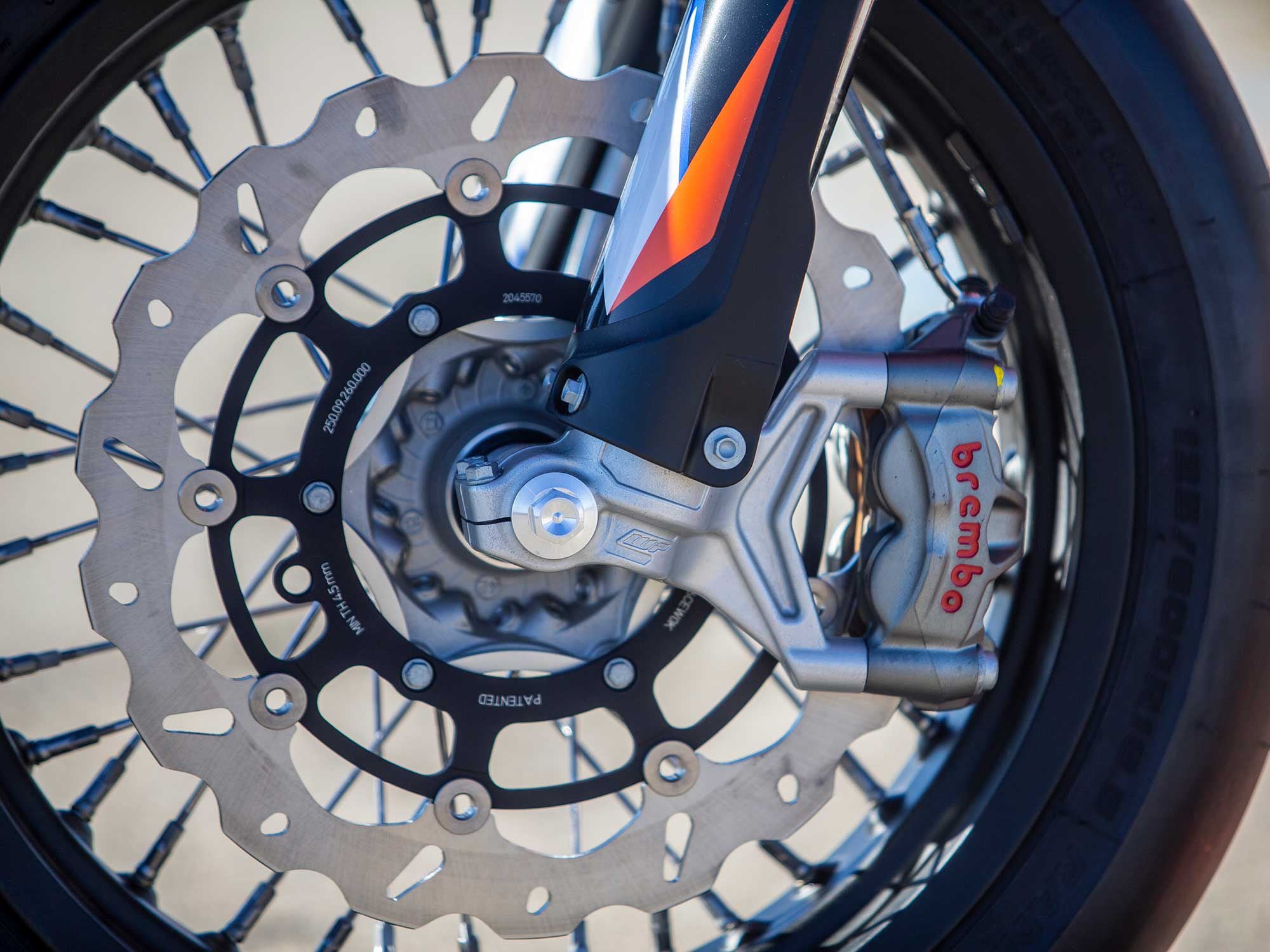
There’s no lack of stopping power here. A top-shelf Brembo M50 caliper and massive 310mm wave rotor bring the 450 SMR to a quick halt. (Jeff Allen/)KTM fitted a set of Bridgestone Battlax racing slicks to Alpina tubeless spoked wheels (16.5-inch front, 17-inch rear) to the SMR. A massive four-piston superbike-spec Brembo M50 caliper clamping to a 310mm wave rotor up front brings the 450 SMR to a screeching halt, with a radial Brembo front master cylinder equipped to help administer brake pressure. A single 220mm wave rotor and single-piston caliper handle rear braking duties.
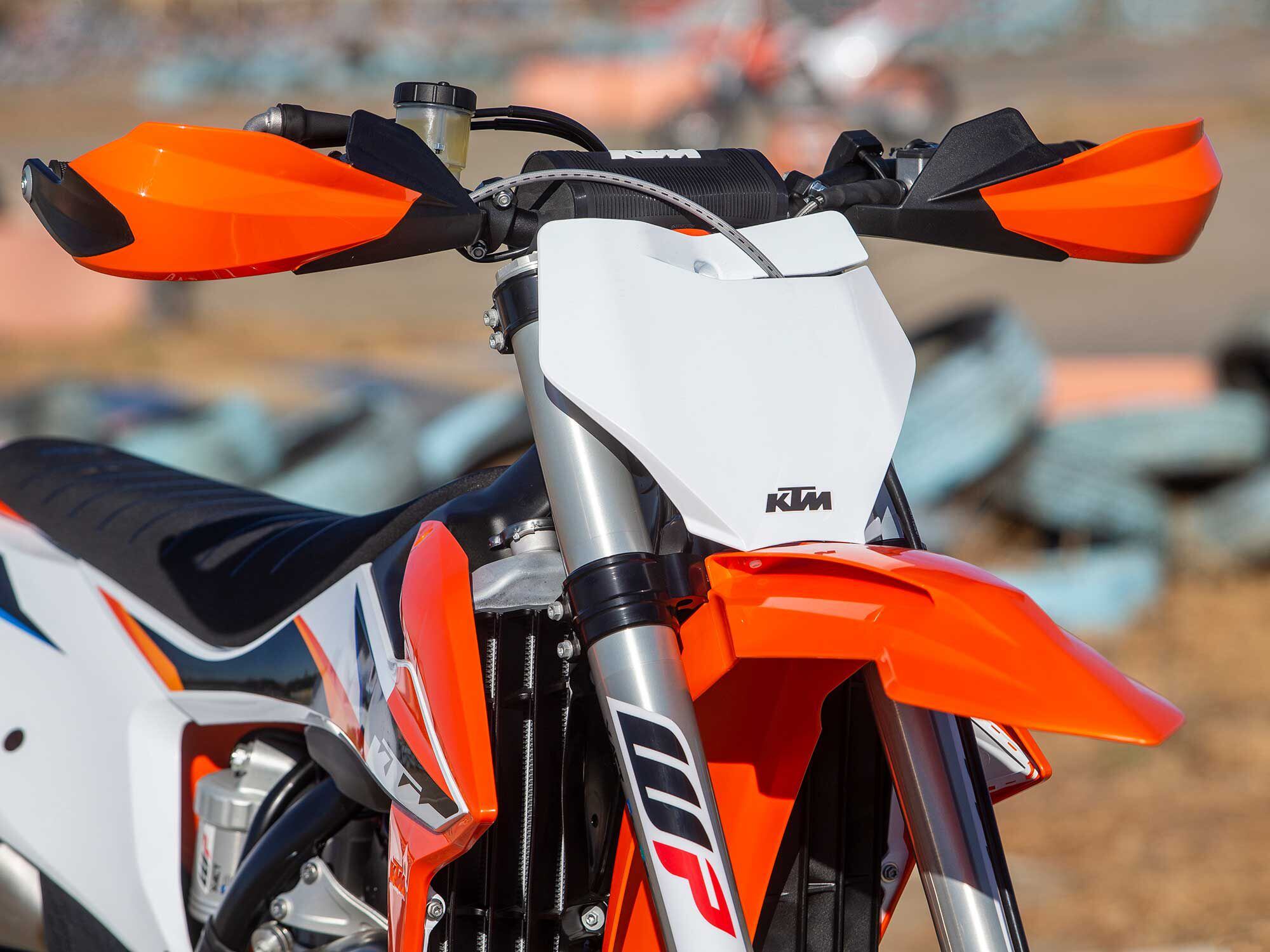
The 450 SMR also employs the same WP Xact fork as the SX-F, but gets specially tuned internal damping settings. (Jeff Allen/)The 450 SMR offers addictive entertainment at any pace, but it’s a true track slayer if hammered. KTM struck riches in optimizing the chassis for supermoto handling, finding an incredible balance between agility and confidence-inspiring feel and composure. The SMR smashes apexes with pinpoint precision and carves side-to-side transitions with such minimal effort it’s almost mind control. The grip, consistency, and feel of the Bridgestone slicks is mind boggling, with no hesitation when pushed harder every lap. It felt just like the MotoAmerica and World Superbike-level racebikes I’ve ridden in the past, but with far less risk. Kudos, KTM.
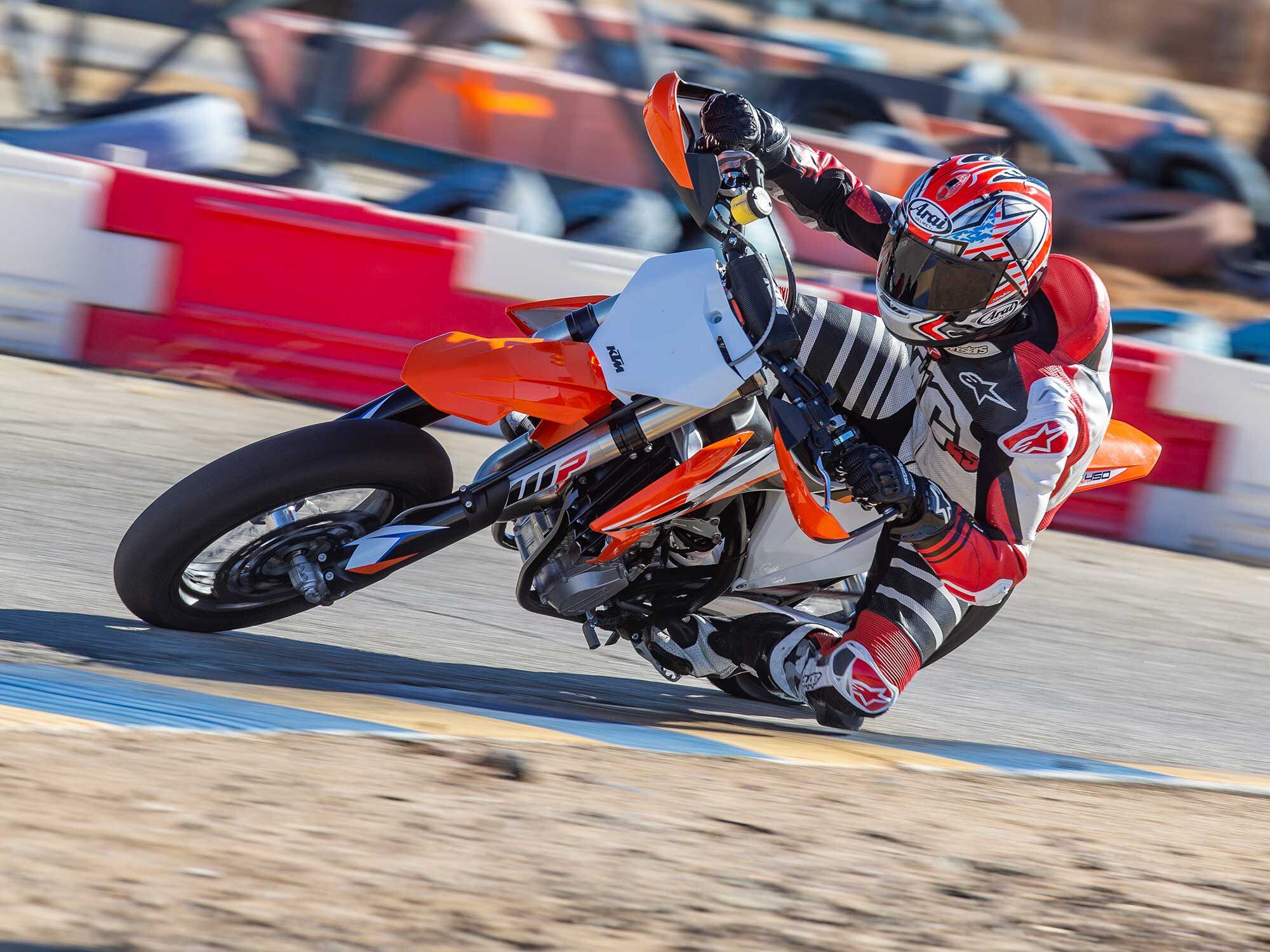
The KTM 450 SMR is a menace at the kart track, shredding tight layouts with ease. (Jeff Allen/)Suspension action and performance of the WP Xact components are on par with the SMR’s agility, with a balance of support for all-out ripping and bump compliance. Adjusting the air pressure on the left-side fork is quick and easy, and allows for a rider-specific spring rate for ultimate confidence. Compression and rebound damping settings are accessed via the right-side fork, though box-stock settings proved capable enough in handling chatter bump compliance while having enough big-hit absorption to hit the dirt section.
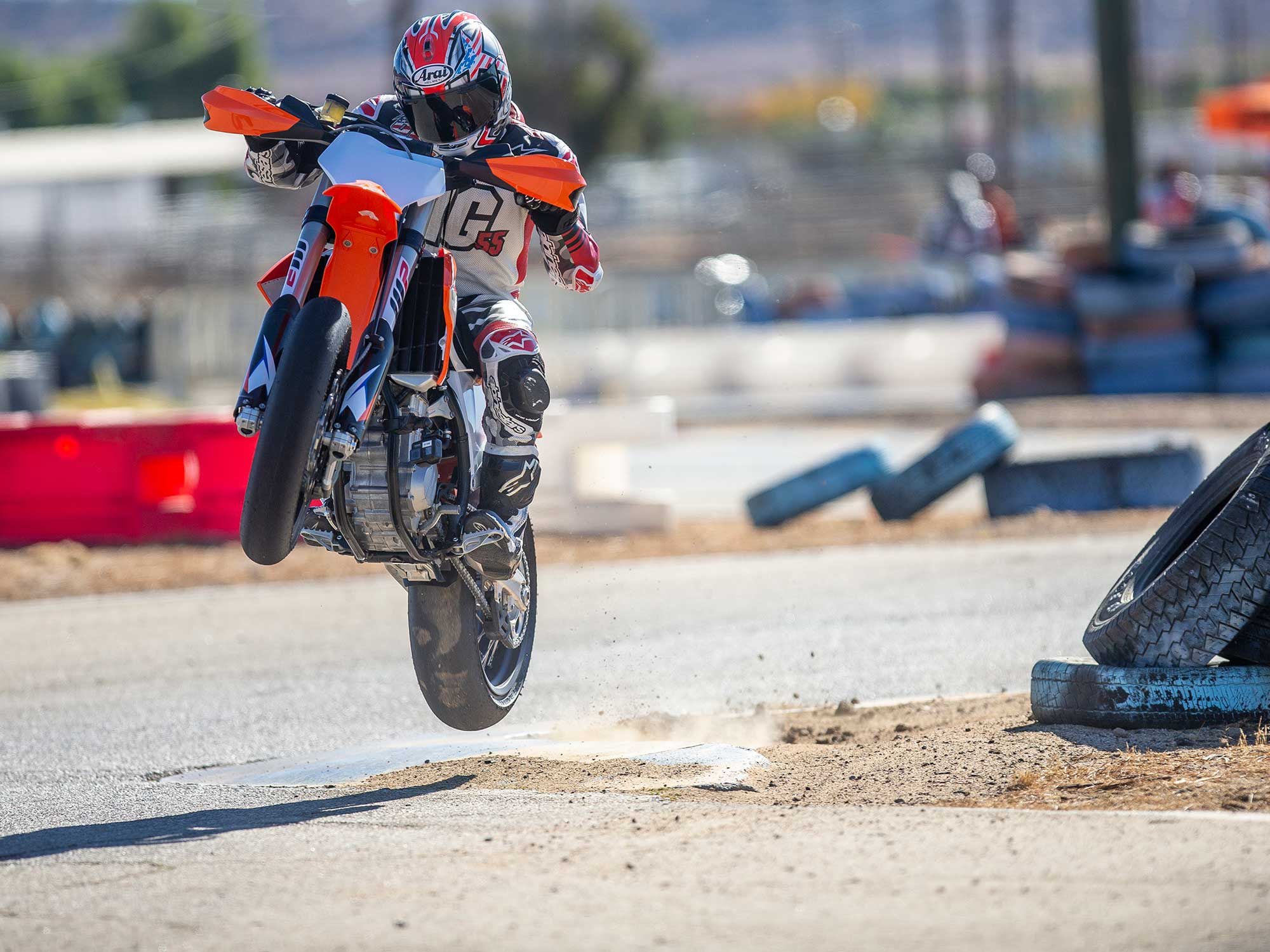
Fun? Ridiculously. Supermoto might be the epitome of hooliganism on two wheels, but also serves as a relatively inexpensive alternative to trackdays. (Jeff Allen/)The consistency and predictability of the 450 SMR are what make it so good, contributing to the amazing experience. The raddest aspect of supermoto? Throwing the rear end sideways at corner entry, hands down. Snap the throttle shut, grab a few clutchless downshifts, apply the brakes, and allow the slipper clutch to work its magic by mitigating rear wheel chatter as the rear tire paints black lines into the turn every dang time. Feel and power of the Brembo braking components is second to none; the 450 stops on a dime.
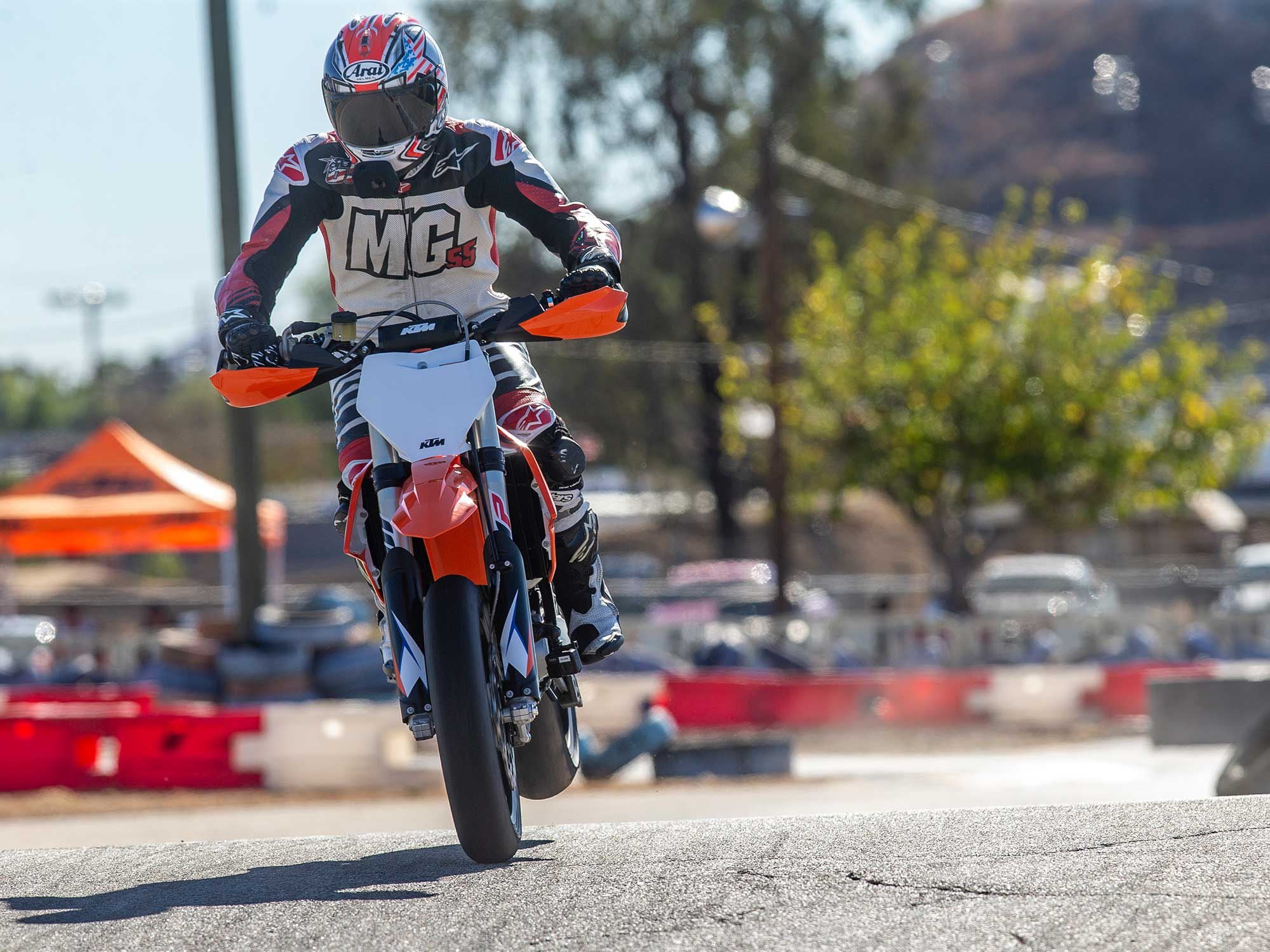
Add Brembo stopping power to elevation change and float the rear wheel at corner entry. (Jeff Allen/)The 450 SMR has smooth, predictable power delivery at corner exit, which makes for deceivingly fast straightaway speed. At first touch of the throttle, the KTM offers crisp, tractable acceleration before rocketing off the corner with the front wheel pointed skyward. In fact, the engine is so smooth and rider-friendly that you could disable the optional traction control system and choose the more aggressive Map 1 (of the two selectable throttle maps) with zero hesitation on a clean, dry racetrack. But should conditions change, it’s nice knowing that KTM provided an option of a safety net.
The tight confines of supermoto riding make it a relatively affordable yet wickedly entertaining trackday option without the danger of full-size racetrack speed. Here, you can focus on fundamentals and improving your riding skill set without burning through tires, consuming race fuel, and breaking the bank with trackday costs and equipment. Supermoto offers more laps, more racing, and an equal amount of fun. If not more.
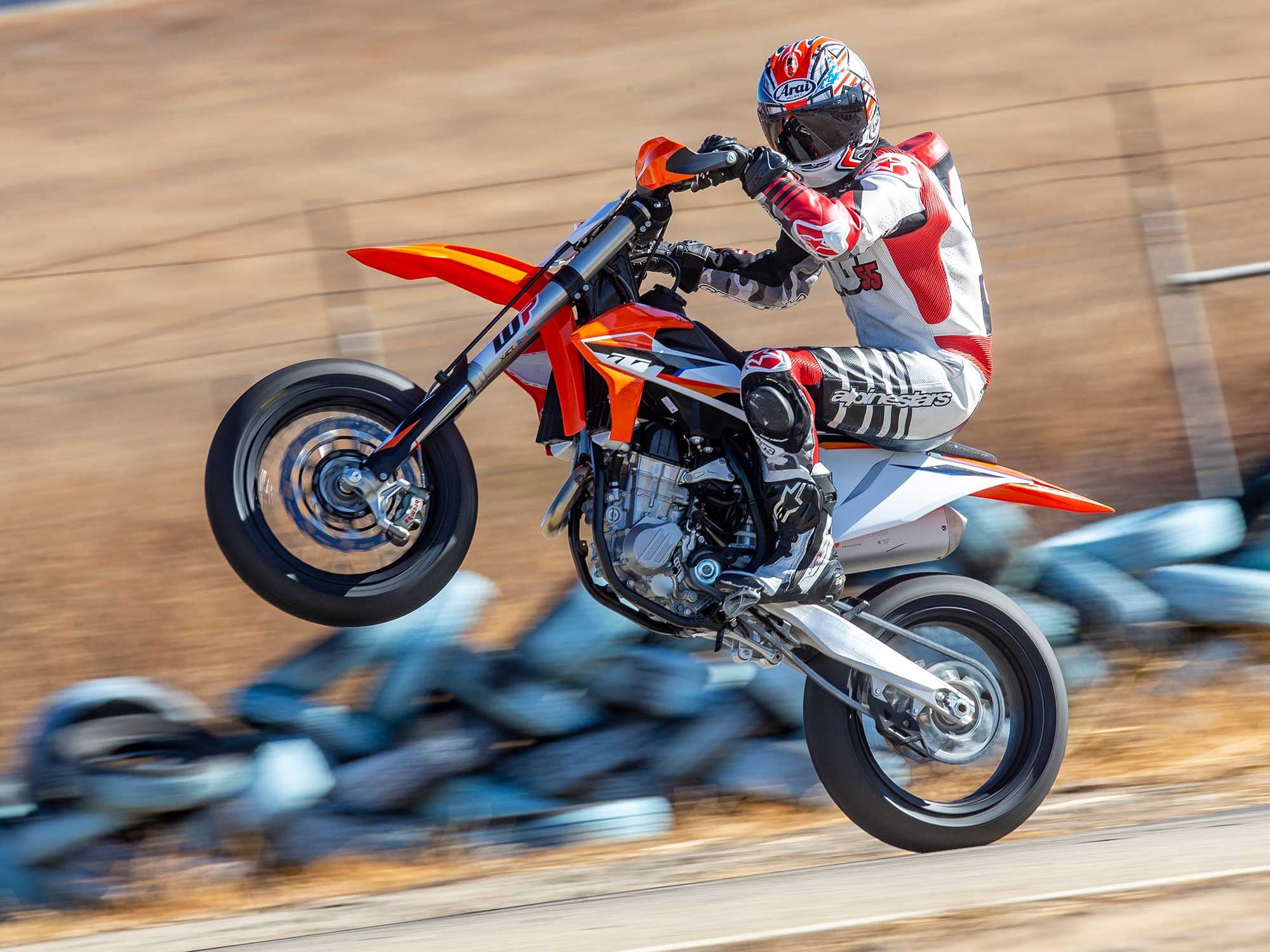
The 2021 KTM 450 SMR packs a punch of entertainment, value, and attainability that supermoto has struggled to achieve in the past, but might just spark a craze once more. (Jeff Allen/)I’ll admit I’ve neglected the supermoto track in recent years, but my experience with the KTM 450 SMR has created an itch that needs to be scratched. The ability to purchase a dedicated turn-key machine like the 450 SMR straight from the dealership without the regular barriers of entry makes me question why I don’t already have one in the garage.
Just a few more laps, KTM. Please.
2021 KTM 450 SMR Specs
MSRP: $11,299 Engine: 450cc, SOHC, liquid-cooled single Bore x Stroke: 95.0 x 63.4mm Transmission/Final Drive: 5-speed/chain Claimed Horsepower: 60 hp Fuel System: Fuel injection w/ 44mm throttle body Clutch: Wet, multiplate Frame: Central double-cradle chrome-moly Front Suspension: WP Xact inverted 48mm, fully adjustable Rear Suspension: WP Xact monoshock, fully adjustable Front Brake: 4-piston Brembo M50 radial-mount Monoblock caliper, 310mm disc Rear Brake: 1-piston Brembo caliper, 220mm disc Wheels, Front/Rear: Alpina; 16.5 x 3.5 in. / 17 x 5.0 in. Tires, Front/Rear: Bridgestone Battlax Supermotard; 120/600-16.5 / 165/630-17 Rake: 26.1° Wheelbase: 57.8 in. Ground Clearance: 11.4 in. Seat Height: 35.0 in. Fuel Capacity: 1.9 gal. Claimed Wet Weight: 225 lb. w/o fuel Availability: Now Contact: ktm.com -
-

2021 BMW R 18 First Edition (BMW/)Ups
Traditional BMW styling inspired by 1936 BMW R5
Nostalgic engine feel and sound
Downs
Excessive engine vibration
Limited suspension travel
Low cornering clearance
Verdict
BMW has succeeded greatly in building a traditionally American-style cruiser, but in doing so has sacrificed some of the superior technical and performance qualities we expect from the brand.

2021 BMW R 18 First Edition (Jeff Allen/)Overview
BMW’s 2021 R 18 is a Berlin-built cruiser, but done in a traditionally American way. Low seat height, 16-inch wheels, and a torque-rich 1,802cc, opposed twin-cylinder engine make the R 18 feel at home on California’s Pacific Coast Highway. As one of the most highly anticipated new models of 2021, we expect to see more variations on this platform in the coming years.
Updates for 2021
The BMW R 18 is a new model for 2021.
Pricing and Variants
The base-model BMW R 18 starts at $17,495. The First Edition Package is only available this first year, costing an additional $2,150 and includes unique white pinstriping and a package of chrome accessories. The Premium Package is available for $1,450 more and includes Hill Start Pro, BMW’s adaptive headlight, and reverse assist. Lastly, the Select Package adds $225 to the base MSRP and includes an anti-theft alarm system, locking gas cap, and heated grips.

2021 BMW R 18 First Edition (Jeff Allen/)Powertrain: Engine, Transmission, and Performance
The 2021 BMW R 18 is powered by an air-and-oil-cooled, 1,802cc, horizontally opposed twin-cylinder engine with four valves per cylinder, six-speed in-unit transmission, and an exposed shaft drive. Tested on the Cycle World in-house dyno, the R 18 showed 81.3 hp at 4,800 rpm and 103.1 pound-feet of torque at 2,880 rpm. “With such a large engine, perhaps power-cruiser levels of horsepower and torque are expected, but this was not the goal in going big. BMW aimed for friendly and ample class-competitive power, not dragstrip dominance,” Justin Dawes states in his CW review. “Best to slow down, skip the freeway, and take back roads or skirt the coast. Remember, this is a cruiser.”

2021 BMW R 18 First Edition (Jeff Allen/)Handling
The long, low chassis limits cornering clearance and any form of non-cruising-pace cornering will be met with peg feelers a-sparkin’ on these mid-mounted controls. Heeding speed suggestion signs before the corners is enough to keep grinding to a minimum. Turn-in at speed is light despite its CW-measured 790-pound wet weight, 32.7 degrees of rake, 5.9 inches of trail, and 68.1-inch wheelbase. Parking-lot maneuvering, however, reveals nearly every pound of that weight thanks to the wide bars that make full-lock turns a stretch, while the torque-effect of the engine just adds another challenge to the slow-speed-balance equation as it rocks the chassis.
Brakes
Where BMW did go very American is brake-lever effort. A firm squeeze is definitely required. You’re rewarded with a powerful response in slowing the R 18′s considerable heft, as the front-brake lever operates all three calipers. BMW’s “partial” Integral ABS applies the rear brake when the front is applied, but the rear brake pedal only operates the rear brake. A trio of 300mm rotors are clamped down upon by BMW-branded four-piston calipers, bringing the R 18 to a stop from 60 mph in 135.52 feet—a distance similar to that achieved by smaller and lighter standard and naked motorcycles on the same tarmac at our test facility.
Fuel Economy and Real-world MPG
A combination of beachside cruising, mountain-road riding, and freeway commuting over multiple days returned an average of 35.9 mpg; that theoretically gets you 150 miles on this 4.2-gallon tank. At 110 miles you’ll be searching for a station when the low-fuel warning illuminates, indicating a gallon reserve remains. With no fuel gauge or estimated range displayed, the tripmeter comes in handy often.

2021 BMW R 18 First Edition (BMW/)Ergonomics: Comfort and Utility
The riding position is comfortable despite the low 27.2-inch seat height; mid-mounted footpegs give an agreeable 90-degree bend at the knee; and the long-but-still-relaxed reach to the handlebar is well-suited for leisurely rides. Thankfully, BMW kept the handlebar grips to a reasonable diameter which makes squeezing the decidedly cruiser-wide (and reach-adjustable) clutch and brake levers easy.

2021 BMW R 18 (base) (BMW/)Electronics
Rock and Roll are your two selectable ride mode selections for sunny days—a Rain mode is also available. Throttle response is sharper and power comes on stronger at the bottom in Rock—it also provides a lopier idle that makes you feel the engine more. Roll smooths out the idle a bit and is more relaxed on low-end delivery, with less aggressive throttle response and torque delivery. Rain mutes engine character and response to suit slippery conditions. Also tied to the modes are ASC (Automatic Stability Control) and MSR (engine drag control). ASC is BMW’s traction control; it is possible to slightly break the rear tire loose under hard acceleration in Rock; Roll is all forward movement without slip; and Rain is extremely conservative about wheelspin. MSR controls rear tire sliding on decel when traction is too low for the rear tire back torque to engage the slipper clutch.
Partial linked ABS applies the rear brake when the front is applied, but allows the rear to be applied independently.
Warranty and Maintenance Coverage
The 2021 BMW R 18 comes with a three-year or 36,000-mile warranty.

2021 BMW R 18 First Edition (Jeff Allen/)Quality
Fit and finish on this bike is unparalleled, and the attention to detail on hiding virtually every possible hose, wire, clip, clamp, or any other cluttering detail is remarkable. From the crisp pinstripes to the exposed nickel-plated shaft drive and all the way down to the nicely radiused bends of the frame, its presentation and presence are stunning. The R 18′s high level of style and nostalgia make slowing down to enjoy its character worth it.
2021 BMW R 18 Claimed Specifications
MSRP: $17,495/$19,870 (First Edition) Engine: 1,802cc, air-/oil-cooled, horizontally opposed twin; 2 valves/cyl. Bore x Stroke: 107.1 x 100.0mm Horsepower: 91 hp @ 4,750 rpm Torque: 116 lb.-ft. @ 3,000 rpm Transmission/Final Drive: In-unit 6-speed/exposed shaft Fuel Delivery: Electronic fuel injection w/ 48mm throttle bodies Clutch: 1-disc dry clutch w/ slipper Engine Management/Ignition: BMS-K+ electronic engine management w/ overrun cutoff and twin-spark ignition Frame: Double-cradle steel Front Suspension: 49mm telescopic fork; 4.7 in. travel Rear Suspension: Steel swingarm w/ central shock strut; 3.5 in. travel Front Brake: 4-piston fixed calipers, twin 300mm discs w/ linked ABS Rear Brake: 4-piston fixed caliper, 300mm disc w/ linked ABS Wheels, Front/Rear: Spoked; 19 x 3.5 in. / 16 x 5.0 in. Tires, Front/Rear: 120/70R-19 / 180/65B-16 Rake/Trail: 32.7°/5.9 in. Wheelbase: 68.1 in. Ground Clearance: 5.75 in. Seat Height: 27.2 in. Fuel Capacity: 4.2 gal. Wet Weight: 761 lb. Contact: bmwmotorcycles.com Cycle World Tested Specifications
Seat Height: 27.2 in. Wet Weight: 790 lb. Rear-Wheel Horsepower: 81.3 hp @ 4,800 rpm Rear-Wheel Torque: 103.09 lb.-ft. @ 2,880 rpm 0–60 mph: 4.96 sec. 1/4-mile: 13.82 sec. @ 100.82 mph Braking 30–0 mph: 34.0 ft. Braking 60–0 mph: 135.5 ft.

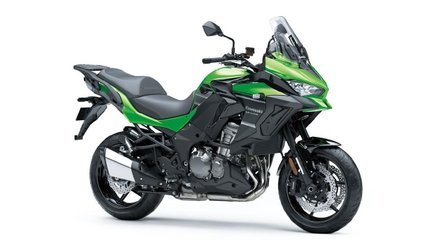
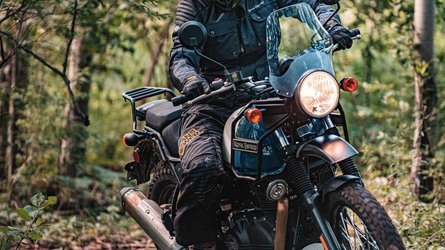
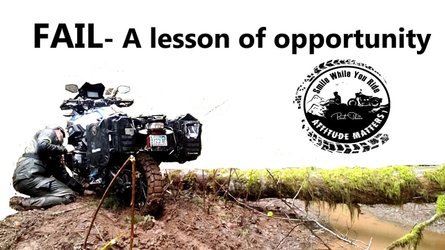
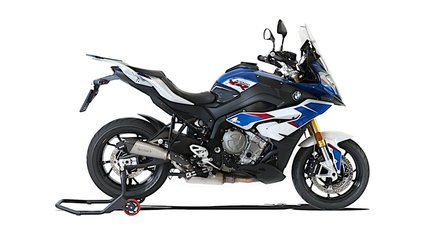
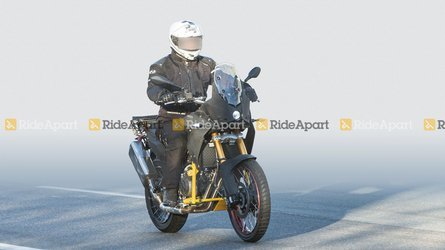
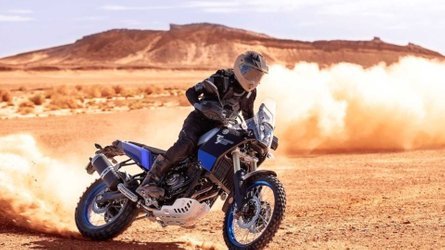
2021: The Year of the Motorcycle Brakelight, Part 2
in Motorbike news
Posted
2021 is the year of the brake light here at Ienatsch Tuesday. More speed, more brakes, more safety. (Aidan O’Dowd/)
Last week’s examination of changing your bike’s direction in less time and distance by using your brakes defines Champ School’s slogan of “faster, safer.” We discussed that every curve has a maximum safe speed at the lean angle you can use, so if we plan to increase our approach speed, we must use more brakes. More speed, more brakes…because the corner will not change for you.
I skirted around the edges of speed on the street, but I ain’t your mommy. Do what you want, but know that “faster” without “safer” is not sustainable or even survivable. What is “safer”? It looks exactly like a lit brake light.
Safer
This week is about riding more safely at the speed you choose in situations you don’t choose. In other words, we don’t crash on perfect days riding roads we know with zero surprises. We crash when something unknown and/or unexpected jumps into your riding life. Sometimes literally.
Increased speeds uncover riding-technique flaws and so do surprises, whether it’s a tightening radius, a sharp curve just over a hill, a car exiting a hidden driveway, or a truck pulling a U-turn from the shoulder. You can probably think of a thousand more examples, many of which you’ve seen, and I’m betting those experiences prompt Cycle World readers to continue to improve riding knowledge and skill.
Unfortunately, our industry loses some riders after a few surprise experiences. My belief is that improved braking knowledge and performance are the key to reducing painful and scary surprises.
Knowledge
The best riders in the world know that the brakes control speed, steering geometry, and front-tire contact patch. They illustrate this knowledge during the MotoGP coverage when the producers put brake and throttle graphs on the screen. Rarely will the green (throttle) graph disappear without the red (brakes) appearing. Straight-line braking shows a full bar of red, but watch during combination corners and you’ll see the tiniest of flashes of red when the green disappears because the riders need a little more load on the front tire, they need a little tighter steering geometry than simply closing the throttle will give them.
Could they make the corner without brakes? Probably. But maybe not with a full fuel load. Maybe not with a worn front tire. Maybe not on an inside passing line. We riders don’t do well with “maybe” in the same way a skydiver would stay in the plane if her parachute “might” open. Braking, even light braking, guarantees the front-tire load and steering geometry changes in a repeatable and adjustable way. With this braking approach, GP riders are safer and more consistent.
A GP rider’s goal is to win the world championship. Our goal is to reach our destination safely with a smile on our face and joy in our heart. These goals are not achieved when lying next to wrecked motorcycles, and the main place we American riders are dying is by running wide in corners.
Roll off the gas and onto the brakes; coasting means less control—especially on unknown roads and blind corners. (Jeff Allen/)
In Control
I don’t know if the majority of riding deaths are on roads unknown to the deceased, but many of us ride on unknown roads a great deal of the time. This morning I rode with Champ School’s Keith Culver in San Diego County and the roads we enjoyed were new or barely known to me.
The amount of time Keith and I were out of the controls during the backroad ride could be measured in seconds over the entire three-hour jaunt. That means there wasn’t much closed-throttle, no-brakes coasting. This in-the-controls approach is what brings safety to the speeds you choose in situations you don’t know or expect.
To add safety to your curvy-road riding, squeeze on your brakes when you close your throttle and leave that brake light on past the turn-in, the point at which you add lean angle. You’ve closed the throttle because you want to slow, so put an adjustable slowing component in place, rather than hope the engine slows you.
Feel This
Know that you must refine your braking feel so that you can sneak on 1 percent of your available brake pressure if needed. Half a percent, building to 6 percent, trailing and holding at 3 percent—that is the touch you see in the flicker of the red braking graph during GP, and you need it. This ability to sneak on these small brake pressures is what allows us to be in control at corner entries, to have our brake pads against our rotors, and to be gently scrubbing speed. To be ready for anything.
It’s easy to get in this sport and think, “Leave the brakes alone as much as possible, and when you need them, use them quickly and hard…then leave them alone.” One hundred percent wrong. It’s the light touches that allow you to survive a cold, rainy day or an overzealous corner entry into a curve that tightens…or a GP career. See our 100 Points of Grip video for more on the mandatory mastering of the brakes, especially the front.
Brake Light On
I led a lot this morning and practiced this approach of turning into unknown corners with my brakes on. I over-slowed a few times when the blind corner opened up more than expected, but that over-slowing does not hurt a motorcycle rider. We are not running wide due to over-slowing. Using my brakes to control my speed and steering geometry into corners made this morning’s ride with Keith a true joy.
My friend and I weren’t relying on luck, lean angle, or road knowledge to enjoy the corners, we were using our brakes to help our bikes steer into the corner and match our speed (at our chosen lean angle) to each corner’s radius. Our eyes searched into the corner, we closed the throttle to the brake lever when we got nervous, and we steered in while adjusting our speed with the brakes.
If this is new and intriguing to you, find a clean parking lot and run in a circle in second gear. Study what happens to your radius when you hold the throttle steady. What happens when you close the throttle? What about accelerating? What about closing the throttle and gently braking? You can probably guess what will happen, but you need to do this experiment because we are running wide in corners and dying. You don’t need theory, you don’t need Mr. Know-it-all Nick telling you. You need to realize how important slowing your motorcycle for corners is, and how much better your motorcycle slows when you close the throttle and gently apply brakes.
We will close the Year of the Brake Light, Part 2 with a long caption.
We don’t crash on perfect days, we crash when our skills can’t meet an immediate challenge, in this case gravel (deer, boulder) around a downhill, tightening-radius corner with oncoming traffic. This might be a corner these riders know, but this Sunday morning there’s something significant in the lane.<br /> <br /> Rider B is out of control, literally. He has closed his throttle, his braking fingers are still wrapped around the throttle drum, and he’s using engine-braking to slow his bike for the corner. He’s been through here 100 times and this has always worked. Until today. Because he can’t slow his bike any more—engine-braking is not adjustable, you can’t close the throttle more—he can’t tighten his radius to go to the right of the gravel. He either hits the gravel or stands the bike up into the truck. <br /> <br /> Why doesn’t he lean over more? Because lean angle is not infinite. Perhaps he’s already at the bike’s limit (undercarriage dragging or tires slipping), it’s cold and raining, and there’s no more grip; he’s scared to lean over further. <br /> <br /> But wait, there’s additional possible drama with Rider B. When he realizes his only option is to slow his machine and go to the right of the gravel, he unwraps his fingers from the throttle drum and reaches them out to the brake lever, or moves his boot off the right footrest to the brake pedal. That takes about half a second, meanwhile his bike is hurtling toward the gravel and F-350. By this time he’s beyond panicked and grabs the front brake lever or stabs the rear brake pedal. Drama ensues. The lesson I hope you’re hearing: Close the throttle with your fingers already outstretched so they land on the brake lever, even in corners/intersections you don’t plan to brake for. An additional half-second of braking is a lifesaver.<br /> <br /> Rider A enters the corner with light braking, just enough to fire her brake light and put the brake pads against the rotors. The throttle is shut, the brakes are on, and she is in control and ready for anything unexpected. <br /> <br /> Both riders see the gravel at the same point in the corner and Rider A’s heart rate stays steady because she’s got her speed and geometry control in place. Like Rider B, she doesn’t have unlimited lean angle available, but as her speed reduces in an efficient and adjustable manner, her radius tightens at the lean angle she chooses. (You discover this on your own, in the parking lot.)<br /> <br /> As she accelerates off the corner she thinks, “I’d be silly to close my throttle and not sneak on some brakes. Sure is a beautiful day. I just love riding motorcycles.” (Robert Martin/)
More next Tuesday!
View the full article